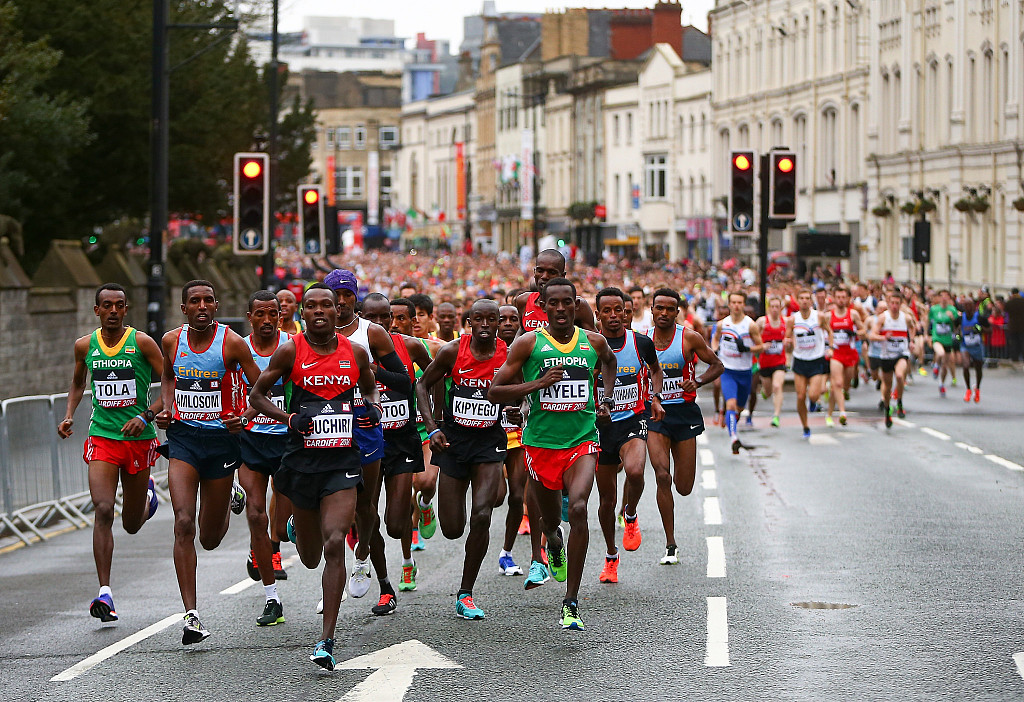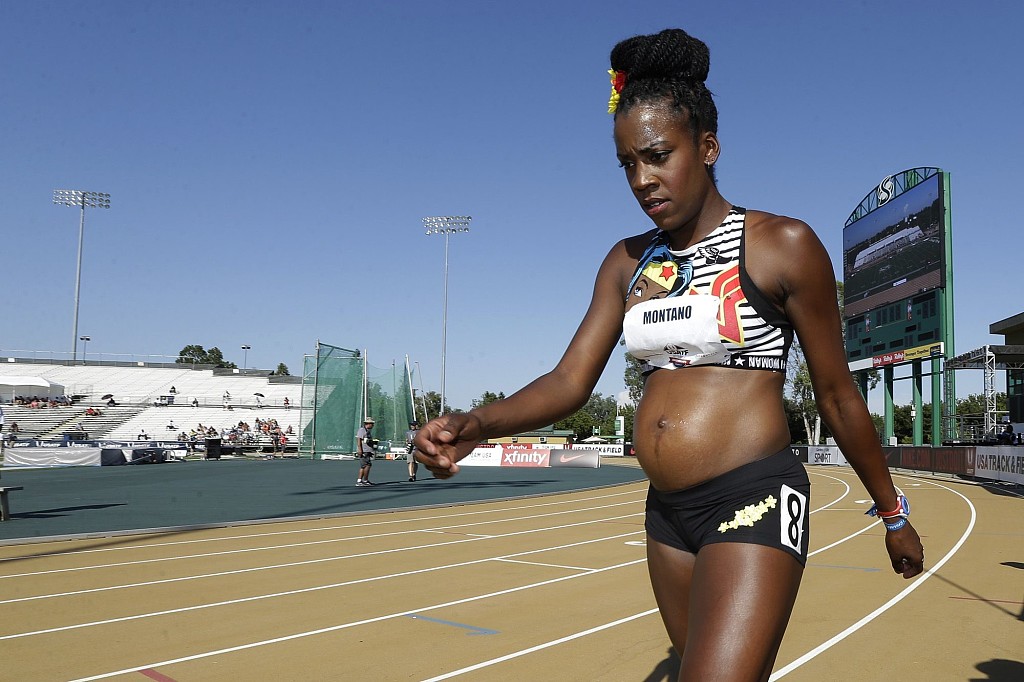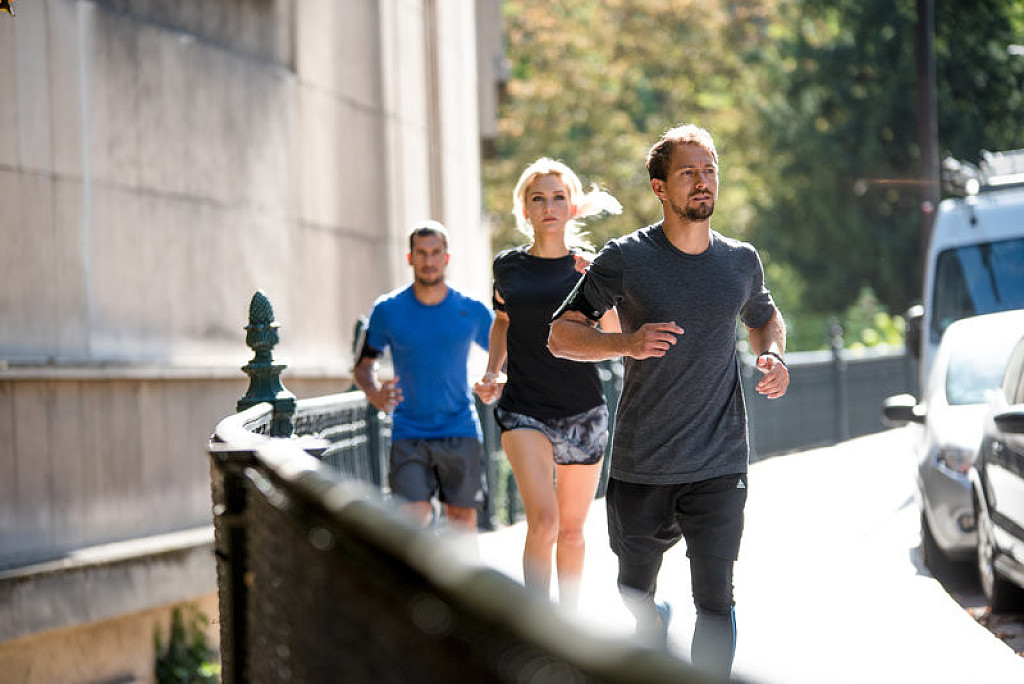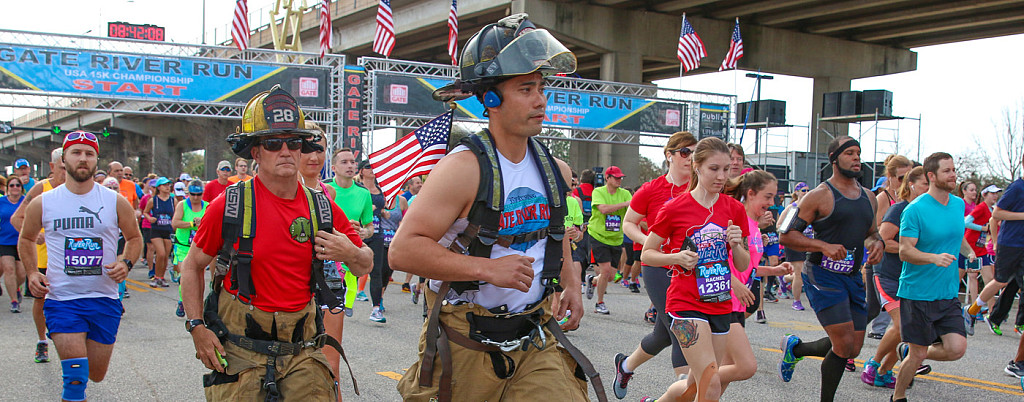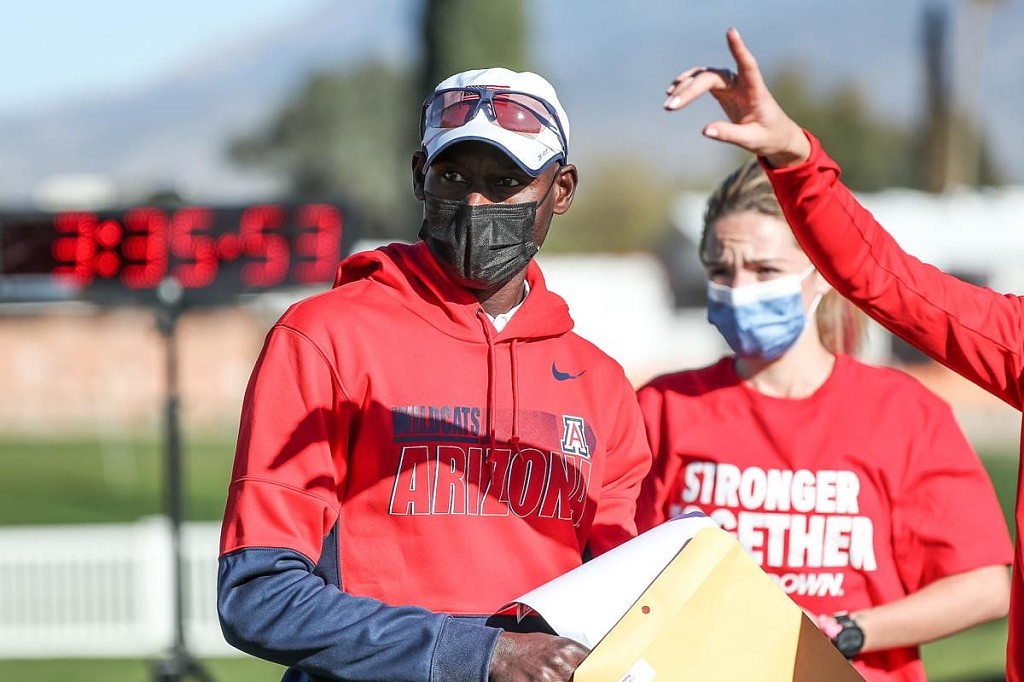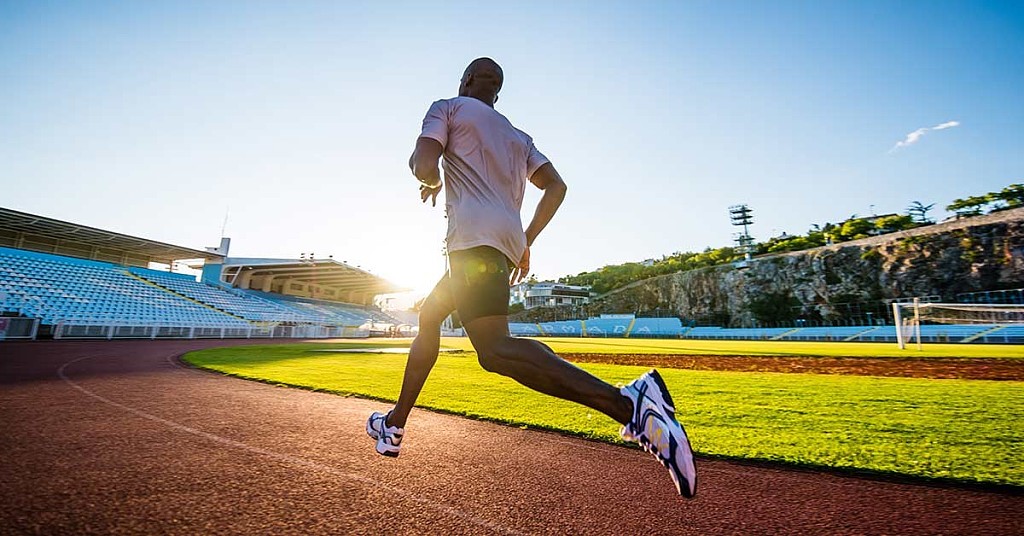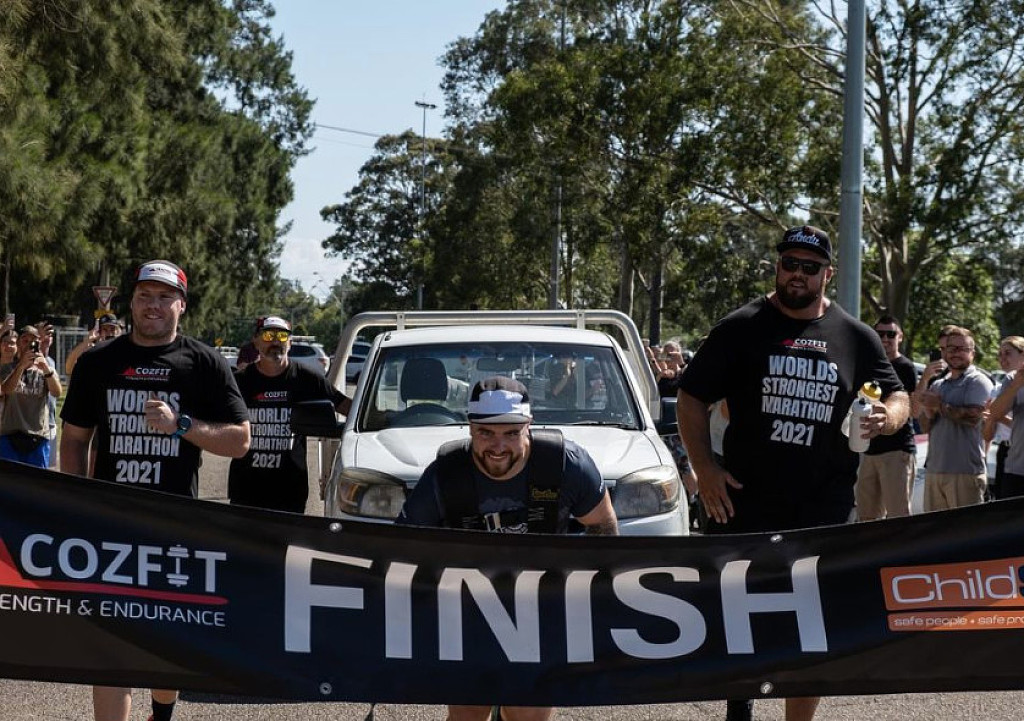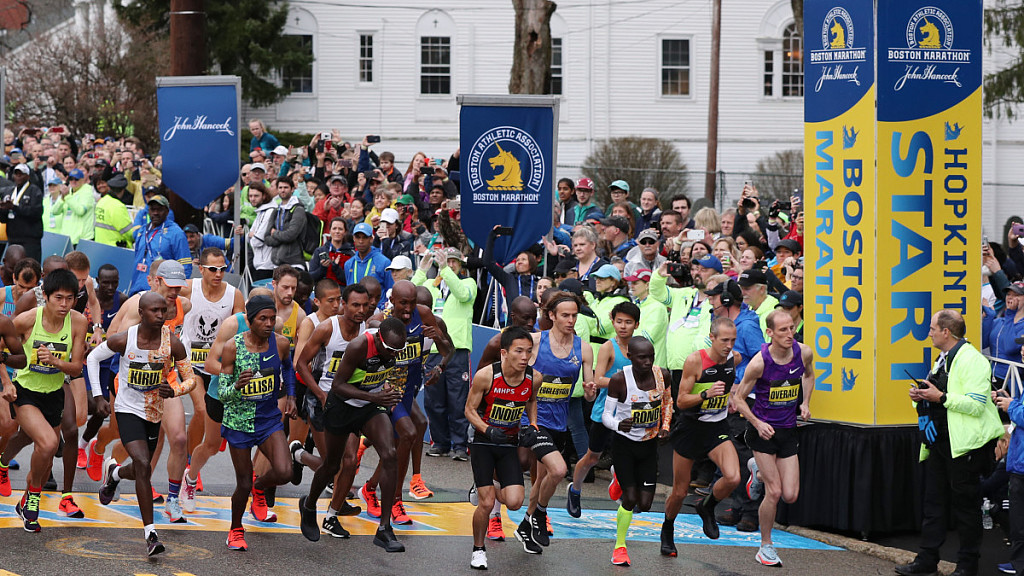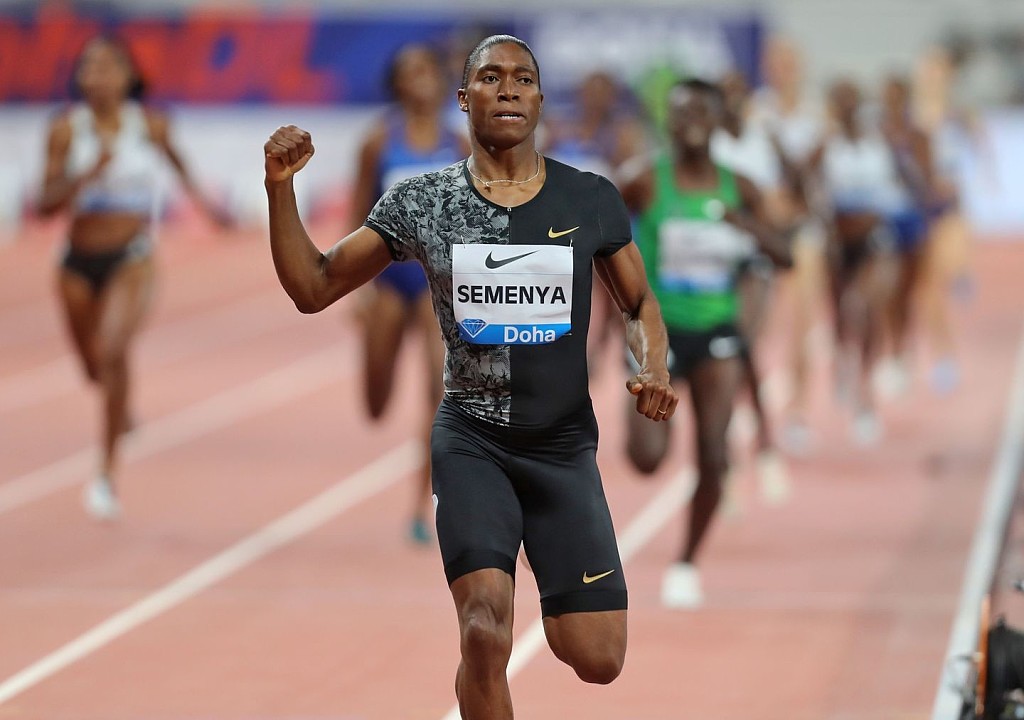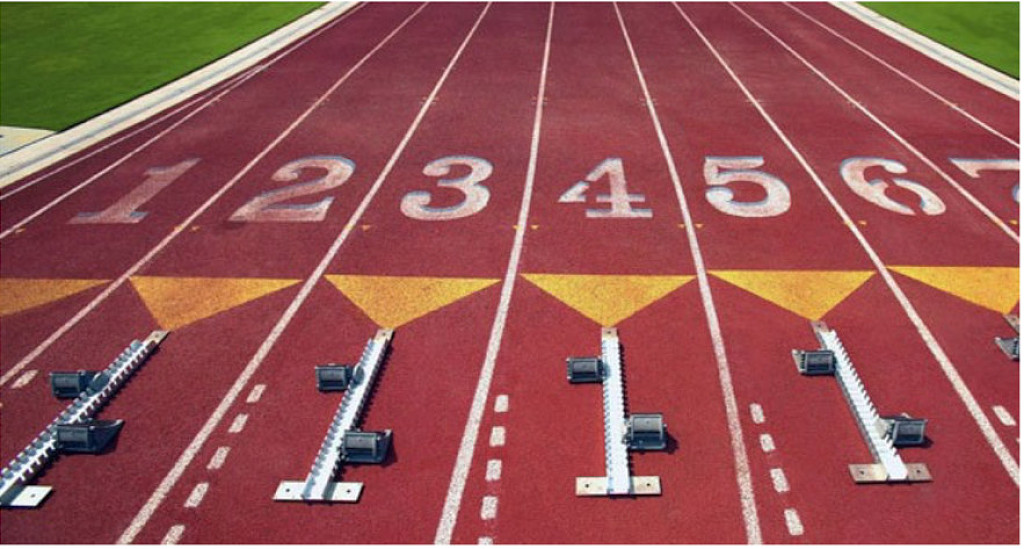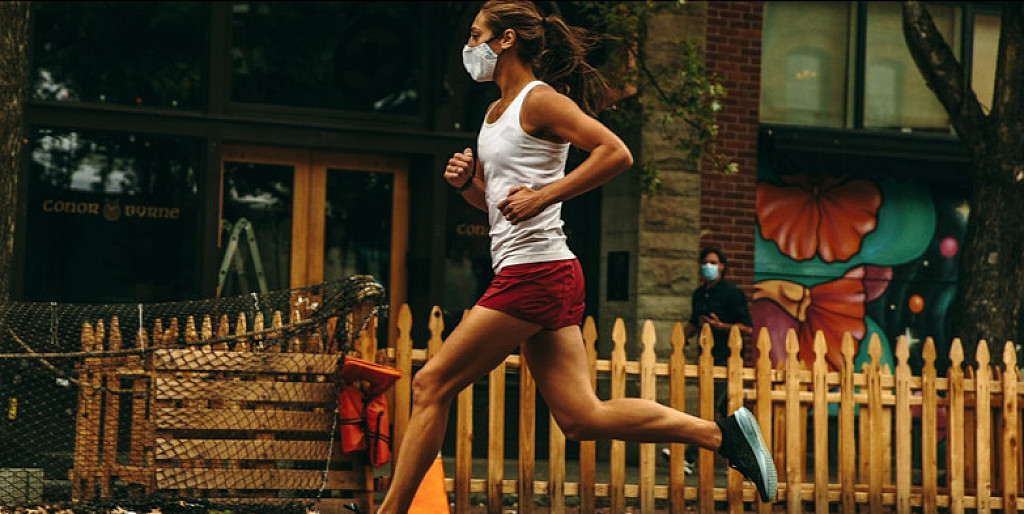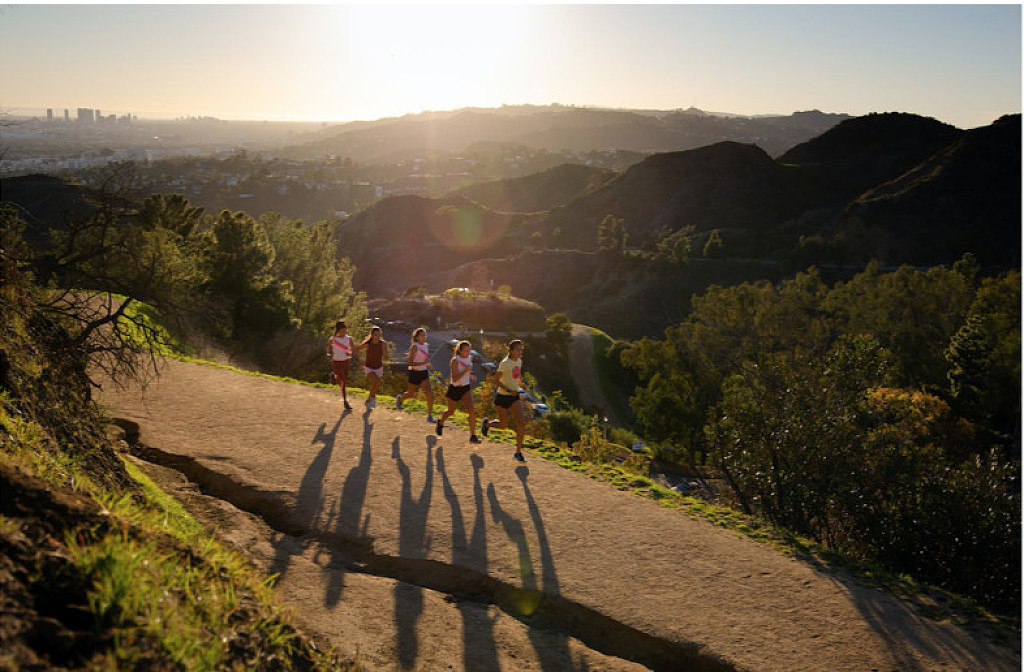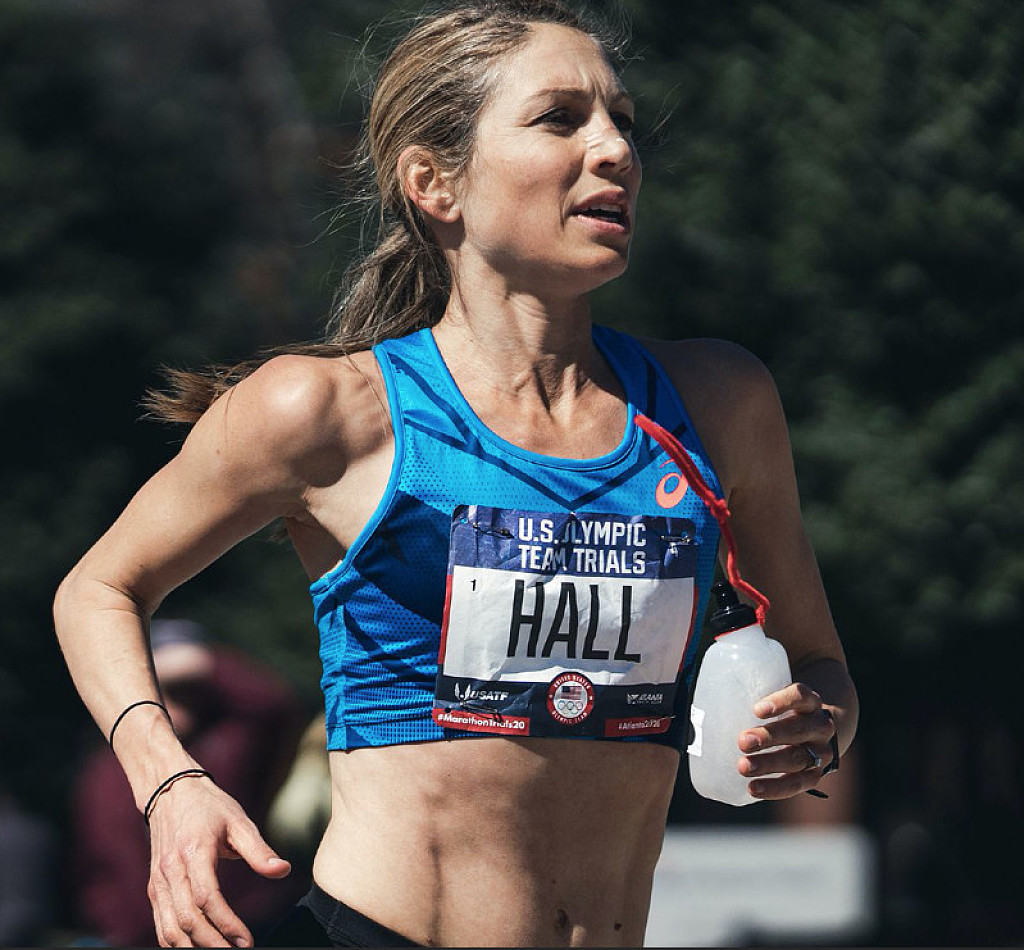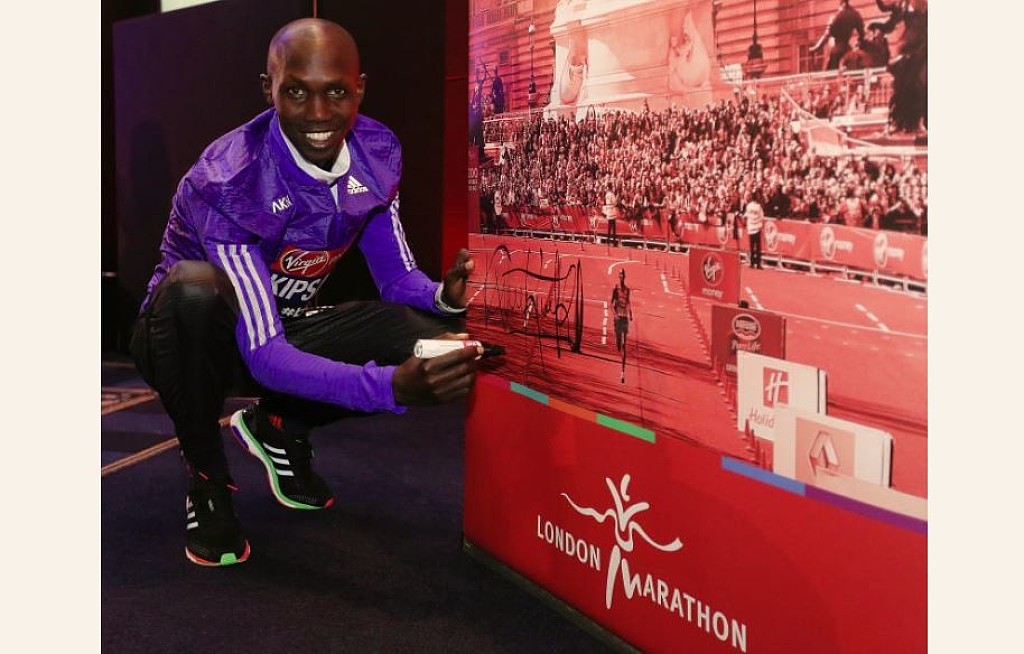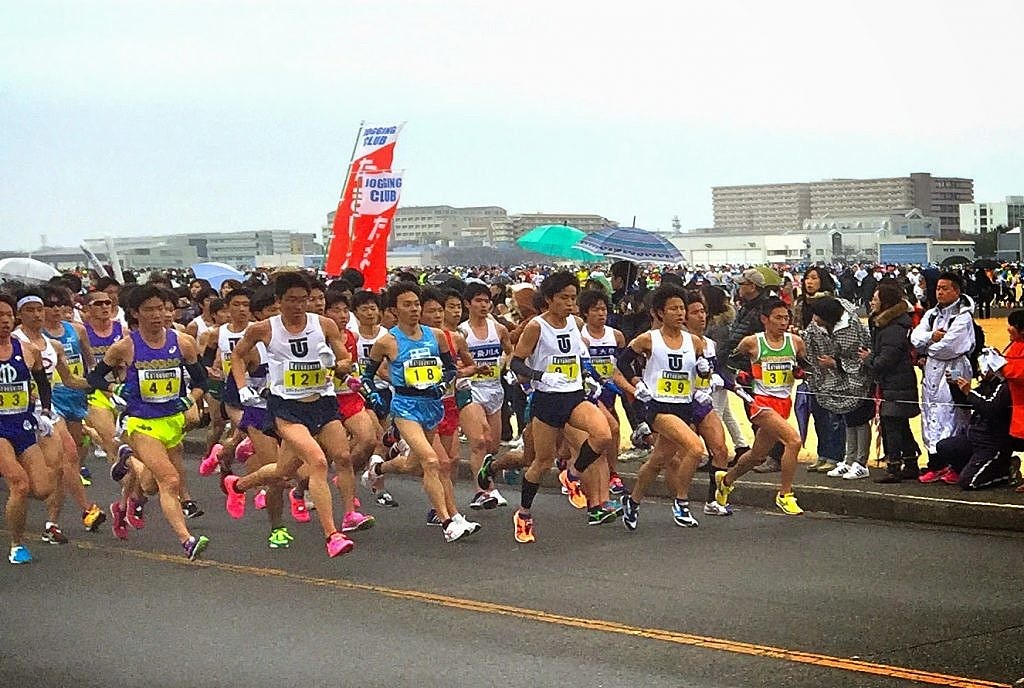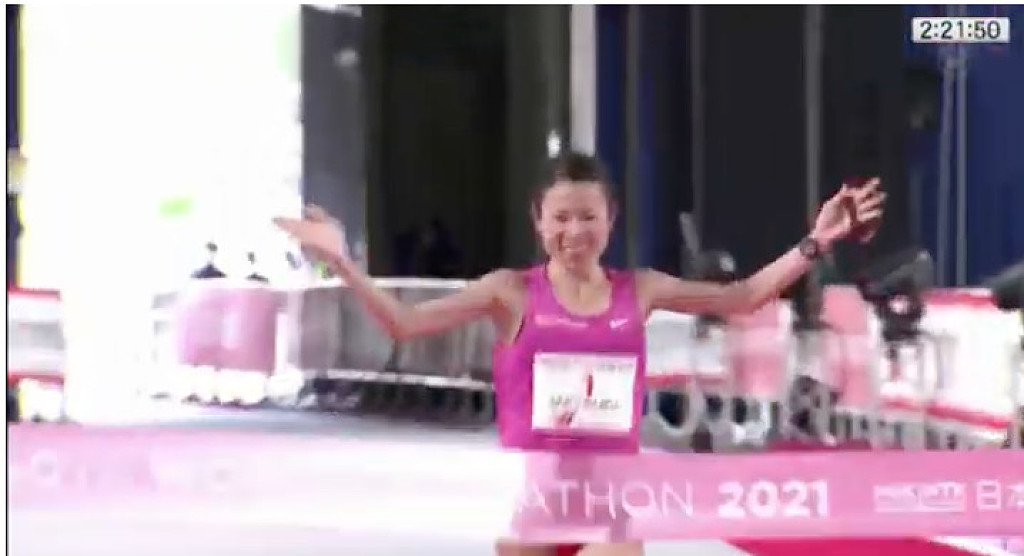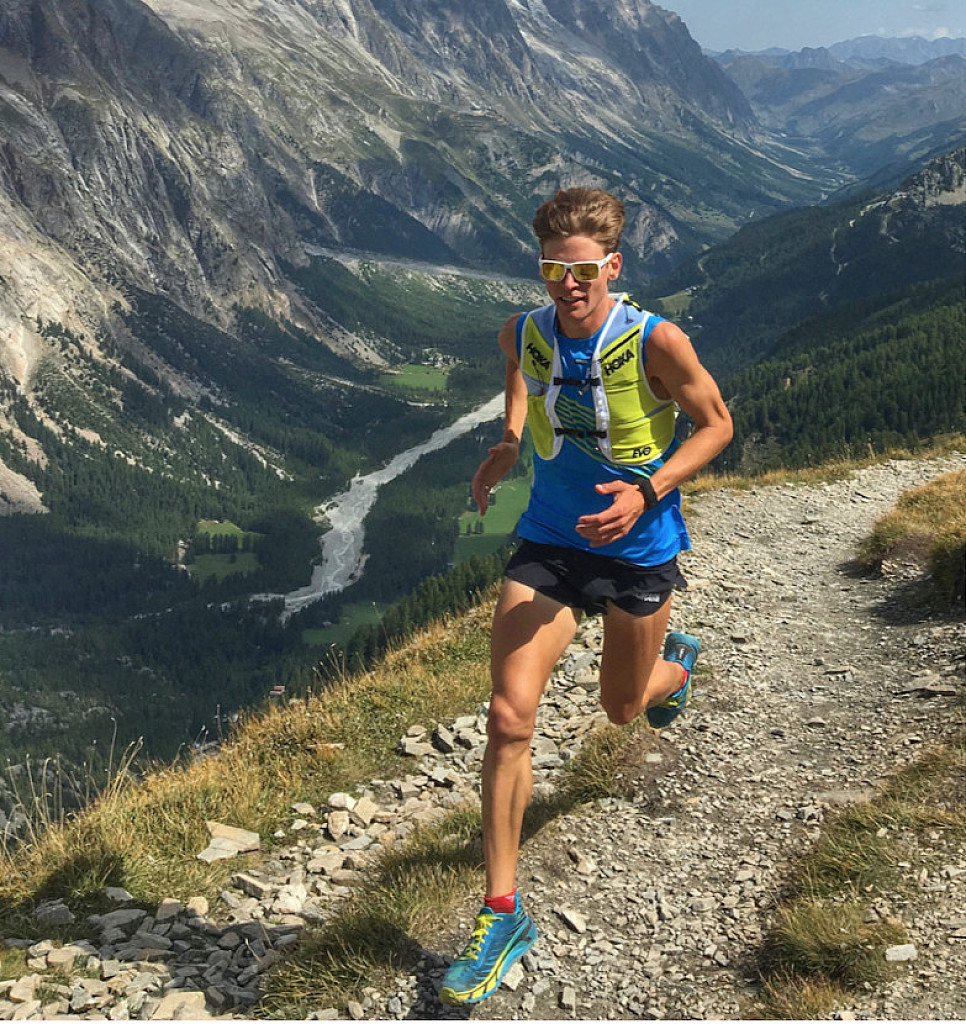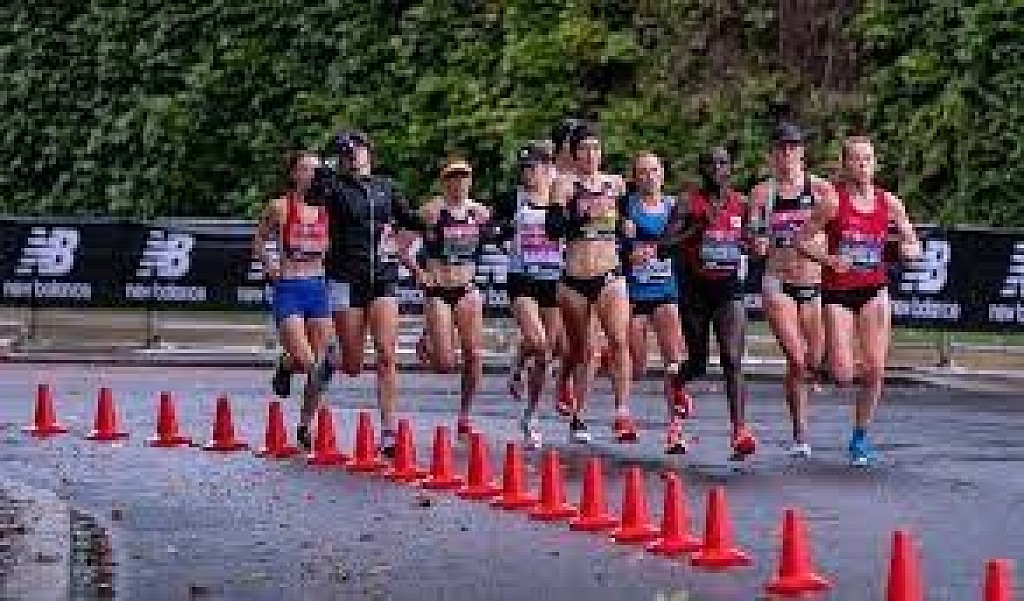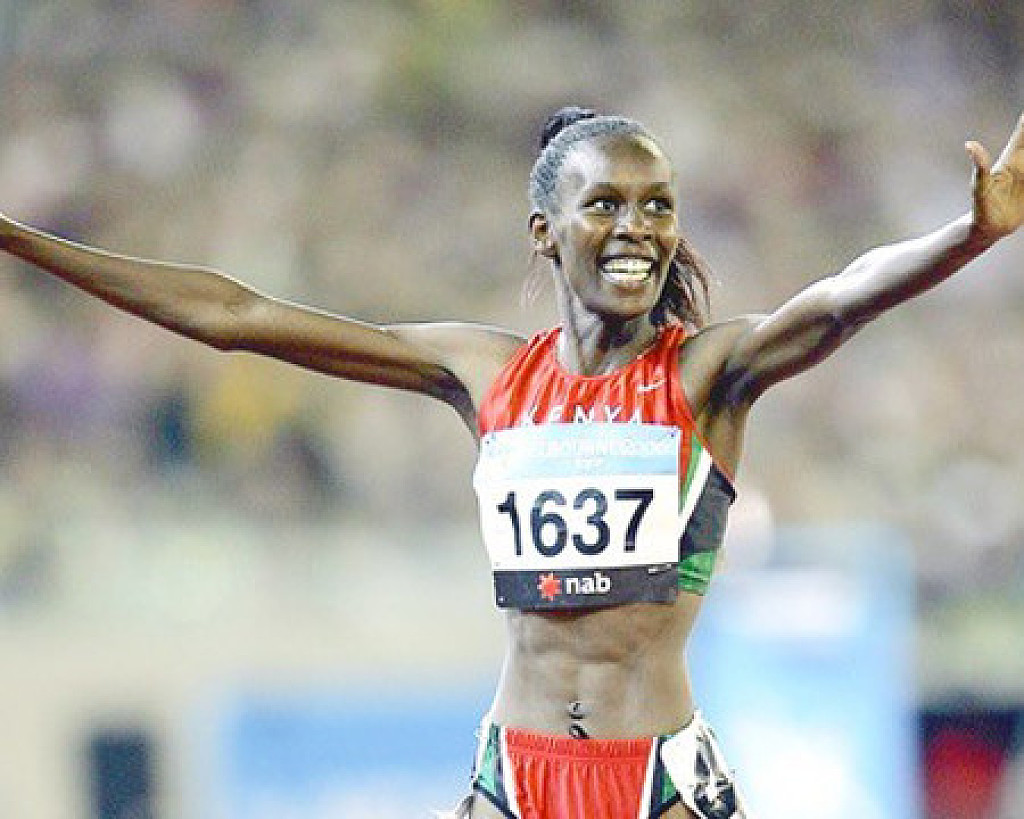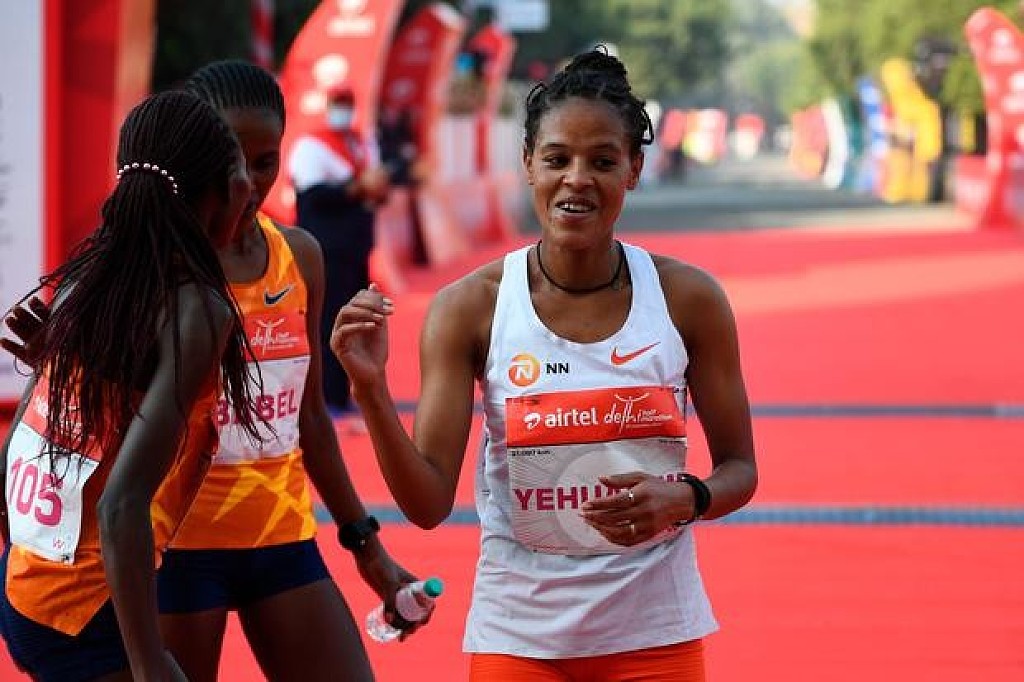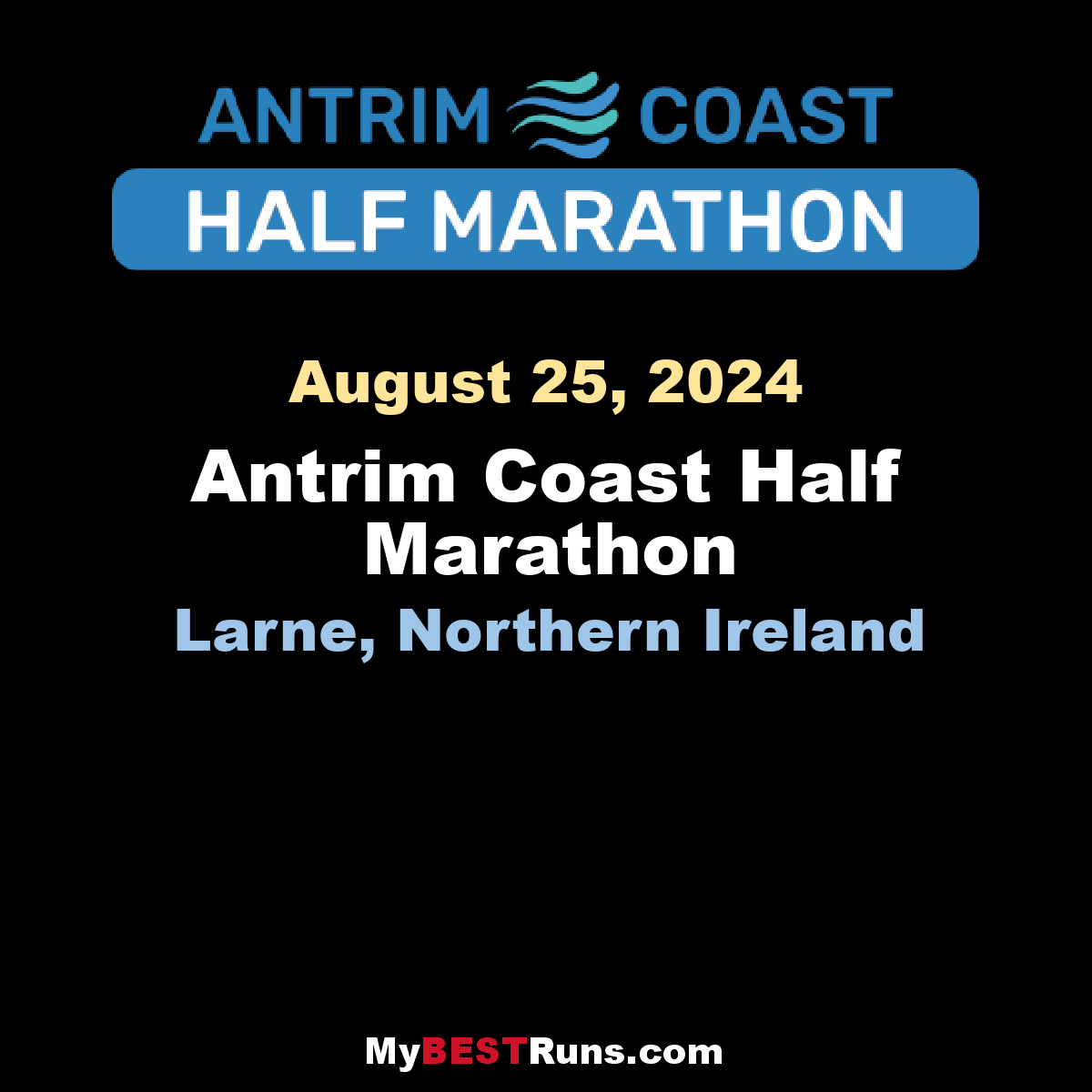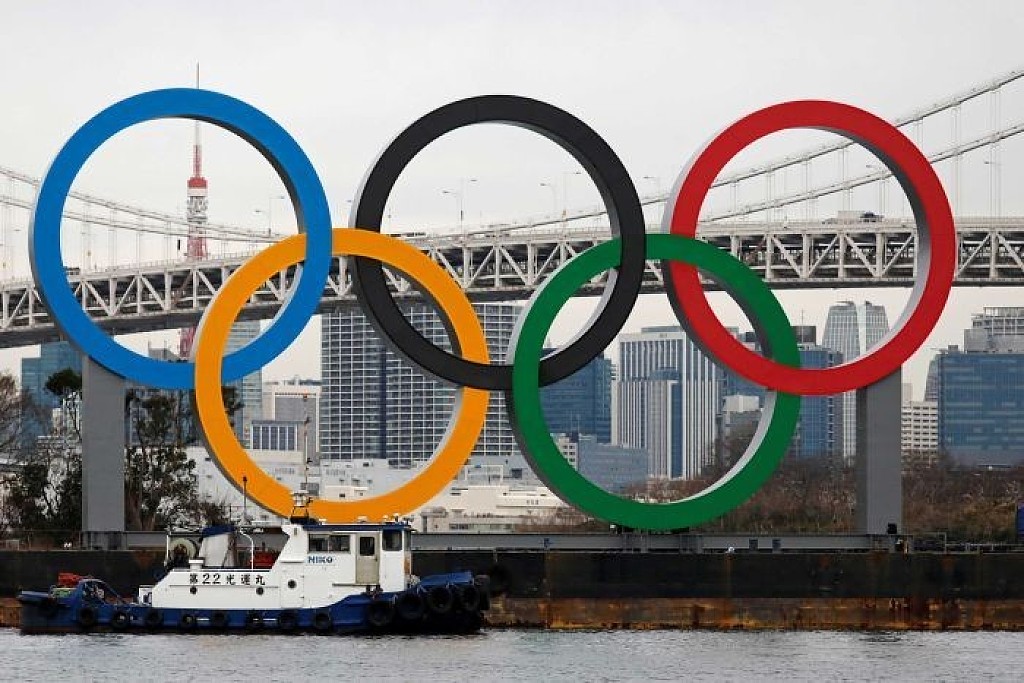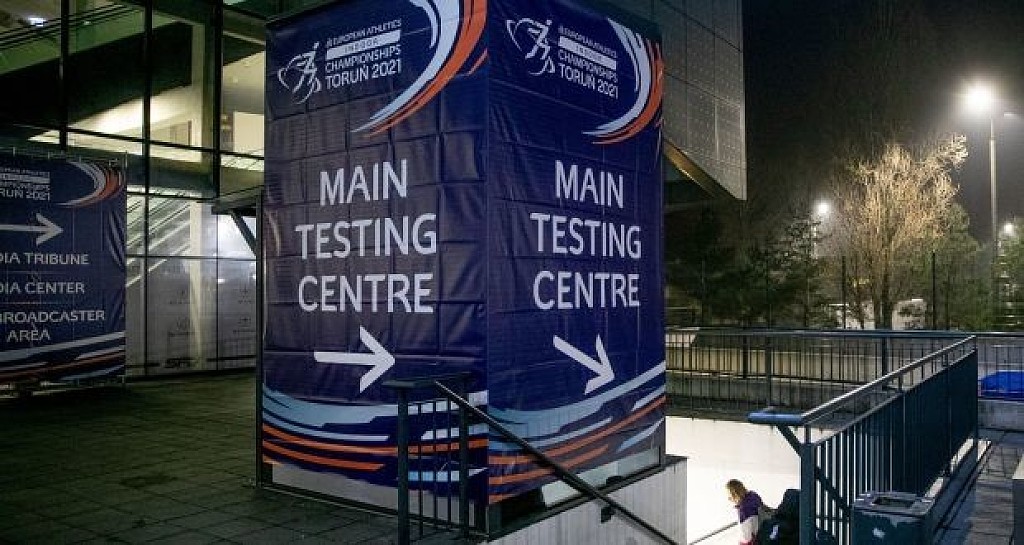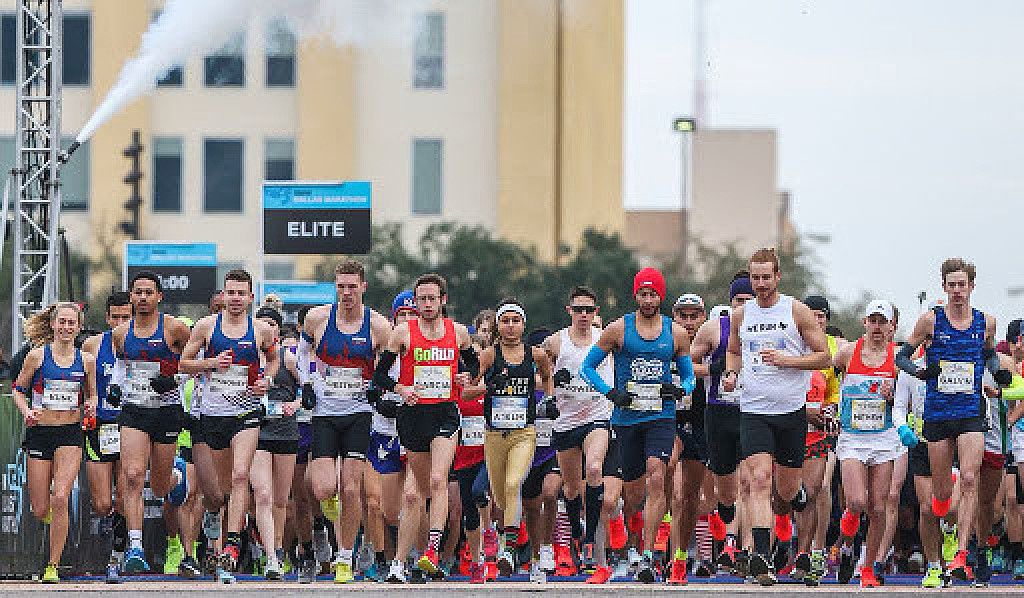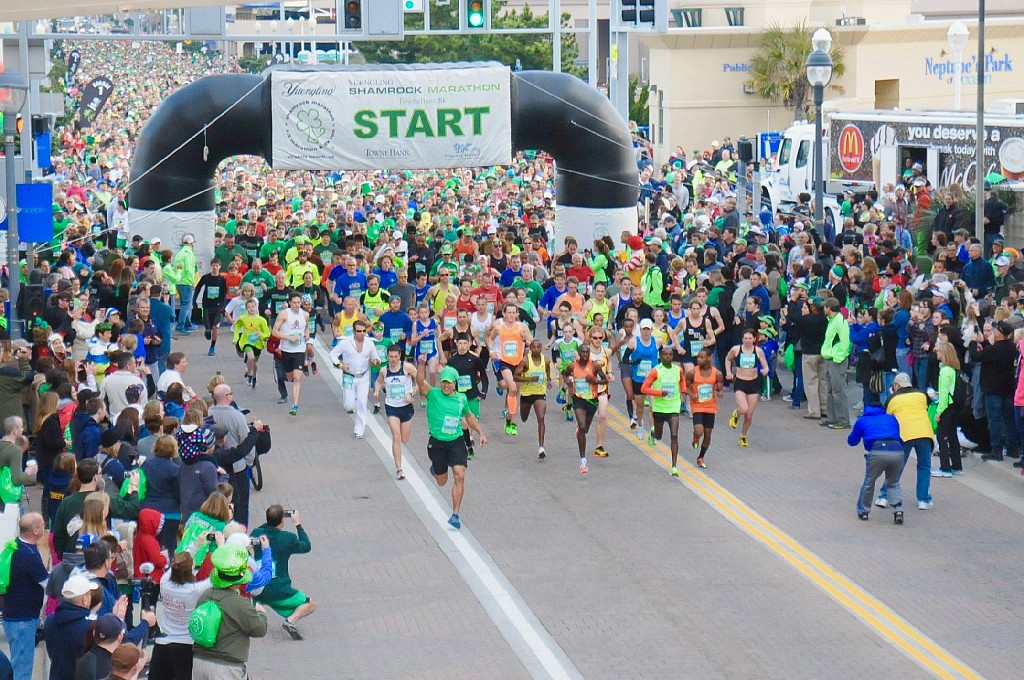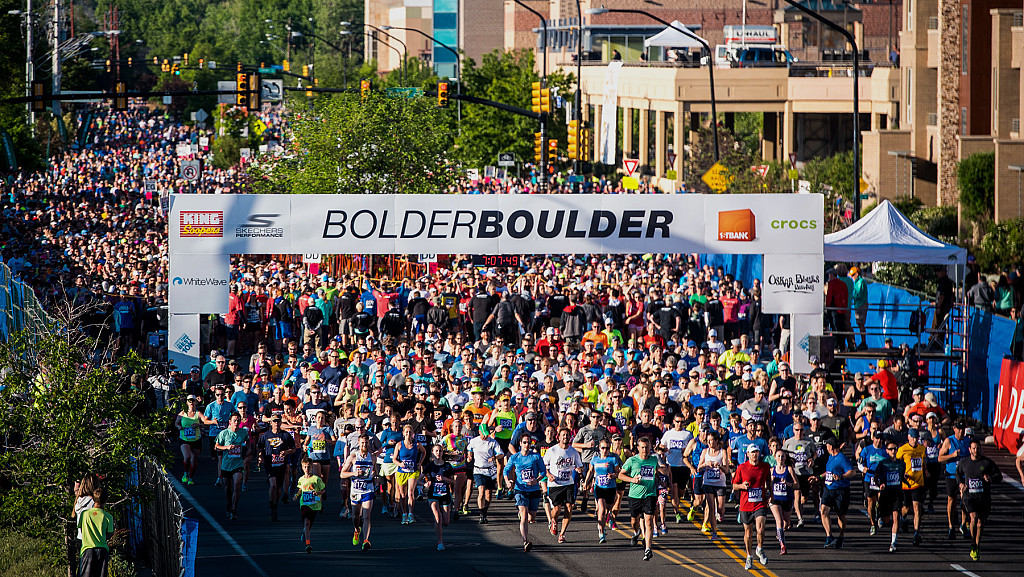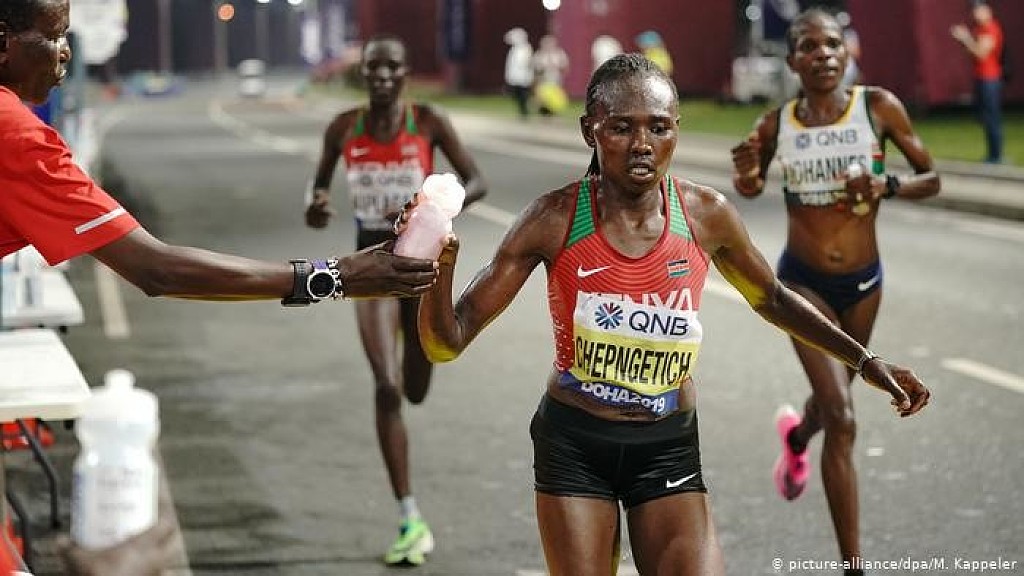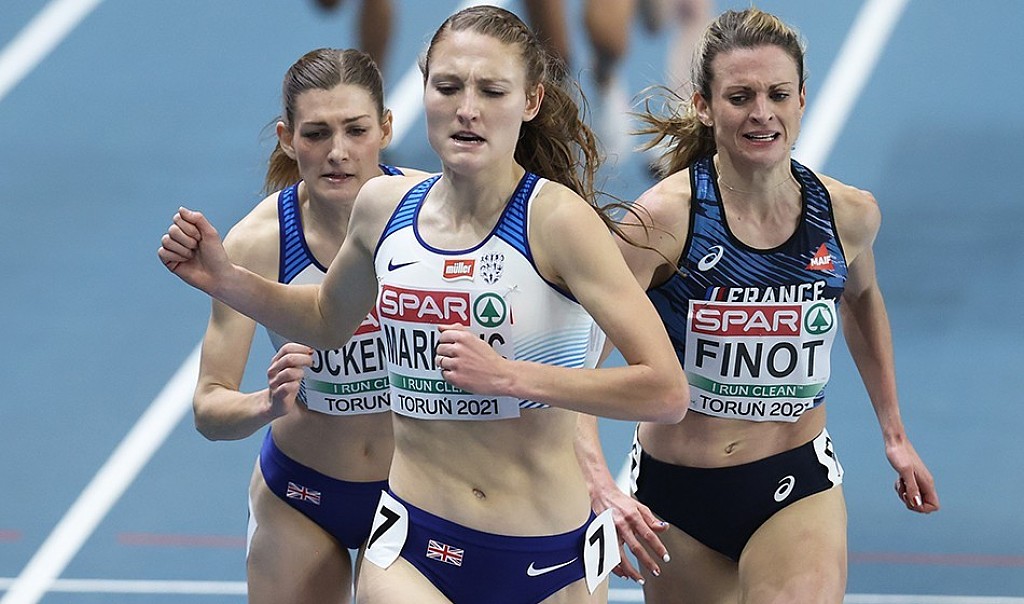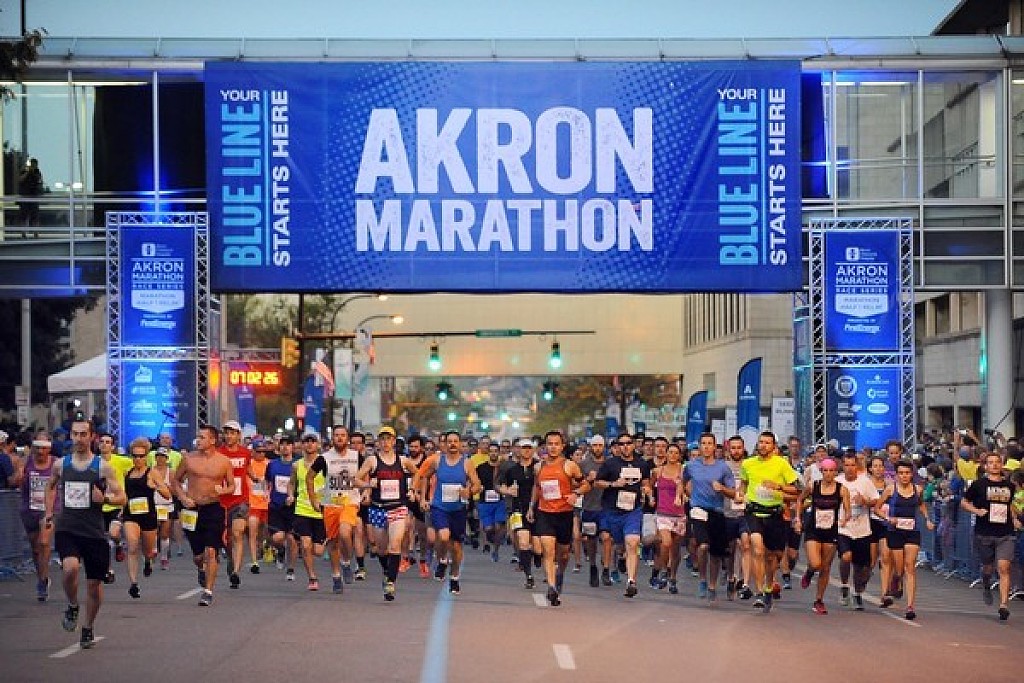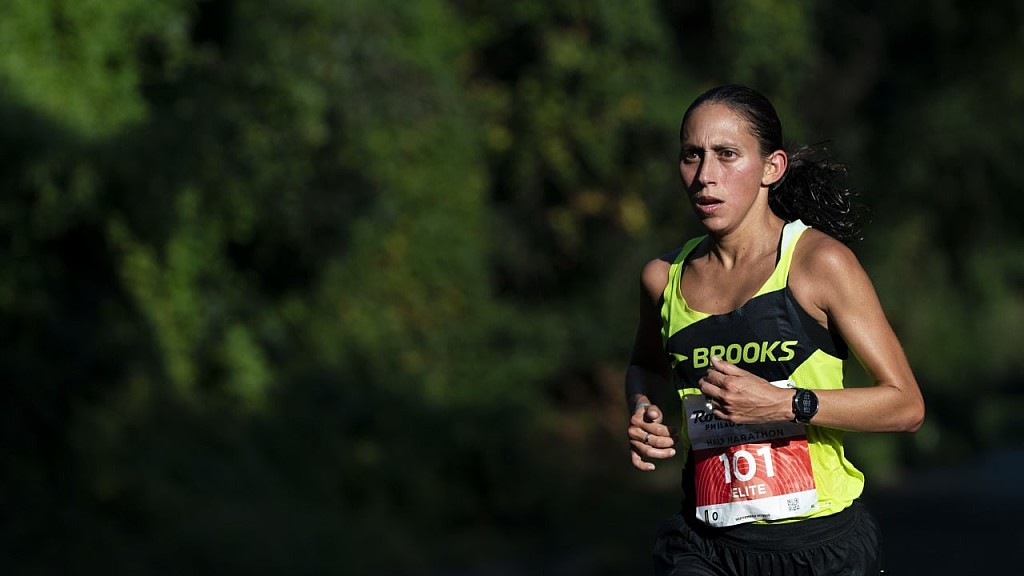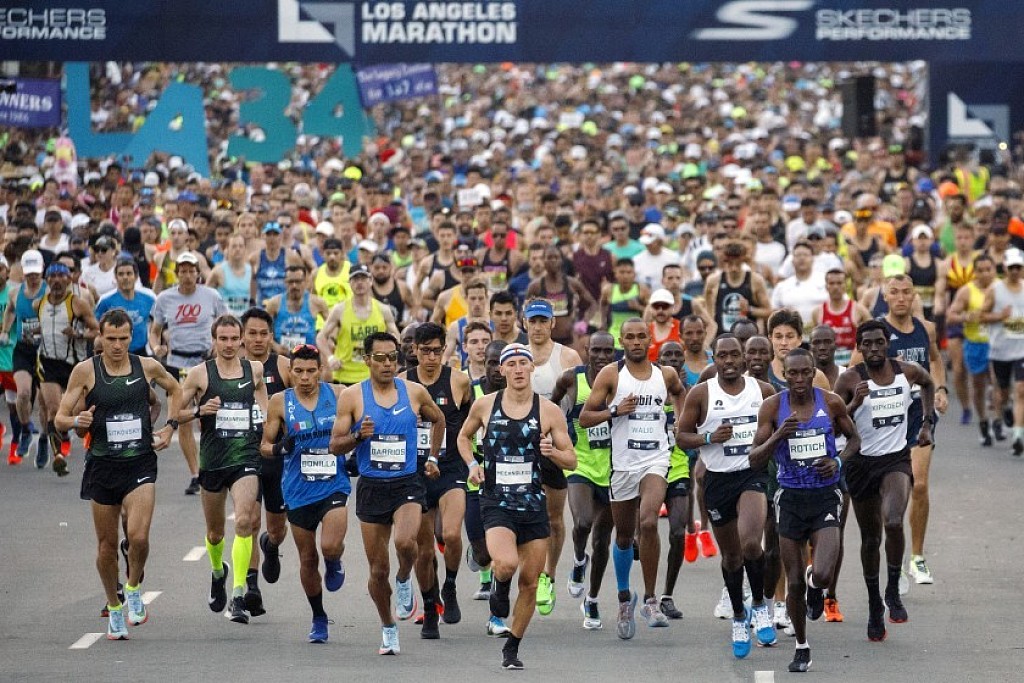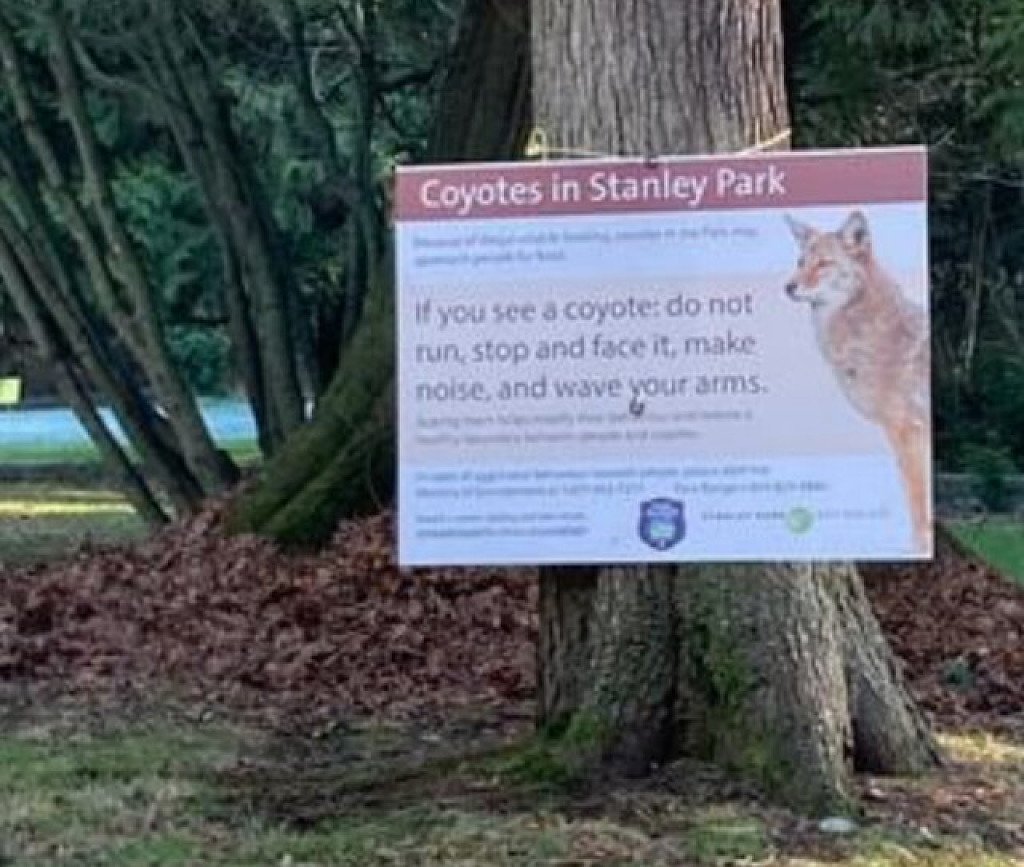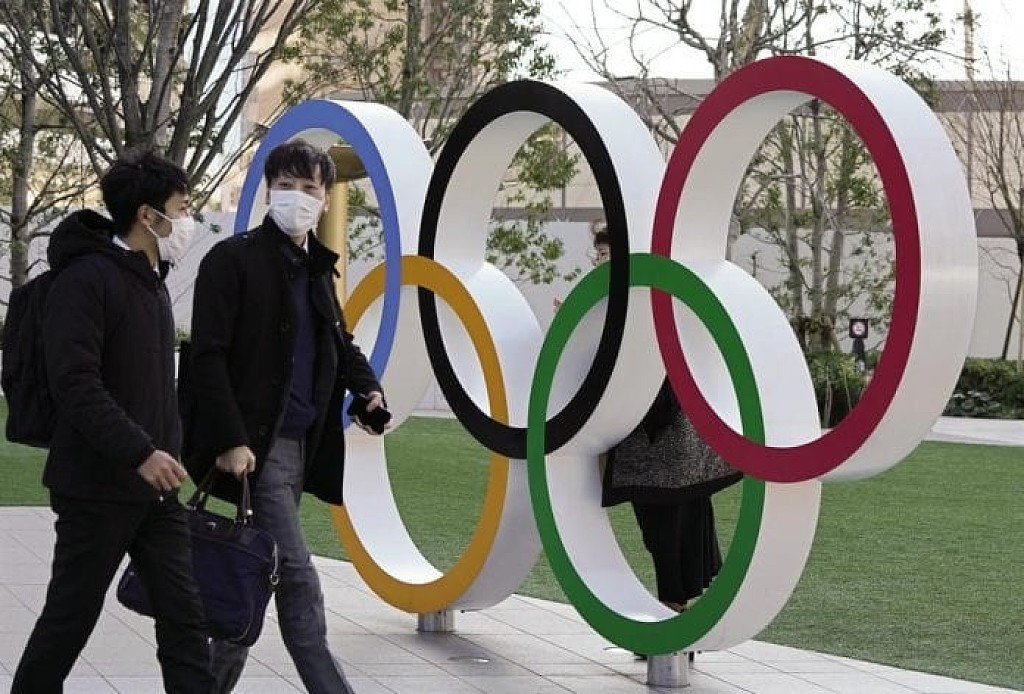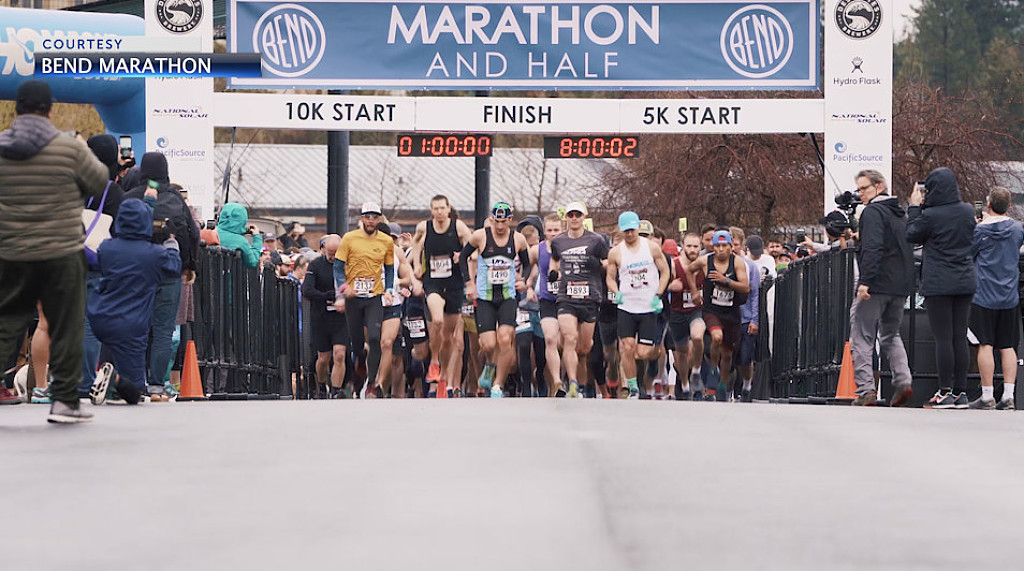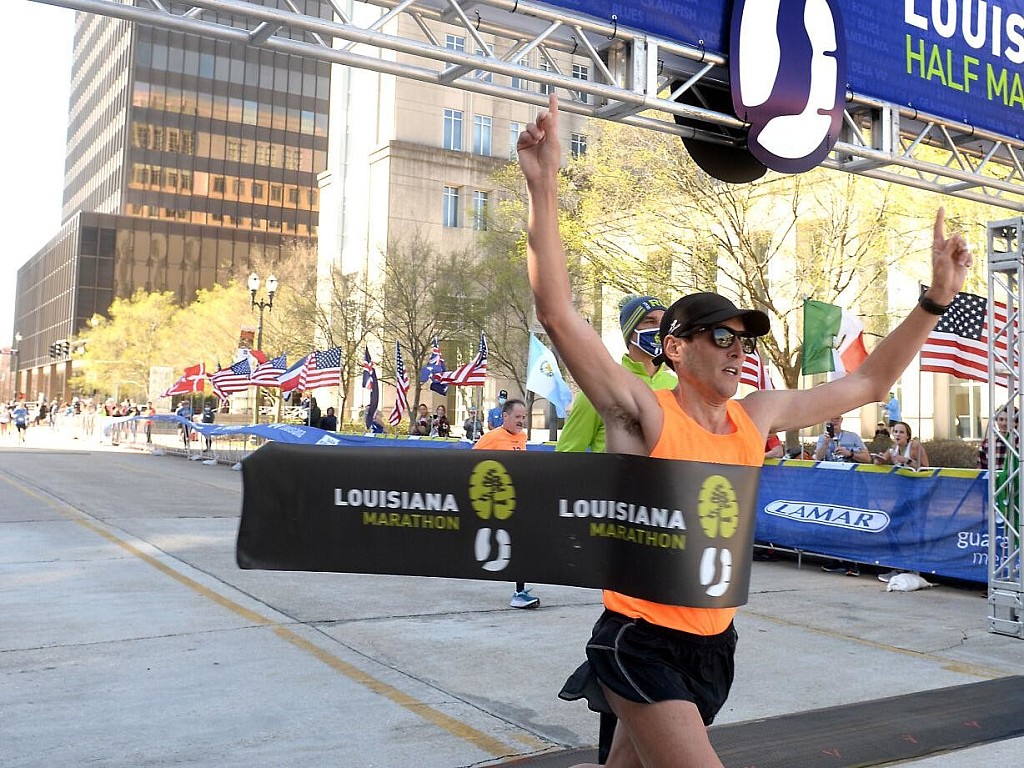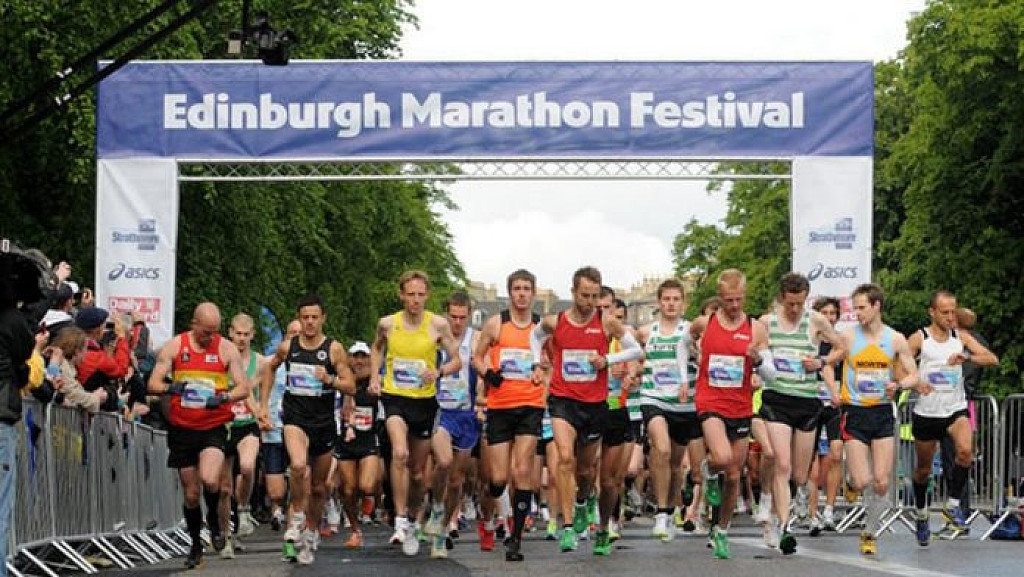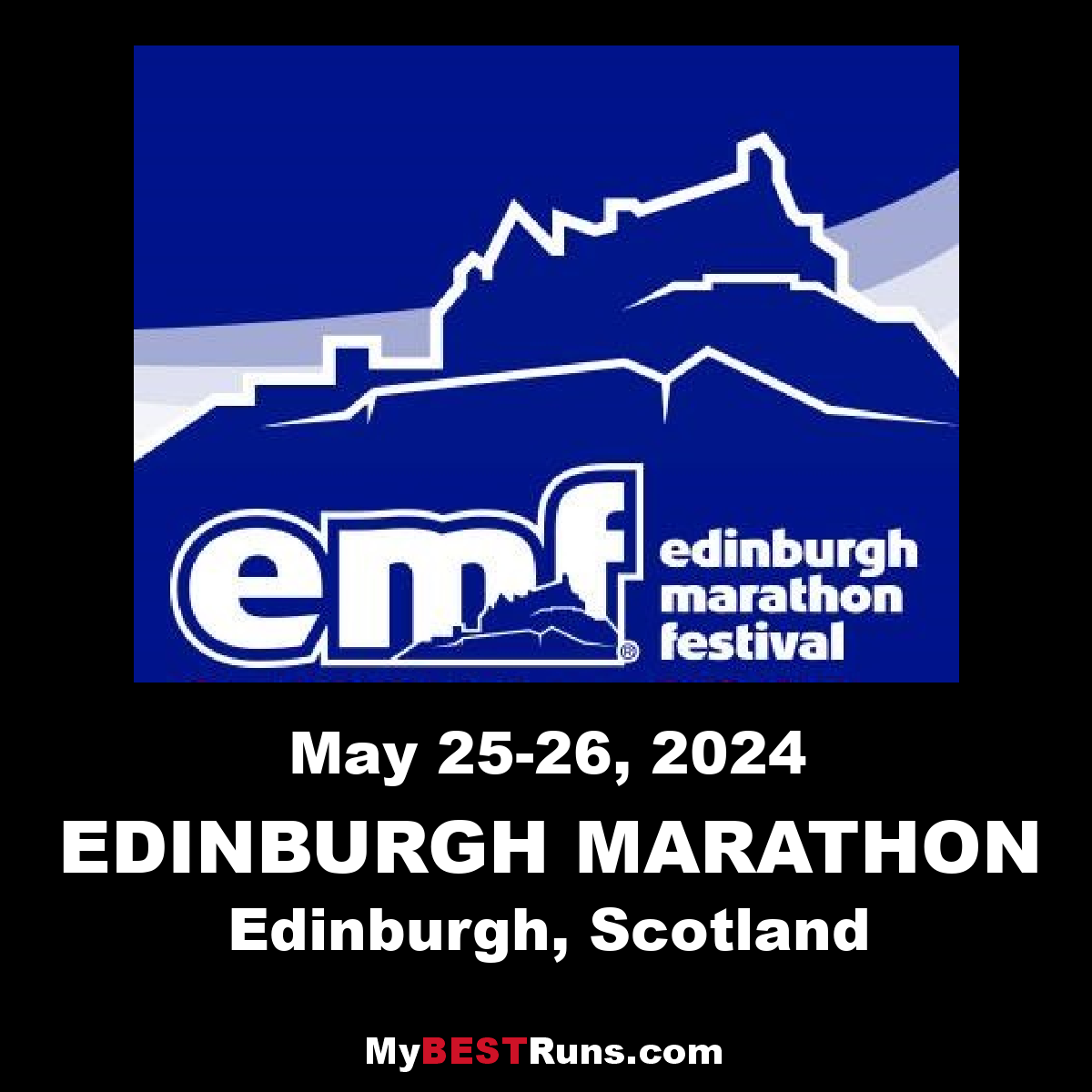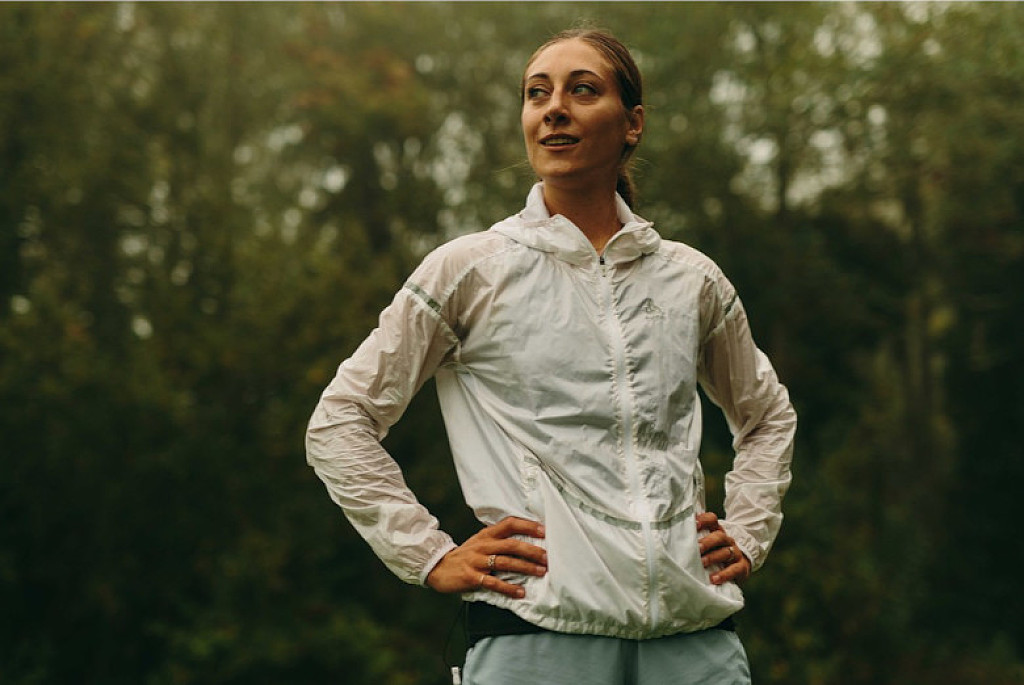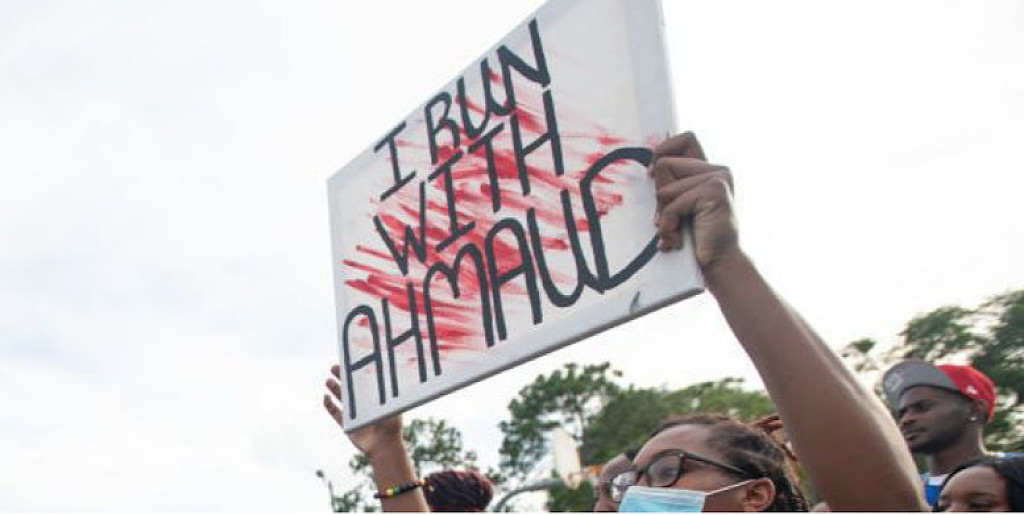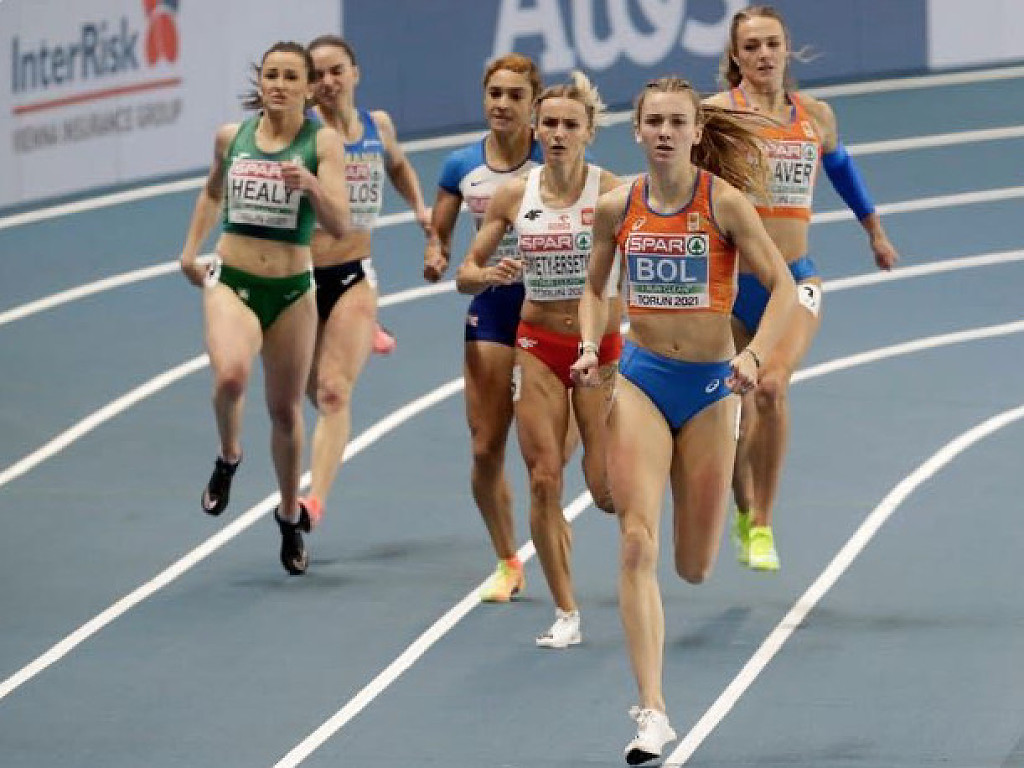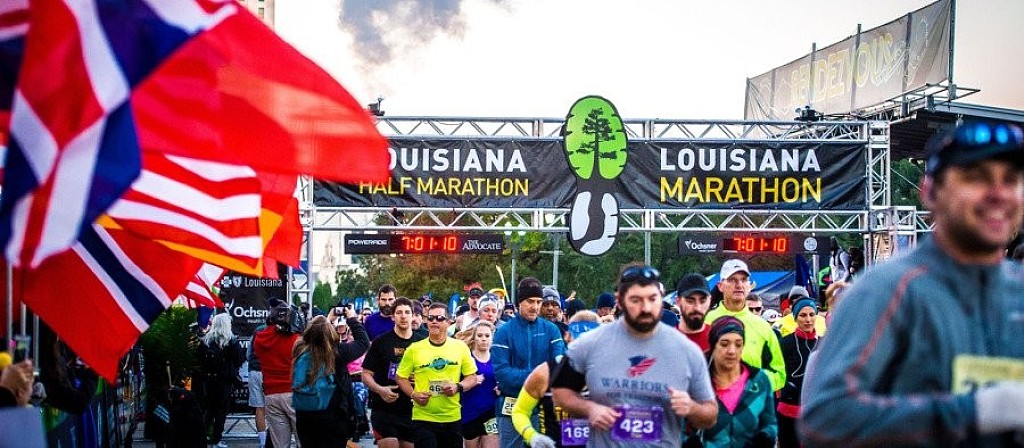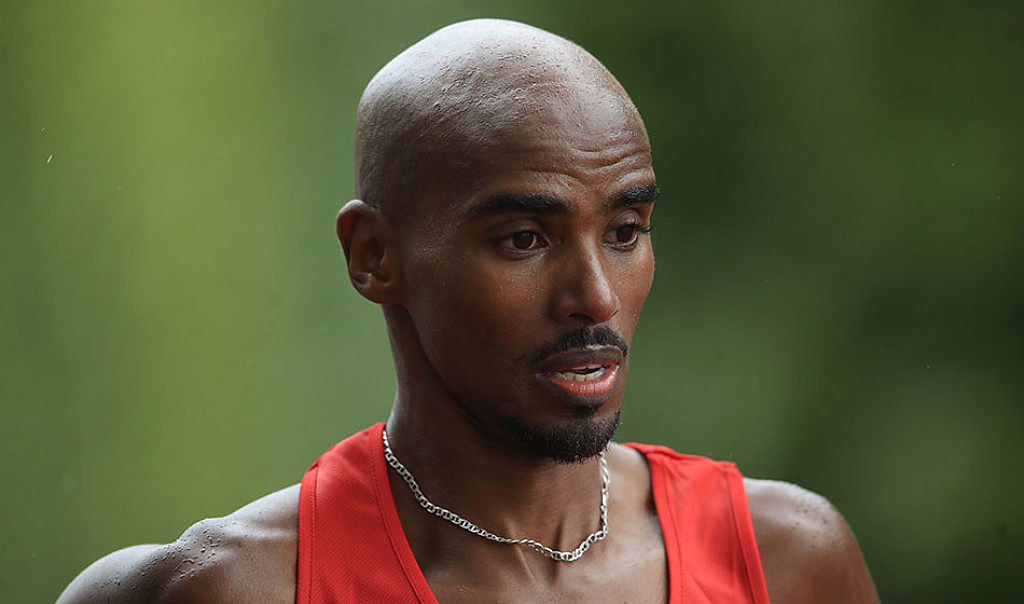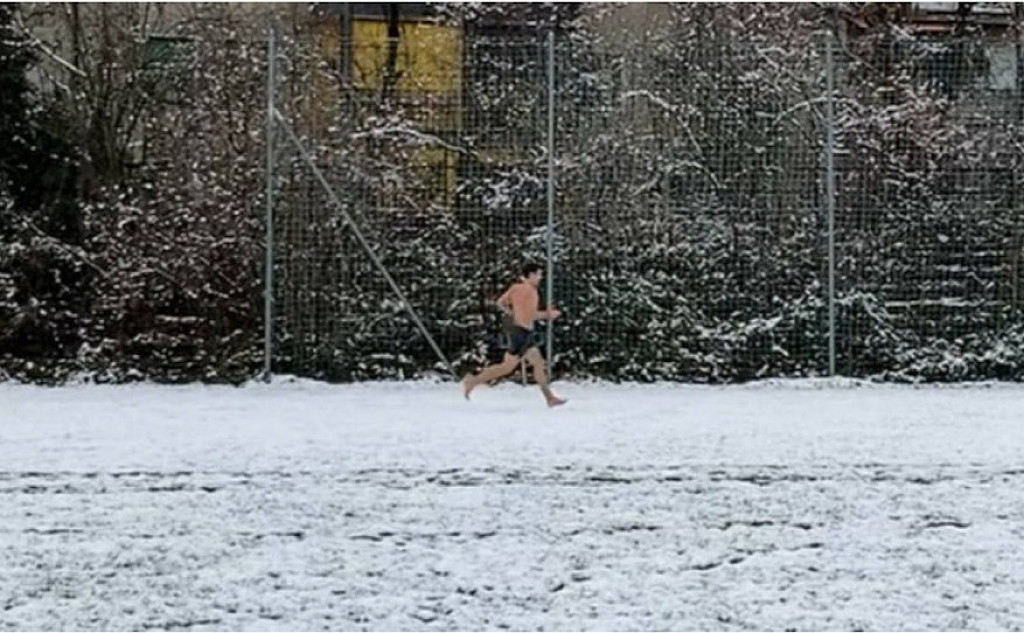Running News Daily
Running News Daily is edited by Bob Anderson. Send your news items to bob@mybestruns.com Advertising opportunities available. Train the Kenyan Way at KATA Kenya and Portugal owned and operated by Bob Anderson. Be sure to catch our movie A Long Run the movie KATA Running Camps and KATA Potato Farms - 31 now open in Kenya! https://kata.ke/
Index to Daily Posts · Sign Up For Updates · Run The World Feed
Twelve cities from around the globe have expressed interest in hosting the inaugural World Athletics Road Running Championships in 2023
The strong international interest in hosting this new event, which will combine elite and mass races in a unique format, is a ringing endorsement of a festival concept designed to unite the international road running community.
The creation of the World Athletics Road Running Championships, incorporating the World Half Marathon Championships, was approved by the Council in December, and cities around the world were asked to indicate their interest in hosting the event.
The 2023 event will include elite races over both 5km and the half marathon, accompanying mass races, and a week-long festival of supporting events, including parkrun events across the host city, a global running conference, health and fitness expos and clinics.
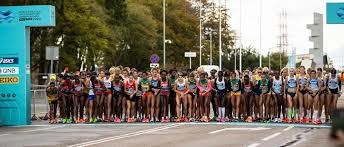
Potential hosts will have to submit formal bids by 1 June and the World Athletics Council will select the host city in July.
World Athletics Continental Tour
The World Athletics Council has approved a greatly expanded Continental Tour calendar for 2021, including 85 Gold, Silver and Bronze meetings, after the new international series was launched successfully last year.
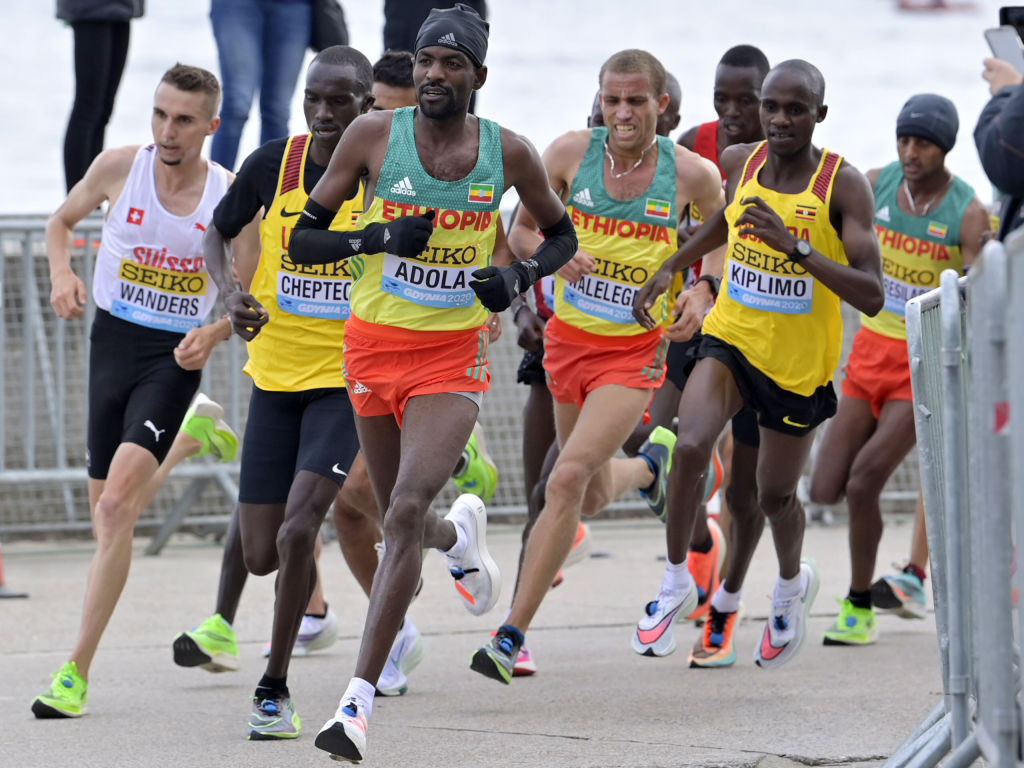
Despite the challenges created by the pandemic, 29 Continental Tour meetings were held last year, including seven Gold meetings (of the 10 that were originally scheduled).
This year’s calendar includes 15 Gold meetings, with two in Africa following the addition of a second meeting to join Nairobi, and three Gold meetings to be held in the United States. The venues for the new meetings will be confirmed shortly.
World Athletics president Sebastian Coe welcomed the commitment of meeting directors and Member Federations across the six continental Areas to create new competition opportunities for the athletes.
“We wouldn’t have chosen to launch a new global athletics tour on the eve of a pandemic, but the Continental Tour proved to be such a strong concept that it thrived even in these adverse circumstances,’’ he said.
“The tour has expanded substantially in 2021, and we’re delighted that it has been embraced so enthusiastically across the world. I’m particularly pleased to see that the US has stepped up to stage three Gold meetings as well as at least nine other Silver and Bronze meetings. These will provide new and vital competition opportunities and prize money for athletes and strengthen our sport both in the USA and internationally. We see the expanded US calendar as an early legacy of the decision to take our flagship event, the World Athletics Championships, to Oregon in 2022.
“We will continue to drive innovation and boost the competition opportunities available to our athletes around the world, with our immediate focus on the World Athletics Relays Silesia 2021, to be held in Poland in just six weeks’ time.”
Competition dates
The Council confirmed the dates for the 2022 World Athletics U20 Championships, which will be held in Cali, Colombia from 2-7 August, 2022, and the 2023 World Athletics Indoor Championships, which will be held in Nanjing, China from 17-19 March, 2023.
(03/17/2021) ⚡AMPby World Athletics
Running improves your brain function
Having a brain block at work? Going out for a mid-day run may have more effects on your brain than just a psychological break in the day.
While the immediate benefit of running, the release of dopamine and other endorphins, is oh-so-good for a stressed-out brain, recent studies have shown running causes more profound, long-lasting changes to brain function. Curious researchers are working hard to uncover how and why aerobic exercise stimulates the brain.
Running to Remember
Two studies this year, published only a week apart, showed that aerobic exercise improved memory.
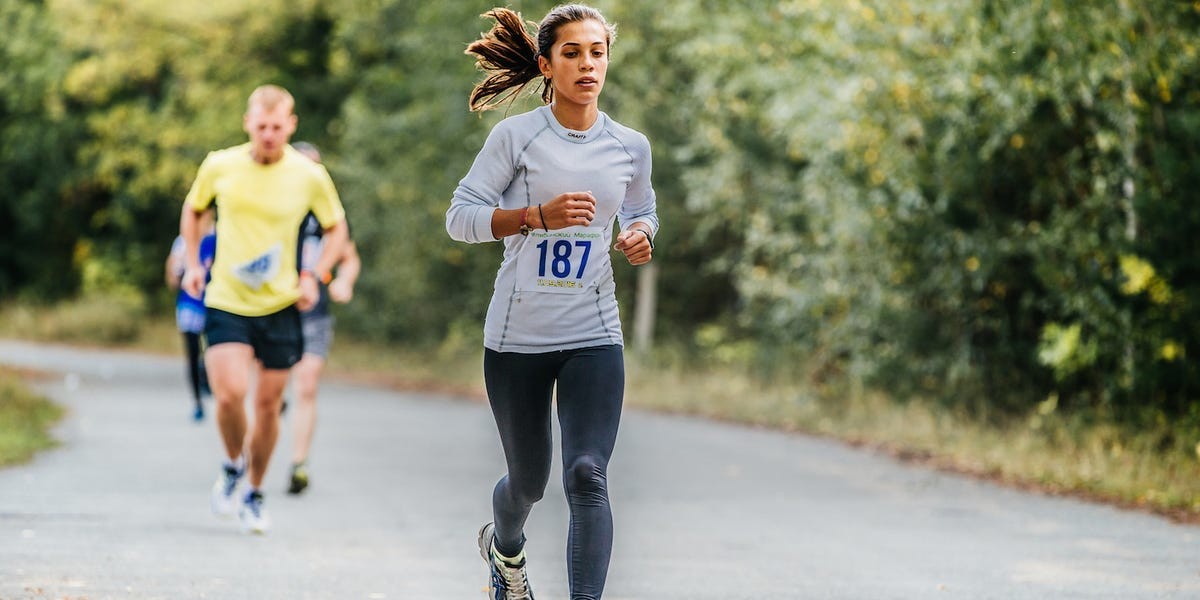
One of the studies, from the American Academy of Neurology, looked at 206 adults before and after a six-month exercise program. By the end of the program, the participants saw blood flow to the brain increase by 2.3 percent on average, which is what the researchers believe led to a 5.7 percent improvement on executive function tests and 2.4 percent improvement on verbal fluency.
“Our study showed that six months’ worth of vigorous exercise may pump blood to regions of the brain that specifically improve your verbal skills as well as memory and mental sharpness,” said study author Marc Poulin in a press release.

Other study, published in the Journal of Alzheimer’s Disease, also looked at blood flow to the brain, but over a year’s worth of aerobic exercise. The exercise group saw a remarkable 47 percent improvement in their memory scores. However, these were among individuals who had memory issues to begin with, which could account for the more staggering results.
Osteocalcin, a hormone, is another reason memory can be improved by running, among many other incredible functions it helps with.
Brain Health and Brain Function is Boosted
One study that came out of the Beckman Institute for Advanced Science and Technology found an association between cardiorespiratory fitness and the brain’s ability to produce N-acetyl aspartic acid (NAA). According to Tartar, NAA is a marker of exactly how active the brain is.
“A central question raised by this work is whether we can modify NAA through physical activity and fitness interventions, providing an effective method to enhance cognitive performance and brain health across the lifespan,” said researcher Ryan Larsen in a press release.
At the Kavli Institute for the Brain and Mind in California, they’re looking at how running improves motor skills, starting with mice. One of their studies, published in Nature Communications, examined how mice running on a wheel over the course of a week performed better on several tests for motor skills, including walking quickly along a balance beam or staying on a rotating rod. The researchers believe that the type of plasticity they saw in mice brains can easily be translated to humans. By incorporating running, athletes may see performance enhancement in other areas that require fine motor skills.
There are many other ways that scientists know that exercise can improve brain function. But they still don’t know why. “We can look at the after effect and see if somebody exercises for a few months, we can start to see changes in their cognitive functioning,” says Dr. Tartar. “They have better attention, better executive function, but we really want to see how.”
There are several chemical reactions that are set off by running and exercise that prove that brain health is better off, but the ‘why’ is still yet to be determined. Dr. Tartar would like to find the mechanisms behind things like brain-derived neurotrophic factor (BDNF) and Irisin.
She calls BDNF, a protein released during muscle activity, food for the brain. It supports neuron survival and health, while promoting overall neural health and cognition. Irisin is a hormone secreted from muscles during exercise that also promotes neural health and cognition. But exactly how these proteins and hormones work needs further study to be truly understood.
Remember that hormone, osteocalcin? It also plays a role in emotion, by increasing serotonin and dopamine, and it’s been shown to decrease anxiety and depression.
Anecdotally, psychologists have known for years that exercise boosts mood by having study participants self-report their feelings. But with the combined efforts of exercise scientists and neuroscientists, there is data from the brain that corroborates that.
(03/17/2021) ⚡AMPby Malissa Rodenburg
Athletes have reacted to Nike's pregnancy announcement
Decorated Olympic sprinter Allyson Felix calls it "beautiful and heartbreaking".
Nike’s latest advertisement is receiving mixed reactions from athletes and sports fans on social media. The ad, which includes the caption, “To every mother, everywhere: you are the toughest athlete,” features several clips of pregnant women and mothers participating in sports, and appears to be the company’s way of showing their support to pregnant athletes.
While the ad is a step in the right direction for the company, many athletes, including Allyson Felix, Kara Goucher and Alysia Montaño, are criticizing Nike for not acknowledging their past treatment of pregnant female athletes.
In 2019, Felix, Goucher and Montaño publicly criticized Nike for its treatment of sponsored athletes during and after pregnancy, and they called the company out for having no pregnancy protections in their contracts. Since then, Nike has announced a new pregnancy policy that protects female athletes from pay reductions for 18 months surrounding pregnancy. This new ad showing support for pregnant women is a welcome change and a step in the right direction, and while many athletes are supportive of it, they are pointing out one thing it’s missing: an apology.
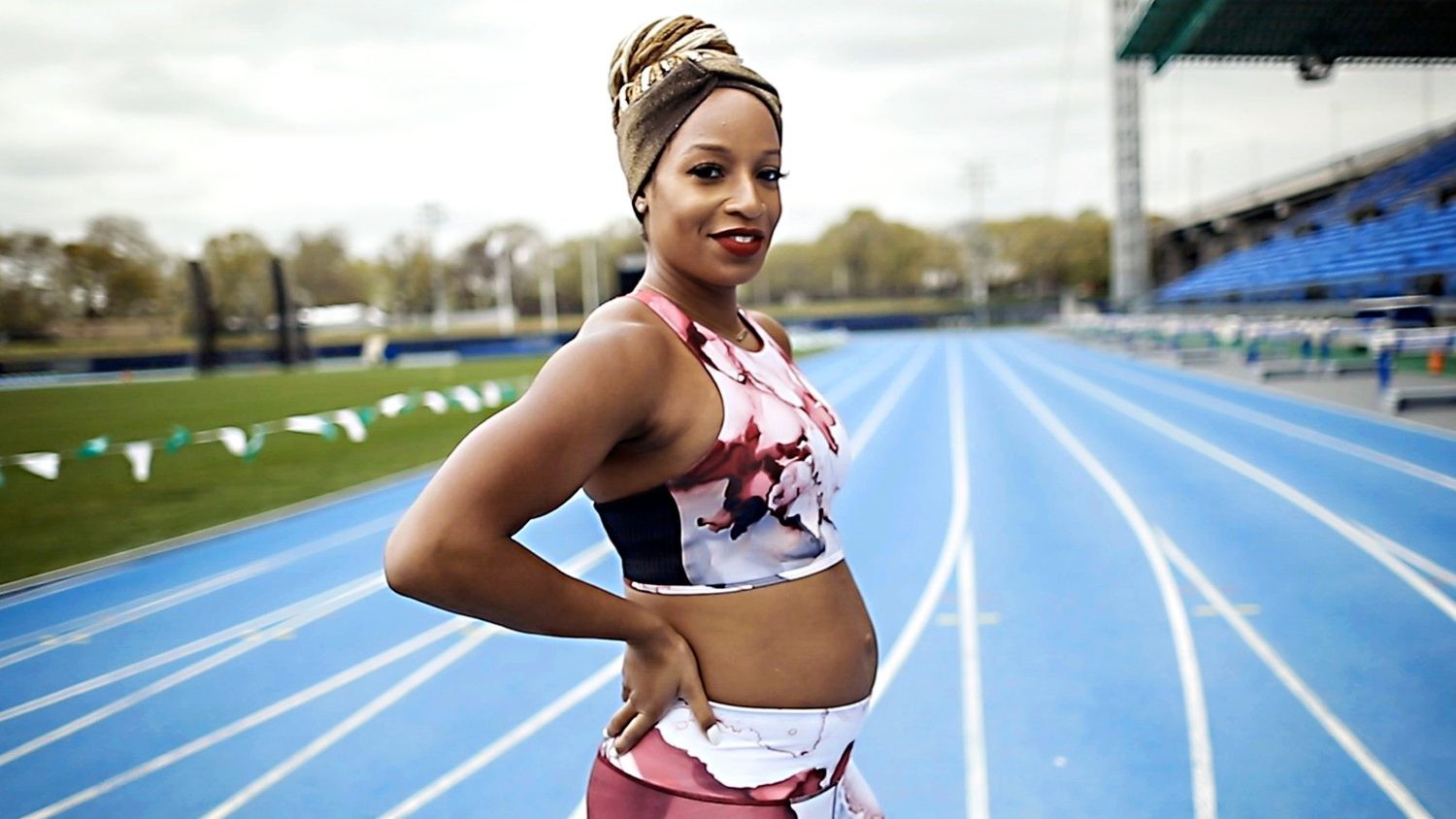
Felix was among the first to express her opinion, which she shared in a Twitter thread. She began by praising the ad for its content, calling it powerful and saying it celebrates mothers and reminds them that they are athletes. She goes on to encourage her followers to watch the ad, but for a different reason.
“I agree with every word in this ad,” she said in a Tweet. “I also think you should watch this ad so that you will hold Nike accountable for it.”
She continues by saying that the ad was hard to watch, given her personal experience as a formerly Nike-sponsored athlete. She points out that it was she, along with several other athletes, who pushed Nike to support athletes’ maternity — a fact the ad fails to mention. Felix calls the ad “beautiful and heartbreaking,” saying that while it celebrates all the right things, it ignores the struggle it took to get to this point.
Goucher echoed Felix’s statements in a response to her thread, saying she appreciates the ad’s sentiment, but this level of support was not a reality for her or dozens of other mother runners.
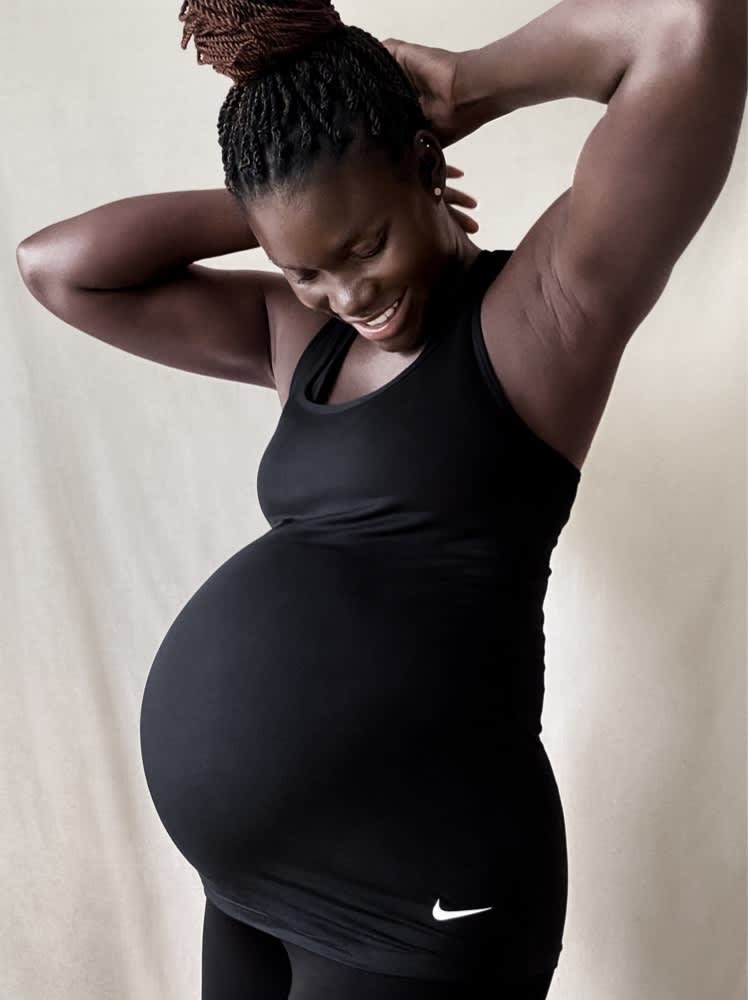
“Acknowledging the way we were treated and receiving an apology (let alone the money withheld from us) would go so far,” she added.
Montaño added her comments in an Instagram post, saying while she is grateful for all the positive changes happening in the world of women’s sports, it is infuriating to watch Nike seemingly dismiss the past and fail to apologize for the experiences of past athletes.
“Yes. We want Nike to sponsor athletes and support them through pregnancy, and thereafter, but we want them to acknowledge the fight and the struggle that it took to get them to make a change,” she said. “We DO NOT WANT them to use our women to make money and while doing so forcing their athletes that have been mistreated to post advertisements as a way of sweeping their struggles under the rug.”
She goes on to highlight the work of other companies, organizations and brands who have a history of supporting women, including her own nonprofit, &Mother, and her partner brand, Cadenshae. Montaño concludes by saying that she and other athletes welcome Nike’s desire to support female athletes, but says they must rectify their former actions if they wish to do that.
Many others on Twitter and Instagram are commenting with support for the athletes, while also acknowledging the beauty and the power of the ad. This new ad by Nike is exactly the type of imagery we need to see, but coming on the heels of controversy over their treatment of pregnant athletes, it comes across as disingenuous to those who are familiar with the backstory.
(03/17/2021) ⚡AMPby Brittany Hambleton
Tips for running in March
The weather this month can get weird — here's how to deal with it.
We’re about half-way through March, and depending on where you live, you’re (hopefully) beginning to see the first signs of spring. Of course, in some parts of Canada, winter is still in full-force, in others, April showers have already begun, and some places seem to experience all four seasons in one day.
This can make it pretty hard to figure how to prepare properly for a run, so here are our best tips for running during a Canadian March.
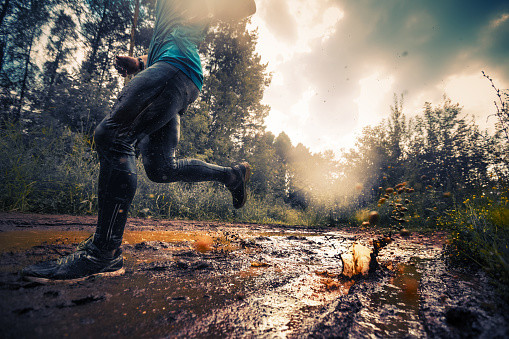
Check the weather
In the summer, you can safely assume it’s going to be hot and dress for the occasion. In the winter, you pretty much always know you’re going to need a hat, gloves and at least a couple of layers of clothing. The same cannot be said about March. As we gradually make the transition into spring, the temperature from one day to the next can vary significantly, so always check the weather before heading out so you know what you’re in for.
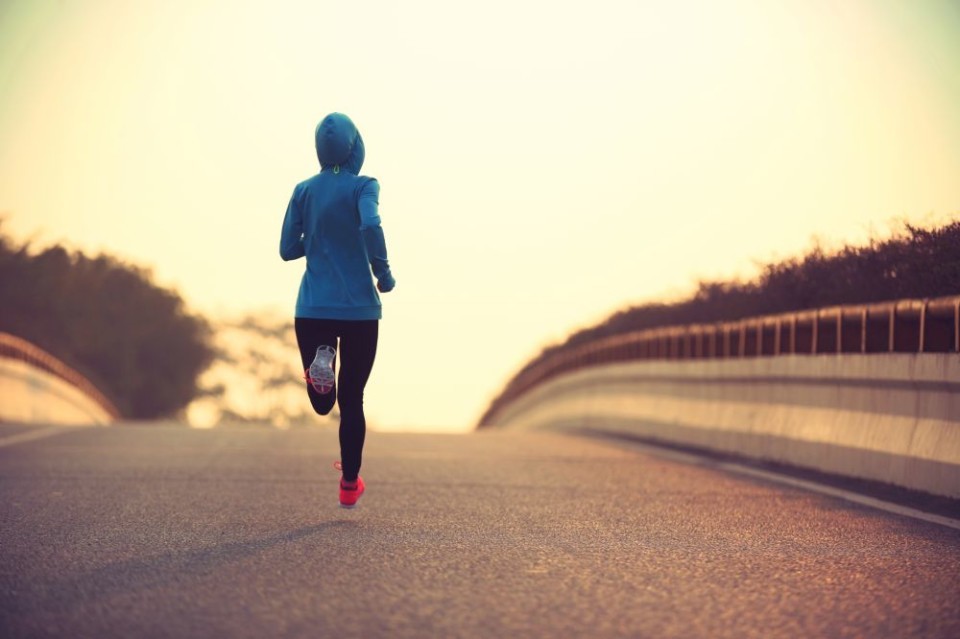
Consider more than just the temperature
Ambient temperature is important, but if that’s all you look at, you might be in for an unwelcome surprise once you get outside. For example, 10 C on a sunny, windless day will feel very different than 10 degrees on a rainy day with gusting winds, so always pay attention to the ‘feels like’ temperature, wind, rain and any other factors that might affect your run.
Watch out for wind
Not only can wind make your run feel a lot colder, it can also make it more dangerous. Strong winds can blow things like tree branches, recycling or garbage bins and other loose items onto your path as you’re running, so if you choose to go running on a particularly windy day, make sure you stay vigilant, and avoid running through a residential neighbourhood on garbage day.
Dress for the rain
A rainy run in the middle of July can be a refreshing relief from the constant heat, but rain in March is just downright cold. If you’re running in the rain this month, make sure you invest in a good water-resistant jacket to keep you from getting soaked, and don’t hang around in your wet clothes too long once your run is over.
Check the trail conditions
With the weather starting to warm up and the days starting to get longer, many runners will be itching to get back on the trails. If you decide to do this, try as best you can to get an idea what the trail conditions are like before you head out.
As the ground starts to thaw, the trails could be pretty slick, and at this time of year, a warm few days followed by another cold snap can make them icy as well. Additionally, if you start out on the trails and the conditions are looking treacherous, you’re better off turning around and trying again another day.
(03/17/2021) ⚡AMPby Brittany Hambleton
The 44th annual Gate River Run will take place this weekend with little changes prompted by coronavirus pandemic
Race Director Doug Alred said the race will be a little different this year because of the coronavirus pandemic.
“We’re going to have a lot of social distancing guidelines in place,” Alred said.
The field is limited to 8,000 runners for the 15K. There will also be two different start lines. One start line will be at the corner of Duval and A. Phillip Randolph streets. The second start line will be at the corner of Adams and A. Phillip Randolph streets. The runners will merge just before the Main Street Bridge. Masks are required except while running.
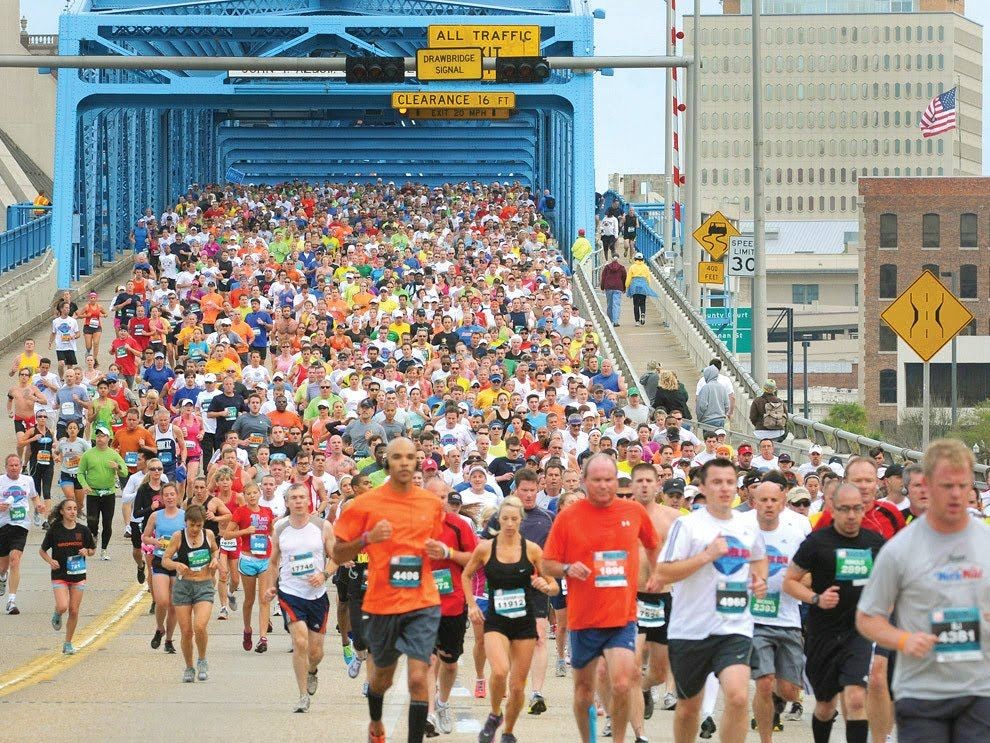
“It’s requiring a lot more things,” explained Alred about the preparations. “We’ve been doing some smaller races and we’ve been kind of using some of the guidelines that we would use at the River Run and see how they go, so those things have worked really well.”
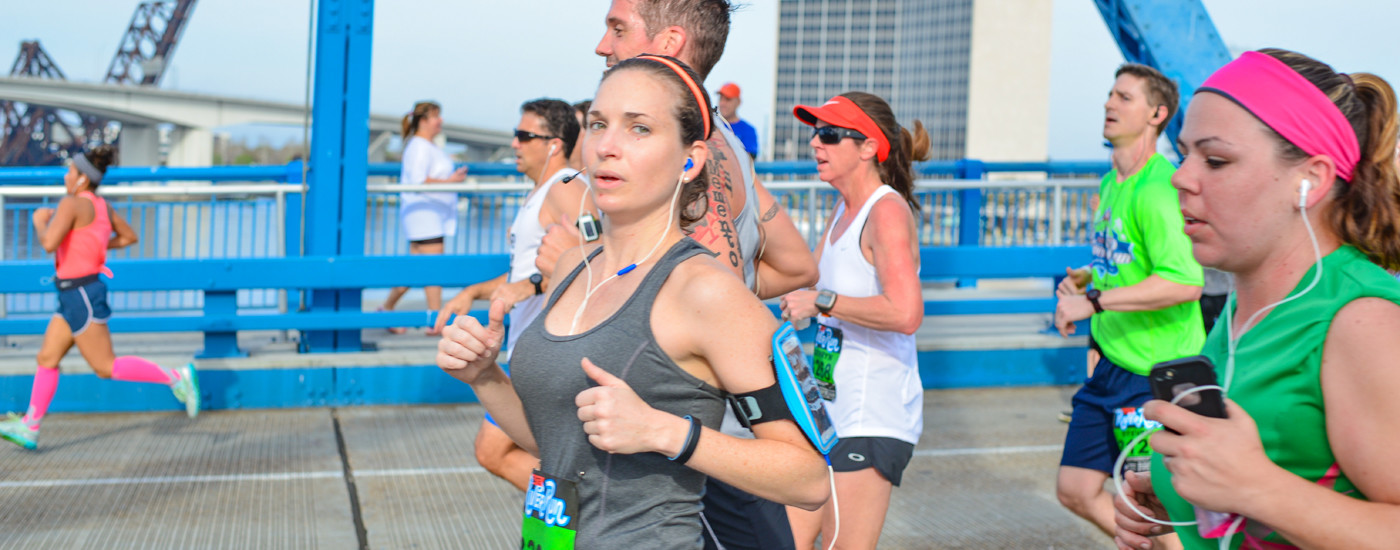
Despite the changes, Alred said runners will still feel a sense of tradition.
“We’re going to have hands on the course. Most of the water stations will still be there, they’ll be run a little bit differently, and the finish line is going to look exactly the same,” said Alred. “As long as people cooperate and wear their mask when they’re supposed to, I think it’ll go great. It’ll be a safe event for everybody, and most people who come will feel like this is a traditional run.”
The Gate River Run said it is expecting one of the best elite fields in recent years because of the limited number of races last year.
(03/16/2021) ⚡AMPby Jennifer Ready
Gate River Run
The Gate River Run (GRR) was first held in 1978, formerly known as the Jacksonville River Run, is an annual 15-kilometer road running event in Jacksonville, Fla., that attracts both competitive and recreational runners -- in huge numbers! One of the great running events in America, it has been the US National 15K Championship since 1994, and in 2007...
more...Bernard Lagat wants to stay with Wildcats after impressive first year on staff
Bernard Lagat had been called a lot of different things: Olympian. All-American. World champion. At Washington State, his alma mater, he is simply “Lagat,” which translates to legend in any language.
A few weeks ago, Lagat was called something totally unfamiliar: Coach.
“I feel like I’m still an athlete, so when someone would say ‘Hey, Coach,’ I sometimes wouldn’t respond,” Lagat says with a laugh. “But then it was, ‘Oh, wait, that’s me.’”
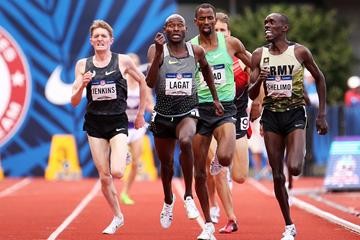
Lots of prominent Tucson athletes have become coaches: Terry Francona, Adia Barnes, Steve Kerr, Stacey Iveson. But few broke into the coaching business like Lagat, the 46-year-old five-time Olympian who moved to Tucson 19 years ago and soon won the 1,500-meters silver medal at the 2004 Athens Olympics.
A few days before Thanksgiving, Lagat was named the interim cross country coach at Arizona, replacing his coach of 25 years, James Li, who chose to retire; Li recently moved to Shanghai, where he now coaches elite distance runners.
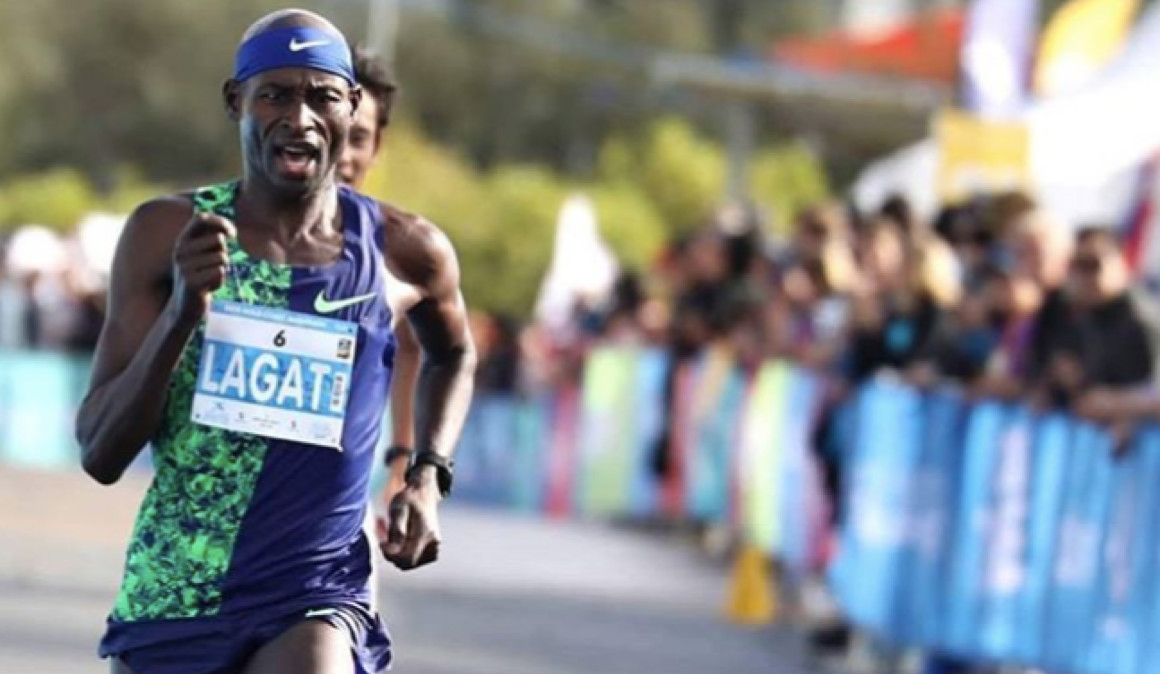
Until that day, Lagat’s only coaching was that of his son, Miika, a freshman at Rincon/University High School, and a few of Miika’s friends interested in running. But Miika has since become an emerging tennis prospect and Lagat’s coaching days appeared to be over.
The timing couldn’t have been better. For the first time since his Olympic debut in 2000, Lagat is not absorbed by trying to qualify for the Summer Games. He doesn’t view his quick introduction to coaching as anything related to his title of interim coach.
Asked if he would like to be hired as Arizona’s full-time cross country coach, Lagat didn’t hesitate.
“I would, I’d like this to be long term,” he says. “Funny, if you had told me about this even a year ago — if you asked if I could see myself coaching — I’d be like, ‘Ah, no.’ But that has changed 100%. I would love to continue. The job grows on you. I want to see my relationships with the athletes grow.”
(03/16/2021) ⚡AMPby Greg Hansen
Four smart ways structuring your routine can Increase focus
Generally speaking, the focus is the ability to collect and direct your attention. Those who have an excellent focus are typically very successful. This typically applies to academic accomplishment, different work results, athletic performance, skill acquisition, and many other things.
Now, it seems like these days it’s pretty hard to have a good focus. Many studies have shown that an average individual has attention that normally lasts about eight seconds. This is not good news. Even a goldfish has a longer attention span.
People should work on enhancing it because when they do, they become much more productive and manage to do every single task for a particular day. If you’re dealing with this issue and you’re not sure how can you improve it, here are some tips that are very helpful!

Wake up earlier
A lot of research has been done on Presidents and CEOs of companies, and what these studies often show is that these successful and driven people often have many traits and habits in common, and one of them is waking up early. HuffPost co-founder and power-woman Ariana Huffington, Facebook creator and informal leader of the online world Mark Zuckerberg, and business magnate Richard Branson are all early-risers. As the author of this Inc.com article notes, “The average U.S. individual wakes up between 6:00 and 7:30 a.m., which means when I’m up at 5 a.m., I have a good one to two hours before my phone starts buzzing.” Imagine the productivity you could have during all that quiet time. Even if you start the day slowly with a cup of coffee and the morning paper or you enjoy have a bit of music playing in the background to offset the silence, you’ve still got quite a head start on the competition. You can also be more productive if you leave this time for exercise, as you won’t be able to come up with the many excuses that often go with sweat sessions that come later in the day. The brain children behind innovative San Diego-based beach accessory company Slippa make sure to get up to surf every morning before they start their day, as that’s how they clear their heads.
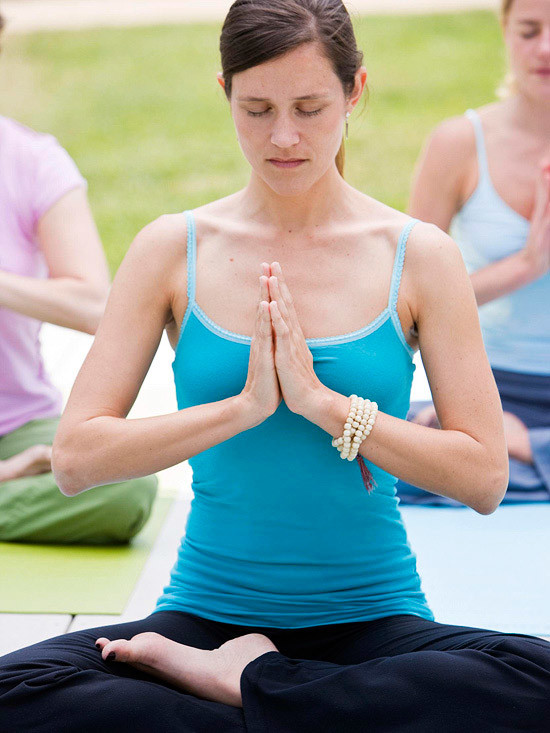
Now, we’re not saying that this will be an easy transition for you if you’re used to sleeping later but give yourself a gradual transition and watch the magic happen.
This one goes hand in hand with #1, as it’s easier to get up early day in and day out if you keep a regular routine. There have been numerous studies that show the health benefits of getting the proper amount of sleep each night, and that starts with going to bed and getting up around the same time as much as possible.
Meditate More
If you’re not a yogi or someone who goes to therapy on the regular, you might think this sounds like a lot of self-help bunk. But the harsh life reality is that you’re going to be thrown a lot of curveballs, and meditation will help you to be centered enough to handle them with no (or few!) problem(s). One of the biggest misconceptions about meditation is that it takes a long time and, if you’re already worried about your productivity and focus, this might seem counterintuitive. All you need to do is download a meditation app to realize that sessions can range anywhere from five minutes to over an hour. On top of the increase in focus, meditation has been shown to reduce stress, lessen the effects of aging, and increase happiness. Say it with us: “Ommmm…”
Eat Well and Exercise
You might think, “Duh,” in reaction to seeing this recommendation, but you’d be surprised by how many people let these things go by the wayside in the name of getting things done. But the thing is that all of these things are cyclical in that you might feel like you need more time to dedicate to your business so you neglect these things, but neglecting these things can lead to poor focus and energy levels, which leads to decreased productivity. Take the time to shop well at the grocery store to keep your body running at its best, and even if it’s just a daily 20-minute HIIT routine, you’ll reap the benefits ten-fold.
None of these suggestions on routine changes to increase focus is reinventing the wheel, but implementing these small tweaks will mean big improvements in your life.
(03/16/2021) ⚡AMPby Andy Sowards
Australian athlete Corey Philpott tows 1.5-ton truck 42K to complete World’s Strongest Marathon
Australian athlete Corey Philpott recently completed a challenge dubbed the “World’s Strongest Marathon” in a suburb of Sydney. Philpott travelled 42.2K while towing a 1.5-ton Ford Ranger pickup truck behind him, finishing the haul in 16 hours, 12 minutes and beating the car-pulling marathon world record by more than an hour.
World’s Strongest Marathon
As Philpott wrote on Instagram, he first learned about the World’s Strongest Marathon when he saw British athlete Ross Edgley complete the challenge in 2016. Edgley pulled a 1.5-ton Mini Countryman around a Formula One race track in the U.K., and although this piqued Philpott’s interest, he didn’t think it was a challenge he would ever attempt.
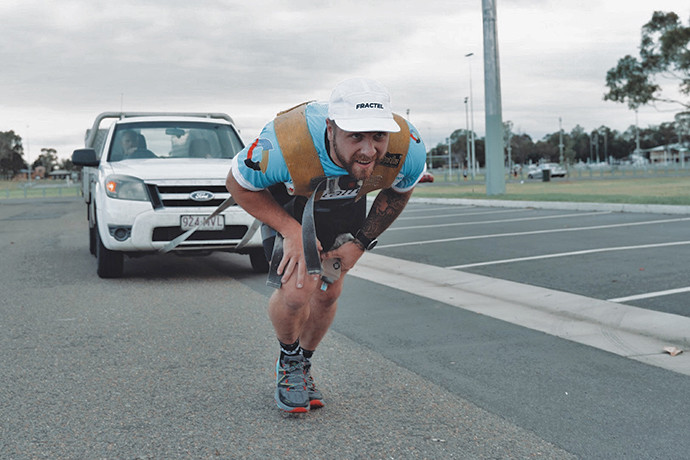
“It always seemed like an awesome concept to me but I never ever thought I was fit enough or had the courage to put it out into the universe and say I’m going to give it a crack,” Philpott wrote. Then COVID-19 hit, and Philpott decided to try it out after all.
“One night, I had just finished watching a video of Ross on YouTube,” he wrote. “Once that video finished, I walked out to the lounge room to my parents and told them in 2021 I will be completing the World’s Strongest Marathon.” For added accountability, Philpott announced his plans on social media, and from there, he had no choice but to power forward.
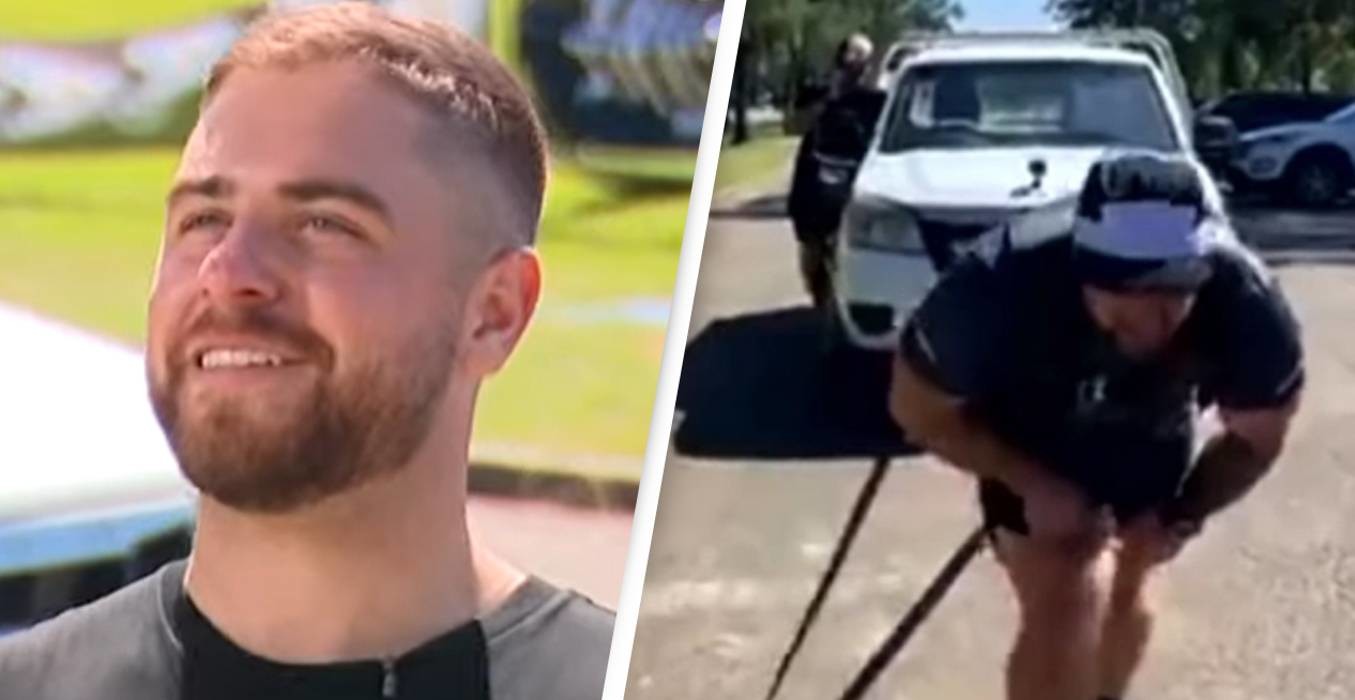
As Philpott told 7News Australia, he trained for eight months, and his schedule consisted of weight training, regular runs and car-towing practice. “I’d start at about one or two in the morning [and] get four or five hours [of] training in before work.”
When Edgley ran his marathon, it took him more than 19 hours to cover 42.2K. In 2019, an Oregon resident named Justin True beat Edgley’s time, pulling a 1.5-ton Suzuki SUV the length of a marathon in 17 hours, 36 minutes. Philpott lowered the record once again, beating True’s time by one hour, 24 minutes.
While Philpott admitted that he wanted to break the world record and use the World’s Strongest Marathon to launch his athletic career (he describes himself as a “hybrid athlete” on his Instagram page), the challenge was much more than just a chance to get his name in the news. He turned the event into a fundraiser for ChildSafe Australia, an organization that is dedicated to supporting children and putting an end to child sexual abuse.
This cause is close to Philpott’s heart, as he said his wife was abused as a child, and she continues to struggle today. “The whole time [during the marathon], I was just thinking about my wife,” he told 7News. “That’s what brought me to raise awareness for ChildSafe.”
(03/16/2021) ⚡AMPby Ben Snider-McGrath
2021 Boston Marathon set at 20,000 runners field size
The selection process will remain consistent with prior years: applications and qualifying times submitted next week will be verified and ranked based on the amount of time an athlete has run under their respective qualifying standard.
The qualifying window opened on Sept. 15, 2018. Any valid qualifying time run on or after that date may be used to submit a Marathon registration application.
The B.A.A. says that achieving a qualifying time does not guarantee acceptance into this year's race. Since 2014, some runners who have met their qualifying standard were unable to be part of the field due to the surge of interest in the race.
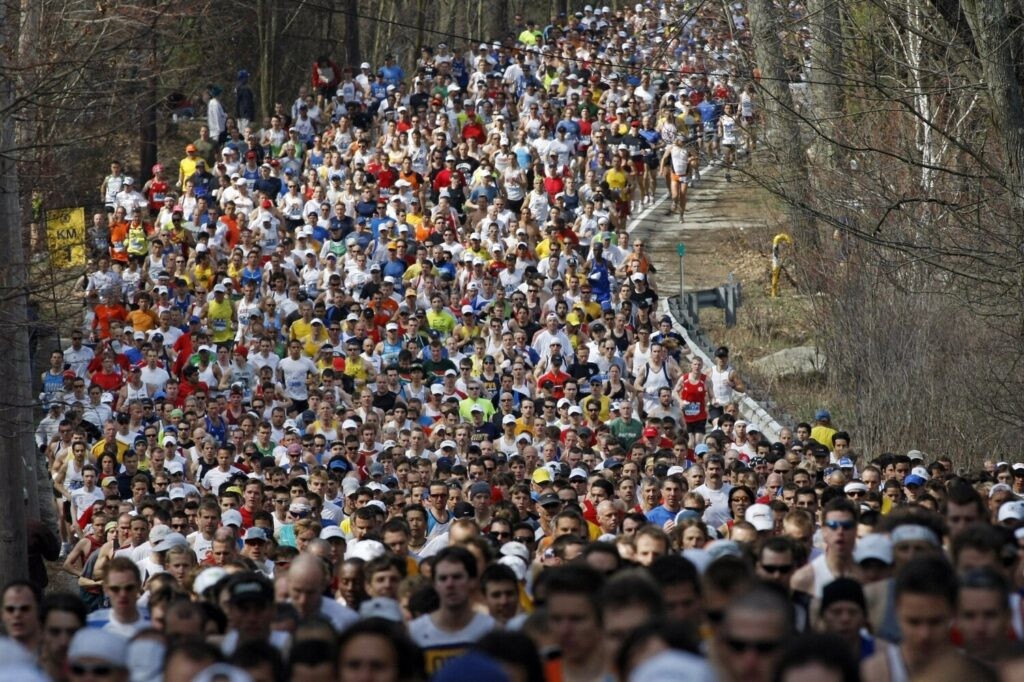
That year, nearly 2,000 runners were shut out because a cutoff time of 1 minute, 38 seconds faster than qualifying times was set to allow a cap of the field.
The number of runners who missed the cutoff time of 4:52 for the 2019 Marathon grew to 7,384, leading to the B.A.A. to make qualifying times 5 minutes faster.
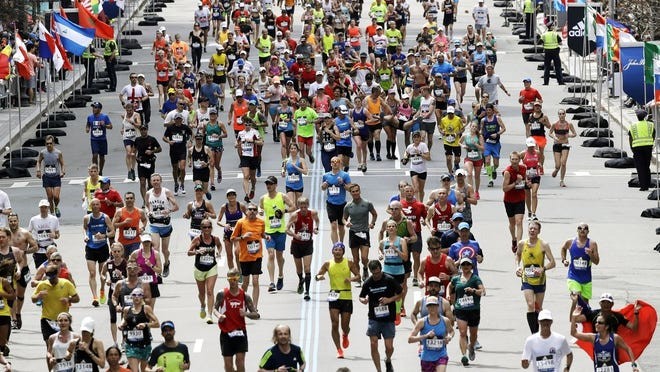
Because of the coronavirus, the B.A.A. last March decided to move the 2020 edition from its normal Patriots Day slot to Sept. 14. On May 28 last year, the Hopkinton-to-Boston race was scrapped entirely for the first time and the 124th Marathon became a virtual event.
The race was last run in 2019, when the entry field was 30,234.
Registration for this year's race will begin next Tuesday at 10 a.m. Eastern Time. Registration is not first-come, first-served and applications will be accepted until 5 p.m. Eastern on Friday, April 23.
In prior years, registration was held over the course of two weeks, with the fastest qualifiers registering first. Due to the shorter timeline this year, all qualifiers may register at any point during the registration week window.
Anyone interested in running for a member of the Boston Marathon Official Charity Program may apply to a team beginning on Tuesday, April 20.
For the second year in a row, the B.A.A. is also hosting a virtual Boston Marathon. The event will take place over race weekend (Oct. 8-10), and will be open to the first 70,000 registrants.
Registration for the virtual race will open on Tuesday, March 30 at 10 a.m. Eastern through the B.A.A.’s Athletes’ Village. Applicants who are not accepted into the in-person Boston Marathon and want to run virtually will have the opportunity to register for the virtual event.
(03/16/2021) ⚡AMPBoston Marathon
Among the nation’s oldest athletic clubs, the B.A.A. was established in 1887, and, in 1896, more than half of the U.S. Olympic Team at the first modern games was composed of B.A.A. club members. The Olympic Games provided the inspiration for the first Boston Marathon, which culminated the B.A.A. Games on April 19, 1897. John J. McDermott emerged from a...
more...Semenya has received financial backing in bid to overturn World Athletics' ruling
Two-time Olympic gold medalist Caster Semenya has received a significant financial boost in her bid to overturn World Athletics' rules to allow her to compete in her favored events at this year’s Tokyo 2020 Games.
The South African Government’s Department of Sport, Arts and Culture has pledged R12 million (£576,600/$803,000/€671,500) to help Semenya appeal to the European Court of Human Rights against her testosterone ruling, according to newspaper The South African.
The funding pledge comes after Athletics South Africa asked the department to support Semenya’s quest to defend her 800 meters Olympic title.
Semenya is hoping to reverse a rule that would force her to take testosterone-suppressing medication to compete in her best events.
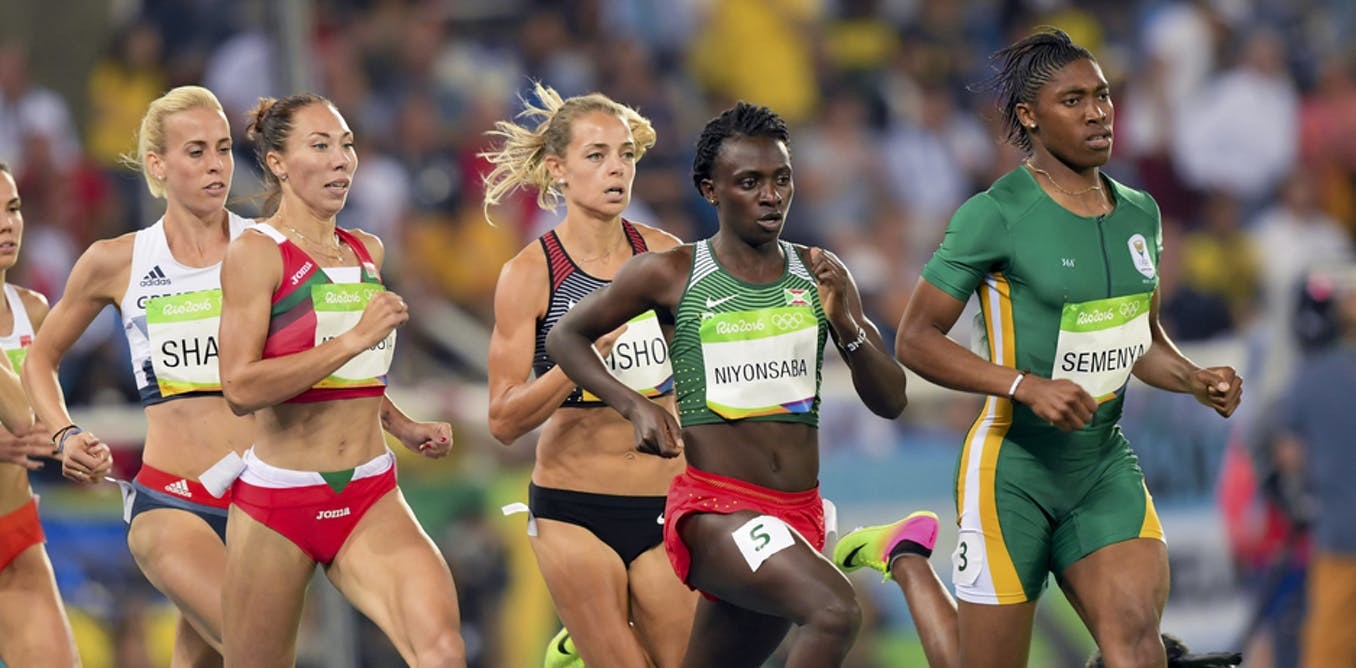
The World Athletics’ rules, which went into effect in 2019, cap athlete testosterone levels in women’s events from the 400m through the mile for athletes with differences of sexual development (DSD).
World Athletics said that no female athletes would have a level above the cap - five nanomoles per litre - unless they had a DSD or a tumor.

Semenya has lost appeals at the Court of Arbitration for Sport and the Federal Supreme Court of Switzerland against the World Athletics regulations over the past two years.
Last month South Africa’s Government confirmed it was planning to appeal to the European Court of Human Rights.
Yesterday, Sports Minister Nathi Mthethwa pledged to help fund Semenya’s efforts when answering parliamentary questions.
"The department has also been approached by the Department of International Relations and Co-operation (DIRCO) after they received a letter from the Commission for Gender Equality, which expressed interest in the matter and requested support from the Government to co-ordinate solidarity against World Athletics Female Athletes Classification Regulations," Mthethwa said in a report by The South African.
Mthethwa also said the Government had communicated with DIRCO to sponsor a resolution at the Human Rights Council.
"The hope that the appeal at the European Court of Human Rights may be successful is largely informed by this development and as a Government renowned for the protection and promotion of human rights, we should take an interest in the matter, moreover because our own shining star, Ms Semenya, is being targeted," added Mthethwa.
World Athletics has consistently said the rules are necessary to ensure female athletes can participate on fair and equal terms.
Semenya will be supported by a legal team led by Norton Rose Fulbright lawyers Gregory Nott and Patrick Bracher in Johannesburg, as well as Christina Dargham in Paris.
London based barristers Schona Jolly and Claire McCann, and Toronto-based lawyers James Bunting and Carlos Sayao are also part of Semenya’s legal team.
"I hope the European Court will put an end to the longstanding human rights violations by World Athletics against women athletes," said Semenya.
"All we ask is to be allowed to run free, for once and for all, as the strong and fearless women we are and have always been."
(03/15/2021) ⚡AMPby Geoff Berkeley
Social media is changing track and field for the better
Unlike sports such as basketball, football, hockey and soccer, track has never attracted the same attention in terms of viewership and, of course, money. Every four years when the Olympics come around, the world gets excited about the sport, but as soon as the closing ceremonies wrap up it fades into the background. With many of the big track meets only available on expensive subscription services like Runners Space and Flo Track, even fans of the sport have trouble accessing meet coverage — that is, until recently.
Social media, most notably YouTube, has transformed the sport of track and field over the last few years, with coverage of more and more high-level track meets becoming available on the free platform, and an increasing number of athletes and teams using it to promote themselves and give fans an inside look into their lives and training. In a recent YouTube video, several athletes, including Canada’s Justyn Knight, reflected on the change and how they think it is helping the sport progress.
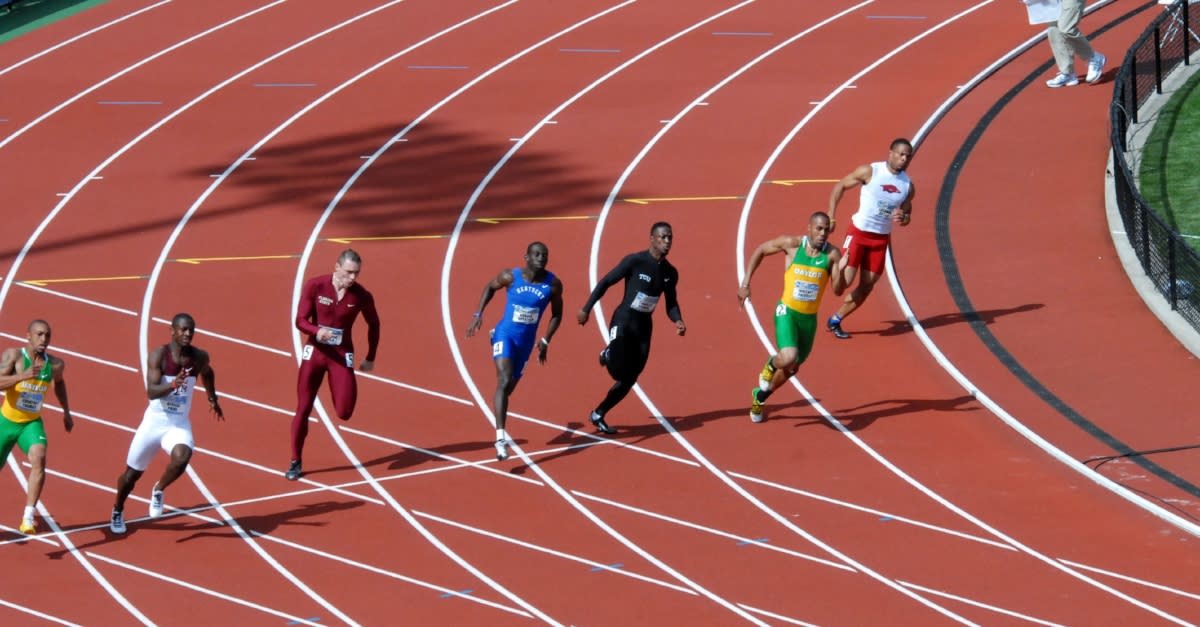
“Involving social media in the sport does nothing but uplift it,” said Knight. “Our generation is in a social media time where it does nothing but make you more money and spread awareness on whatever your cause might be or bring awareness to your team.”
The other athletes in the video echoed Knight’s statements, adding that providing free spaces where fans (particularly young fans) can access content and keep up with their favourite runners creates more excitement around the sport, which ultimately helps brands (and therefore the athletes they support) make more money and improves the sport overall. New Zealand runner Nick Willis also commented on the differences he sees in the sport now compared to when he began his career 20 years ago, noting that social media has allowed smaller, more grassroots meets to flourish.
“Before, the highest-level athletes wouldn’t want to show up to meets that didn’t have any prize money [or] that weren’t on NBC or ESPN,” he said. “It’s good that those things are part of the sport but … it’s cool to be a part of both sides and having done the sport at the high level for 20 years it’s actually rejuvenating for me at the end of my career to be in more community-based events.”
He added that these smaller meets, where athletes pay their own entrance fees and put in a seed time, create a more level playing field for runners, and also allow fans to be a part of the business structure of the sport, in a way. The more people that log onto the YouTube channel to watch the meet, the more sponsors the meet is able to get, generating more revenue to help athlete cover their expenses and to allow meet organizers to put on other, similar events.
Social media in general, whether it’s YouTube, Instagram or TikTok, gives elite runners an opportunity to market themselves, to promote their personal brands and to connect with fans in a way that athletes of previous generations were unable to do. It provides greater access to the sport for fans of all ages, particularly young fans, which will help to inspire and motivate the next generation of elite runners. Running may not ever generate the same level of sports mania as football or hockey, but these changes will help the sport to grow by generating more support for athletes hoping to compete at a high level.
(03/15/2021) ⚡AMPby Running Magazine
The Long Run Prepares Your Body to Run More Efficiently No Matter the Distance
Going the extra mile(s) can help you run more efficiently at every distance—even if you dread it sometimes.
Ah, long runs: We love to hate ‘em. Or maybe we love to love ‘em—depends on who you ask. Either way, the long run is the cornerstone of any half marathon or marathon training plan, but it can be equally important to your 5K and 10K training. No races on your calendar? No problem. A long run can still be beneficial for your overall fitness and mental health.
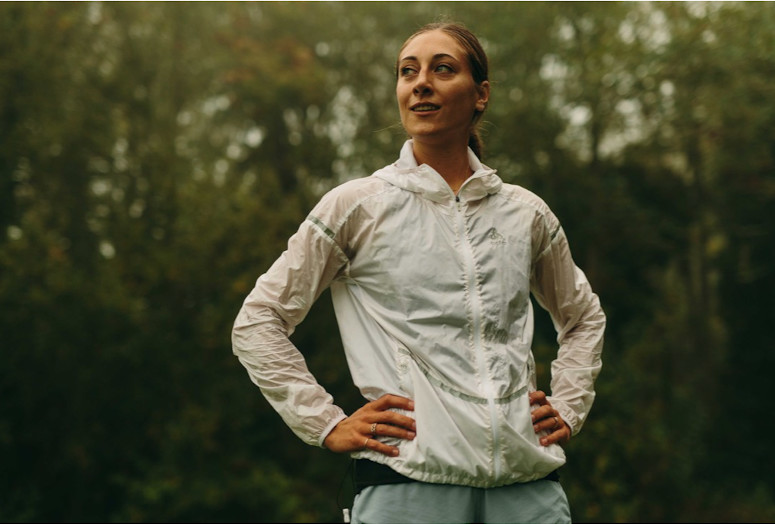
But if you don’t understand the long run, you may miss out on all of the magic it has to offer. So we put together this ultimate guide to one of the best training tools you have in your arsenal.
What’s the point of the long run?
The benefit of running long—regardless of the distance you’re training for—is the aerobic gain you’ll make during those miles. “Long runs force the body to become more and more efficient,” says Ben Rosario, head coach and founder of the HOKA NAZ Elite team in Flagstaff, AZ. “The heart learns to pump higher amounts of blood with each stroke, which then carries more oxygen to the body.”
Aerobic (or endurance) running also strengthens your slow-twitch muscle fibers, which can fire repeatedly with minimal fatigue (compared to fast-twitch fibers, which are used during short, explosive efforts but fatigue more quickly). These fibers are also important because they’re full of capillaries, mitochondria, and myoglobin (an iron- and oxygen-binding protein), all of which are crucial to getting a steady supply of oxygen and energy to the muscles.
“Long runs force the body to create new capillaries, giving the oxygen a smoother and faster path to the mitochondria—a.k.a. the ‘power plant’ of the cells—where energy is produced and stored. And when we run for long periods of time, the size of those mitochondria increases, allowing them to produce and store more energy,” explains Rosario.
One of the other major benefits of the long run is how it teaches your body to use fat as fuel over carbs, says Joe McConkey, a Boston-based exercise physiologist and USATF-certified running coach. “That allows you to be more efficient with your different forms of energy, so you can run faster without depleting your reserves.”
Translation: The long run prepares your body to run more efficiently no matter the distance—even in a short race, when you need energy to be produced and oxygen sent throughout the body fast.
And you can’t overlook the mental angle: To prepare for the psychological challenge of racing for hours, you have to train for hours. Even if you’re not racing, a long run offers your mind the chance to tap into the ever-elusive runner’s high, and research shows running can boost your mood and improve your mental health.
What to Watch Out for On a Long Run
A long run is, inherently, long. And the more time you spend on your feet, the more stress you put on your body. “The long run does ask a lot of our muscles, tendons, and ligaments due to the duration of exercise required for a run to be considered ‘long’,” says Rosario. 
​
Generally, your cardiovascular system adapts to changes more quickly than your musculoskeletal system. So if you start running long before your body is prepared to run long, you could put yourself at an increased risk for injury, including overuse injuries like plantar fasciitis, Achilles tendonitis, runners’ knee, iliotibial band (ITB) syndrome, and shin splints.
“If you’re experiencing any little niggles or asymmetries before the long run, the long run will only make those worse with the thousands and thousands of steps you’re putting on your body,” says McConkey. It’s super important to listen to your body and, if you feel like something is off during the long run, acknowledge that it may be more major than you think. “The only sensations you should feel during a long run are a slight challenge aerobically as it gets longer, and general fatigue or a sort of bilateral soreness,” he adds.
Gear You Need for a Long Run
Running is a pretty simple sport in terms of gear, but when you start clocking over 60 minutes, there are some important things you’ll want with you beyond a good pair of shoes.
The most important addition is a way to carry fuel and hydration, whether that’s a running belt, a handheld water carrier, or a pack.
How Long Should Your Long Run Be?
There’s a huge amount of variation in how long a long run should be, depending on the type of runner you are.
Some coaches suggest long runs cover one-and-a-half to two times the distance of what you consider a normal-length run. Most experts, like Jack Daniels, agree that a long run be about 20 to 25 percent of your overall weekly mileage. So if you’re running 40 miles per week, your long run will be 8 to 10 miles.
“I typically don’t like the long run to be more than twice the length of a regular recovery run,” says McConkey (in general, recovery runs last about 25 to 40 minutes). According to the Road Runners Club of America, a long run technically isn’t a “long run” unless it’s over 90 minutes, so the exact distance depends on your running pace.
But your long-run distance becomes more specific if you’re training for a certain distance. Remember: You need to go further (and slower) in order to run faster at shorter distances. Most experts recommend working up to the below peak long run for each distance:
5K: 5 to 6 miles for beginners; 10 to 12 miles for intermediate/advanced
8K/10K: 6 to 10 miles for beginners; 12 to 14 for intermediate/advanced
Half marathon: 12 to 13 for beginners; 16 to 18 for intermediate/advanced
Marathon: 18 to 22 for beginners; 18 to 30 for intermediate/advanced
Yes, some of those distances are longer than the race itself. “But logging those miles shows you’ve spent enough time at sub-max speeds to allow the necessary aerobic adaptations to happen,” he explains.
How Fast Should Your Long Run Be?
No matter the distance, your long run should be run at an easy pace, says McConkey. We will repeat: easy pace! What does that translate to? It’ll be different for every runner, but an easy pace should fall on the lower end of the rate of perceived exertion scale. Your heart rate should be 50 to 70 percent of your maximum heart rate, and you should be breathing naturally and able to hold a conversation effortlessly.
"I advise people to run as slow as possible, as long as it’s mechanically comfortable,” McConkey explains. “I challenge people to not look at pace until they’re done, but just focus on something comfortable. You shouldn’t feel like you’re doing slow-motion single-leg squats; there should still be some spring to your step.”
That pace is going to change as your fitness changes. “When you develop more strength and running efficiency, you’ll be able to run faster at the same RPE or heart rate,” says McConkey.
For shorter distances, long runs can generally be slow and enjoyable, says Rosario. But half marathoners and marathoners should approach their long runs with a little more structure. “Half marathoners and marathoners, in my opinion, should be adding faster-paced running into most of their long runs: things like alternating fast-pace and medium-pace miles, surging for two minutes at the beginning of each mile, or simply running the last 5K of their long run really fast,” says Rosario. This is important, because it helps train your legs to get used to running fast even with lots of miles on them—and that will help at the end of races.
How to Recover From a Long Run
You may run your long run at an easier pace, but the sheer amount of time you’re spending on your feet warrants more rest and recovery.
For starters, “the quicker an athlete can replenish after a long run, the sooner they will recover,” says Rosario. “Shoot for a mix of carbs and protein, preferably at a 4:1 carbs to protein ratio—that particular ratio has been shown in labs to be the most effective at replenishing muscle glycogen stores and thus limiting muscle damage.”
McConkey recommends taking the day off after a long run. “Instead of running, just walk around for 20 to 30 minutes and spend 10 minutes on a foam roller to open up your body,” he says. “Those two things can really expedite recovery.” In fact, foam rolling was shown to reduce delayed-onset muscle soreness while enhancing muscle recovery in a study published in the Journal of Athletic Training. 

As for other trendy recovery modalities, do what feels good to you. Compression boots can also lead to recovery benefits, a study in the Journal of Applied Physiology found. Ice baths were shown to reduce delayed onset muscle soreness in a scientific review by researchers at the Cochrane Library. And massage helped reduce pain intensity in runners’ quads in a study from the Journal of Physiotherapy.
Most importantly, prioritize a good night’s sleep—new research from the International Journal of Sports Medicine argues it may be the single most important factor in exercise recovery. After all, that’s where the real recovery magic happens, when your body truly has time to rest and rebuild.
(03/15/2021) ⚡AMPby Runner’s World
There’s a New Running Team, Angel City Elite, and It Wants to Increase BIPOC Representation in the Sport
“We didn’t want to simply educate and represent only ourselves, we want to do this for people who don’t have a voice.”
There’s a new elite running team, and it’s working toward bridging the diversity gap in the sport.
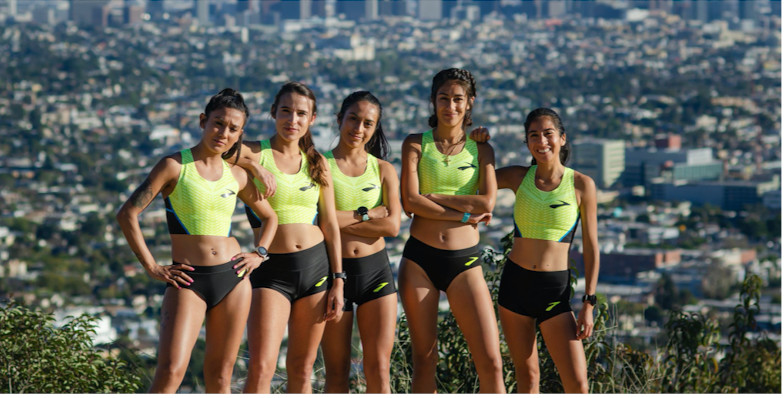
Angel City Elite is a Los Angeles-based team of five women who are Black, Indigenous, and people of color (BIPOC). The group—Sabrina De La Cruz, Andrea Guerra, Valerie Sanchez, Grace Gonzales, and Grace Graham-Zamudio—is determined to not only perform well, but be a voice in the running industry and community.
The team of women, all of whom are marathoners, is sponsored by Brooks Running, and each athlete will receive Brooks team gear and shoes, and have incentive bonuses in their contracts along with a travel budget. De La Cruz, Guerra, and Gonzales are coached by De La Cruz’s husband, Andres; while Sanchez and Graham-Zamudio will continue to work with their current coaches. All will continue to work full-time jobs on top of competing at an elite level.
“I’ve had this idea for years but was scared because I didn’t know how to start it,” De La Cruz, 31, a 2020 U.S. Olympic Marathon Trials qualifier with a PR of 2:41:16, told Runner’s World. “Right after college, I did see the lack of representation in the sport whenever I would travel to races. About two years I go, I did feel stereotyped when I went to other states. So that’s when I knew, I need to create this team.”
This was especially apparent to De La Cruz at the Olympic Marathon Trials where only handful of runners were BIPOC, and it inspired her to reach out to the other four women, all of whom are marathoners living in the Los Angeles area. Guerra (who has a marathon PR of 2:42:15), Sanchez (2:42:38), and Gonzales (2:41:52) also qualified for the 2020 Olympic Marathon Trials.
Each runner brings a different story to the team. Sanchez, 30, is Mexican-American and a friend of De La Cruz’s from the University of California-Los Angeles (UCLA). Gonzales, 31, is part Chicana and part indigenous Mexican, who mentors the team and teaches them about her culture. Guerra, 30, moved to the U.S. from Mexico when she was six years old. Graham-Zamudio, 27, is the youngest in the group and already a leader.
In the spring and summer of 2020, the women created a plan for their team, including mission statements and a clear vision. They didn’t want to just simply exist as a team that only runs and competes. They also wanted to be proactive in bridging the diversity gap in the sport.
“We didn’t want to simply educate and represent only ourselves, we want to do this for people who don’t have a voice,” De La Cruz said. “That’s really huge for us. Not only empowering each other, but empowering others by doing the work on our end to make running more inclusive.”
This part of their mission, in addition to the talent of each team member, caught Brooks’s attention. Julie Culley, a 2012 Olympian who started as the sports marketing manager for Brooks last August, said this was one of the first projects she worked on with Brooks.
“What made this so significant was these were five women who were already connected by location, they already do some training together, but beyond trying to get the most out of themselves was their unification on trying to change the landscape of the sport,” Culley told Runner’s World. “The callout that’s happened in the last year to focus on elevating voices and inviting more people in. They want to get the most out of themselves, but they want to do more than that. You just can’t not fall in love with that.”
The logistics starting a team—becoming an LLC, setting up a bank account, receiving nonprofit status—has taken several months. Brooks is paying for incorporation fees, logo creation, web hosting (you can find the team website here), and other requirements for creating and supporting the team.
When asked about team goals, De La Cruz’s passion for community comes flying out and running almost takes a backseat. She shares idea after idea of actions she wants to take, such as using social media channels and a podcast to amplify voices and tell others’ stories. Additionally, she wants to connect with local run clubs, shops, and crews like Blacklist LA, creating a L.A.-based group run for all races, genders, and ages, and even going to local high schools, when the pandemic ends, to help kids apply for college and federal student aid (FAFSA).
“When I was growing up, I was lucky to have my mom,” De La Cruz said. “She was the first one out of her whole family to attend college. She helped me, but I also had friends who had no idea how to apply for school or FAFSA. My mom helped all of the kids in my high school because many parents didn’t know how to apply for college. This is the education and resource we want to bring to and be in the community.”
The team’s race schedule is still up in the air because of the COVID-19 pandemic, but the women are looking forward to doing races ranging in distances from the 10K to the marathon all over the country to share their message and mission.
“I actually started to cry last week,” De La Cruz said. “I feel so supported and happy Brooks is helping us. It’s something we needed. Some of us with our backgrounds, we don’t have much money. It’s nice to have this help, and we want to keep building on this and help the next generation. I don’t want this team to be here for three years. It’s here for years to come we can help generation after generation.”
The move comes as a few teams have popped up in recent months. Back in August, the On Athletics Club debuted in Boulder, Colorado, and just this week, a Puma group was announced in North Carolina.
For now, there’s a lot of work still to be done, and Angel City Elite has the boundless vision and potential to make a vast change in the sport and the Los Angeles community for years to come.
(03/15/2021) ⚡AMPby Runner’s World
Sara Hall, motivated by motherhood and marathons
For athletics fans, Sara Hall is probably best known for her stunning marathon performances of 2020: the finishing kick to end all finishing kicks in London, where after 26 miles of hard running in the miserably grey and cold rain, she unleashed a stunning sprint gear, and hurtled past world champion Ruth Chepngetich to finish second. It was so impressive it achieved the ultimate 2020 accolade of becoming a meme. Then, just a few months later, there was her brilliant performance at the Marathon Project in Arizona, clocking another PB of 2:20:32 for the win and to become the second fastest marathon runner in US history.
But if all this was an unexpected late career renaissance for Hall, and an astonishing turnaround after the heartbreak of a DNF in the Olympic marathon trials, her personal story might be even more extraordinary. In October 2015 she and her husband Ryan went to bed one night as a couple, and woke up part of a family of six. The couple had adopted four Ethiopian sisters: Hana (15), Mia (13), Jasmine (8) and Lily (5) and brought them back to their home in the US.


“It was kind of surreal,” says Hall. “I felt like I was acting in a sitcom, playing the part of a suburban mom. All of a sudden I was driving them to school in our big old family car.” Of course, in reality the process was actually far from sudden – the couple had long had associations with Ethiopia, with many friends in the country, and had always enjoyed training there. Even once they had made the decision to adopt in Ethiopia and met the girls, they took their time. “We spent a lot of time in Ethiopia training, and we would visit the girls during that time. So we'd built a lot of trust with them and really got to know them. I think that really helped everyone's adjustment, but it was a surreal time for sure.”
For their daughters, the culture shock of moving to the US must have been huge. “They didn’t know any English when we met,” agrees Hall. “I learned their language – Amharic – and we were teaching them English in the orphanage on our visits. But when we put them in school in the US we didn't know if that would even work because they'd never been to school before. My 15-year-old was starting eighth grade having never been to school for a day in her life. But she – they all – just immersed themselves in it and I think that really helped them.”
In fact, for those who like to ponder the effects of nature vs nature, Hall’s eldest daughter Hanna is quite the study. Now a freshman at Grand Canyon University in Arizona, she is a three-time state champion and clearly a prodigious talent. Her sister Mia has also recently started running more seriously, and the girls both now join Sara for runs. Yet when the Halls first met their daughters, none ran so much as a single step. The orphanage where they had lived for three years was their entire world, and though they were cared for, opportunities for sport were non-existent.
“They definitely knew of their country’s running heroes, though,” recalls Hall. “They had seen some races on TV and when we told Hana that we were both runners, she said: ‘Oh I want to be a runner!’ That was cool because otherwise I think I would have wondered if it was, you know, kids trying to get their parents approval by doing the things they love.”
Of course, with a pedigree like Hall’s – not to mention husband Ryan’s 59:43 US record-holding half-marathon and 2:04:58 marathon – the girls clearly have big running shoes to fill. And, as with many parents, finding the right line between pushing and easing off has been tricky for the Halls.
“I think I’m still figuring that out, and I like to talk to other people whose parents ran, about their experiences,” she says. “When you see a kid has a talent, you want to be able to communicate to them: ‘Look, if you want to be good at this, you could be’, but also kind of leave it up to them, too. I think distance running takes a lot of internal drive to be good at it, and I think for me, that always came from within. I’ve always felt like if they have that fire, I will fan that flame – but I want to see their own fire for it first.”
Her two youngest daughters have yet to find what fuels their own fires, and that is absolutely fine with Hall. “There’s lots of different reasons to do sports, like just for fun,” she says. “Jasmine, who is 13, did cross country for two seasons and was undefeated, but was very much just seeing it as fun and hasn’t run for the last couple of years. I started myself in basketball and soccer and I think that’s actually a better way to become a good runner anyway, to do those sports early on. There’s just not as much pressure with team sports, and you learn teamwork.
“Typically, the professional athlete, everything’s kind of revolving around you – you’re eating, and sleeping, and training, and everything outside of training is all about rest, minimising energy expenditure at all costs,” muses Hall. “But then you become a parent and that's out the window. You can't just go into energy conserve mode – you're constantly tuning in with them and like, and seeing what they're needing.” Little surprise, then, that when the couple initially adopted the girls, Hall expected it to signal the end of her top-flight career.
Instead, that, and the move up to the marathon distance, seems to have revitalised it. So, did her new family life actually prove a new source of fuel for that fire? She laughs: “I think I’ve been able to improve despite it, definitely not because of it! It’s been difficult. That’s why I share stuff, because I think on the outside it could look like it’s been really easy but it hasn’t, by any means.
“I never thought I would want to do this with kids, just be torn in different directions. Having talked to other families who had adopted older kids, they’d all had a really difficult road, really life-altering for the family. And I was willing for these kids, willing to walk that road with them, do what they needed to heal from the trauma they've been through. But it turned out that wasn't really the case with them, they have just handled everything really remarkably so far. So it allowed me to continue to do what I'm doing”.
And that, these days, is quite definitely 26.2 miles, as fast as she can. “I’ve just loved marathon training. I think I should have been doing this a long time ago,” says Hall. “I just found my body had a lot of room to grow my aerobic capacity. Each build-up I'm able to add in more and absorb it better and so even though I'm getting older, I feel like I'm kind of young as far as the marathon goes. Maybe starting the marathon later just allowed me to have more mileage in my tyres.”
These days, Hall also has to contend with nerves from her daughters’ races as well as her own. Fortunately, she says she doesn’t suffer too badly for them. “But I do get really excited,” she adds. “I’m sprinting around the course trying to cheer for them 20 times!” But it’s important to Hall that her daughters also learn how to fail – and see her do it, too. “I think it’s really powerful for them to see me do something that makes me come alive – and see me fail and pick myself back up again after the biggest failure of my career – and train through a pandemic and then have the best race of my career. That’s the kind of stuff you want to instil in your kids and they learn more through watching you than from what you say.”
The girls certainly have two incredible role models to watch at home. And while she may not be at the Olympics, Hall’s marathon journey is far from over, she confirms. “I think I have some unfinished business there,” she says, “and I'm really looking forward to having some World Marathon Majors back in their normal glory, with the whole field.”
And if she can kick like she did in London on a miserable day with an elite-only field and no spectators, then surely with fair conditions, and the cheers of the crowd behind her, a sub-2:20 and that US record is well within her grasp.
(03/14/2021) ⚡AMPby World Athletics
Kenyan runner convicted of doping offense in criminal court
A female runner became the first athlete in Kenya to be convicted of a doping offense in a criminal court on Friday.
Distance runner Florence Jepkosgei Chepsoi, who finished second at the 2019 Jakarta Marathon, was sentenced to one year of community service after she was found guilty of presenting false documents and lying to the Kenyan anti-doping agency at a hearing.
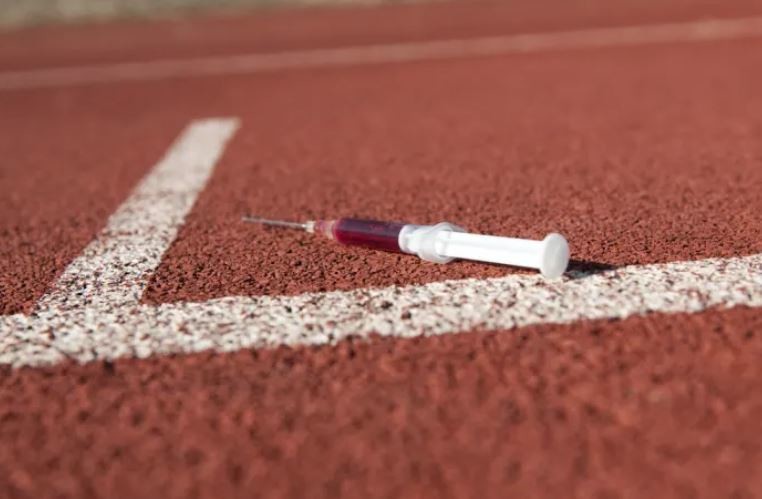
She changed her plea to guilty having initially pleaded not guilty when she was first charged in court last year.
Kenya criminalized doping offenses in 2016 in the midst of a stream of drug scandals among its world-renowned distance runners. The East African nation updated its anti-doping laws late last year.
Chepsoi was initially charged with doping by the Anti-Doping Agency of Kenya in 2017 after testing positive for the banned steroid prednisolone at a race in China. When she appeared before a tribunal, she presented documents she claimed were from a hospital as part of her defense. ADAK found the documents were forgeries and Chepsoi had never been treated at the hospital, leading the anti-doping body to push for her to be prosecuted in a criminal court.
It’s rare for an athlete to face criminal charges for doping offenses, although Chepsoi is not the first worldwide.
Criminal prosecutors normally target people such as doctors and other support staff who facilitate doping in what they refer to as doping conspiracies rather than the athletes themselves. The World Anti-Doping Agency recommends athletes do not face criminal prosecution for doping.
The United States passed a law in December that criminalized doping conspiracies and allows U.S. prosecutors to go after doping schemes at international events in which Americans are involved as athletes, sponsors or broadcasters. The Rodchenkov Anti-Doping Act was named after Grigory Rodchenkov, the former Moscow lab director who helped uncover state-sponsored doping by Russian athletes.
However, the Rodchenko Act makes clear that individual athletes are not subject to prosecution.
ADAK said more athletes would “face the law” for doping in the coming days. Four other Kenyan athletes are facing criminal charges for doping offenses.
(03/14/2021) ⚡AMPKamata and Kobayashi Win National University Half Marathon Titles
Even windier and warmer than in Nagoya, the airfield runway in Tokyo's western suburbs offered no shade or shelter to the men and women competing in the National University Half Marathon Championships Sunday in Tachikawa, keeping times slower than usual and more people in the race late.
In the men's race, Koki Kamata (Hosei Univ.) repeated his run on the Hakone Ekiden's First Stage back in January, kicking hard to drop a pack in the final straight for the win in 1:03:00. Hakone champ Komazawa University's star first-year Mebuki Suzuki was 2nd in 1:03:07 with Yoshinori Shimazaki (Koku Gakuin Univ.) 3rd in 1:03:08 a step ahead of teammate Kota Fujiki and Komazawa 4th-year Ayumu Kobayashi, 4th and 5th in 1:03:09. Kamata, Suzuki and Shimazaki all scored places on the Japanese team for this summer's Chengdu World University Games.
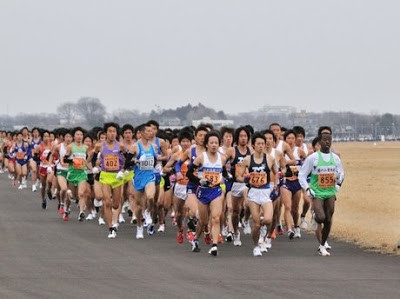
The women's race was even closer up front. 2020 National University Women's Ekiden champion Meijo University teammates Narumi Kobayashi and Yuna Arai worked together to put pressure on 2019 World University Games half marathon gold medalist Yuka Suzuki (Daito Bunka University). In the final kilometers Arai dropped off, but it came down to a photo finish between Kobayashi and Suzuki. Both clocked 1:14:36, with Kobayashi given the title and Suzuki 2nd. Arai was 9 seconds back in 3rd in 1:14:45 to join Kobayashi and Suzuki on the Chengdu team. Suzuki will have a rare opportunity to defend as gold medalist in Chengdu, assuming the Games happen.
(03/14/2021) ⚡AMPby Japan Running News
Matsuda Wins Windy Nagoya in 2:21:51
Going ahead where every other race its level has canceled or postponed, the Nagoya Women's Marathon went off as planned with an elite race, mass-participation field of 5,000, and 9,000 more in the accompanying half marathon. Strong winds reported as high as 14 m/s along the course held back the kind of times organizers had hoped for, but that didn't stop 2020 Osaka International Women's Marathon winner Mizuki Matsuda (Daihatsu) from taking a serious swing at the women-only national record of 2:20:29 set in Nagoya last year by Mao Ichiyama (Wacoal).
Matsuda, 25 km national record co-holder Sayaka Sato (Sekisui Kagaku), 2:24:52 runner Mao Uesugi (Starts) and debuting Ikumi Fukura (Otsuka Seiyaku) were the only ones to go out with a quartet of pacers on sub-2:20 pace. By 13 km that was down to only one pacer, half marathon great Rosemary Wanjiru (Starts), and just after hitting halfway in 1:10:23 only Wanjiru and Matsuda were left.
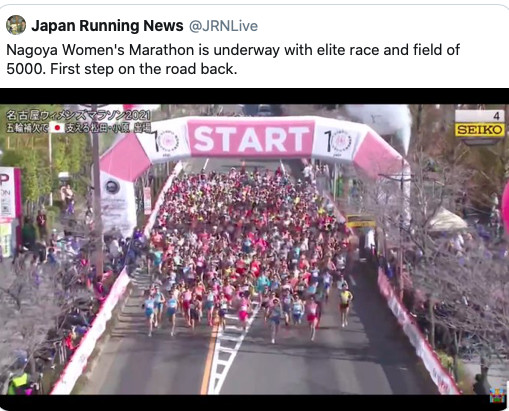
Matsuda stuck with Wanjiru until the pacer stepped off at 30 km, but while she tried to match Ichiyama's closing speed her time drifted slower and slower as she battled the winds. Bearing down in the home straight to the indoor finish she crossed the line in 2:21:51, just 4 seconds off her best from Osaka last year, gutted, weeping and apologizing on-camera for not having run faster. Her coach Miwako Yamanaka, 4th placer at the 2002 World Cross Country Championships, said post-race, "I know she was really focused on time, but this morning when I saw the conditions I told her that today was about the win, not time. I give her a 100%." Matsuda countered, "She's being too generous."
Completely alone for the last 20 km of the race, Sato held on for 2nd in 2:24:32, just over a minute off her debut last year but a quality time given the wind. The debuting Natsumi Matsushita (Tenmaya) came up from the 2nd pack to narrowly take 3rd in 2:26:26 with the next three finishers all within 30 seconds of her. Despite the conditions three other first-timers besides Matsushita made it under 2:30, and six women inside the top 25 ran PBs. Tokyo Olympic team alternate Rei Ohara (Tenmaya) was only 18th in 2:32:03, with Rio Olympian Mai Ito (Otsuka Seiyaku) 25th in 2:38:07 and London World Championships team member Mao Kiyota (Suzuki) 26th in 2:38:47.
Further back, women's 60+ world record holder Mariko Yugeta (Saitama OIG) likewise struggled with the wind, coming up short of her goal of breaking her own record of 2:52:13 from Osaka in January but adding another sub-3 to her resume with a time of 2:54:31 for 70th overall in her 110th marathon finish.
And behind her, thousands more women did what millions of others worldwide can still only dream of doing, crossing the finish line of a major marathon run through the downtown streets of a big city. Barring any resulting spike in infection numbers later this month, Nagoya was a beacon of hope that this fall will see all those who could only watch from a distance this time get their chances on the streets of Boston, London, Tokyo, and the world's other major cities.
(03/14/2021) ⚡AMPNagoya Women's Marathon
The Nagoya Women's Marathon named Nagoya International Women's Marathon until the 2010 race, is an annual marathon race for female runners over the classic distance of 42 km and 195 metres, held in Nagoya, Japan in early March every year. It holds IAAF Gold Label road race status. It began in 1980 as an annual 20-kilometre road race held in...
more...UTMB Is Back!
The world's most important trail race is driving forward-pandemic or not-and despite a tough year across the board, it seems to only be gaining steam.
While many races struggle to fill their 2021 entry slots, that was not a problem for UTMB, Chamonix, France's Ultra-Trail du Mont-Blanc-now six races from 40 to 300 kilometers, all of which take place during the final week of August in the legendary mountain town at the base of Mont Blanc. Despite a year off due to the global pandemic, interest in the race series remains very strong.
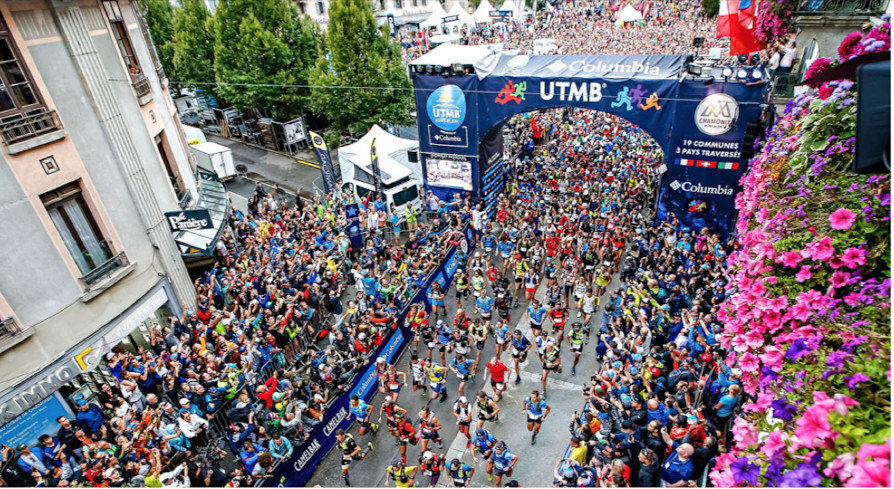
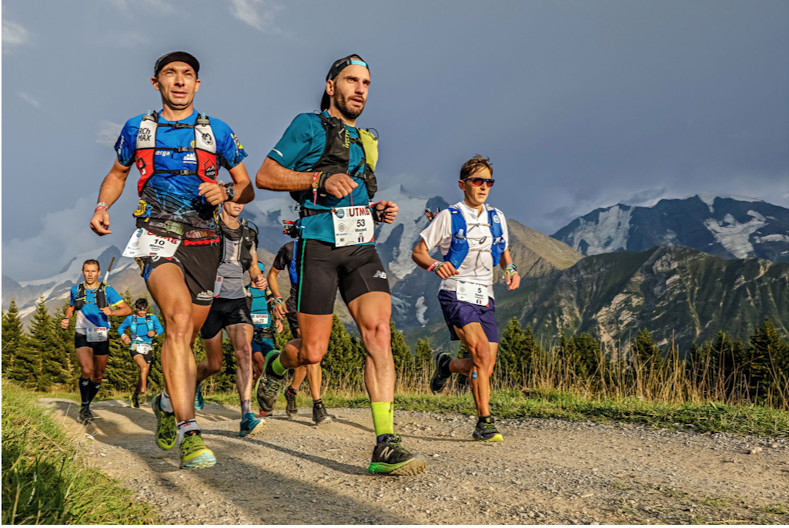
For the 16th time in a row, the UTMB races have sold out, with 10,000 runners slated across all the races. With the pandemic continuing to complicate international travel, the event's mix of nationalities has shifted, with more participants from within Europe and fewer from China and Japan. Despite the long-haul travel involved, U.S. interest in UTMB continues to grow, up slightly to 338 participants.
The UTMB organization is contemplating a number of changes this year, including a streamlined bib pickup system and wave starts with a few hundred runners in each block. Runners will have to wash their hands on their way into aid stations, with social distancing and masks being de rigeur. Shared food bins will be a thing of the past, and it's possible runner assistance areas may be altered or eliminated.
Despite the global uncertainty, 2021's marquee race around 15,774-foot high Mont Blanc looks to be among the most competitive trail races ever, on a par with 2017, which some observers have considered the most stacked trail race in the history of the sport. That year, France's Francois D'Haene edged out Catalonia's Kilian Jornet by 15 minutes, and Spain's Nria Picas won in a down-to-the-wire race, edging out Switzerland's Andrea Huser by under three minutes.
How did such a strong field coalesce? "It was really just organic. We didn't do anything specific to make it happen," says UTMB's Press Officer, Hugo Joyeux. One example is a post by three-time UTMB winner D'Haene, who asked on Instagram, "Who's coming back to take part in the party? I'll be there!" D'Haene went on to tag his top challengers, gently teasing them into showing up at the starting line next to the Mayor's office in the old part of Chamonix this August 27th. Most are in, with Jornet notably absent as he continues to reduce his trail-racing schedule to focus on mountaineering objectives.
The USA's top runners didn't need a social media ribbing from D'Haene to add the race to their calendars. Starting for the women will be Courtney Dauwalter, aiming for a second consecutive UTMB win, along with Katie Schide, Kaytlyn Gerbin, Brittany Peterson and Stephanie Howe. Schide, second in the CCC race in 2018, and 6th in the UTMB in 2019, currently lives in the south of France, in the maritime Alps region, and is easily the most experienced European racer among the U.S. women's elite entrants.
"UTMB reliably draws the most competitive field of the year," says Schide. With top runners coming out of an usual pandemic year-plus, Schide is eager to go head-to-head. "Time trials and personal challenges are fun, but racing is where I'm really able to find the absolute limits."
The U.S. men's delegation is equally competitive-with a dose of angst added, too. In 18 years, no American male has ever won UTMB. It's long since started to be a topic of discussion. Flagstaff, Arizona's Jim Walmsley has started UTMB twice, finishing fifth in 2017 and dropping out in 2019, while Tim Tollefson, from Mammoth Lakes, California, has had four starts, with two third-place finishes. In 2018, he took a serious fall, fileting a quadricep-yet he still managed to run another 90 kilometers before having to drop. The wound ended up requiring eight stitches. The following year, he showed up at the starting line feeling ill, and eventually dropped.
About 2021, Tollefson says, "It's going to be another barn burner," revealing that comparisons with others toeing the start line has been something with which he has struggled over the years. "Contrary to what most may believe, anxiety over who is or isn't in a field has tormented me historically," he explains. "Insecurities over training, fraudulent thoughts of belonging, self punishment and disrupted sleep were commonplace."
For Tollefson, that mix of emotions has added up to sleepless nights and high levels of stress. This past year, counseling has offered him a better perspective. In addition to the usual training, he's working on "becoming mindful in life and believing that the quest to become the best version of myself-which is not dependent on the love, acceptance or applause of anyone else-is the ultramarathon worth mastering."
"I left the Chamonix valley in 2018 full of anger, guilt and shame. What brewed over the next 12 months was a toxic cocktail of unchecked emotions and coping strategies," says Tollefson. "No matter how much I lied to myself and others, I simply did not want to be there."
How will he feel, arriving in Chamonix valley this August? "For the first time in years, the thought of being back in the valley, truly present, is beginning to excite me."
The restart of UTMB this summer is welcome news to this Alps tourist hub, which historically welcomes close to 100,000 guests for the race series at the close of each August. When last August's races were cancelled, the organization refunded 55 percent of the entrance fees for the 10,000 registered runners. The split created grumblings on social-media platforms. Meanwhile, the staff of 30, which includes UTMB's international races, suffered its own share of disruptions. They began working from home starting with the first French lockdown on March 17th, and didn't return to the office until this past December. They now operate with 50 percent of the staff in the office-masks required.
(03/14/2021) ⚡AMPby Trail Runner Magazine
Lifestyle changes that will help you lose weight
Losing weight is the top priority for millions of folks out there today. And rightly so. While aesthetics is an integral part of everyone wanting to have a slim, toned profile, being overweight or obese puts you at the risk of several health conditions such as diabetes, heart disease, high blood pressure, to name a few.
Here are a few lifestyle changes that will help you shed those pounds and achieve lasting weight-loss success.
Get Moving

Your marathon workouts may not be good enough if you spend the rest of the day sitting. Start by establishing a daily jogging routine. It could be as short as half an hour, but it will help you become more physically active. Find any other activity that moves or stretches your muscles. That could also include cycling, dancing, playing with your dog, going up and down the stairs. If your errands are within a mile away, walk to do them instead of using a car.
Ultimately, the goal is to indulge yourself in anything that gets your heart rate up, and you start feeling somewhat breathless. Even adopting changes as minor as taking the stairs instead of a lift can go a long way in your journey to lose weight in the long run. Remember, sitting for extended periods is one of the leading causes of obesity and other chronic health conditions.
Get Enough Sleep

While this may be the last thing on your mind, one of the leading factors that may be hampering your weight loss is not getting enough sleep. Besides eating right and exercising, getting quality sleep each night is an integral part of weight maintenance and a healthy lifestyle. A bad sleep-wake cycle significantly changes the way the body responds to food and thus causes weight gain.
Studies have found that sleep deprivation sets our brain to make bad decisions, leading us to make unhealthy choices throughout the day, like choosing high carb, high fat, sugary foods and indulging in midnight snacking. Not getting enough sleep can also up your stress levels which can increase your likelihood of weight gain. Therefore, make it a point to go to sleep earlier and aim for at least 7-8 hours of uninterrupted sleep each night.
Start Exercising
This one may not come as a surprise, but exercising is the key to maintain good health and lose weight along with a healthy diet. Along with a reduced-calorie intake, exercising creates a calorie deficit in your body by boosting your metabolism, leading to weight loss.
The good news is that you do not necessarily have to necessarily go to the gym and have a brutal workout, as there are plenty of exercises you can do at home without any equipment and achieve the desired results. If that interests you and you are unsure where to start, then we suggest checking out the Play Store. There are plenty of fitness apps that can guide you with customized workouts and nutrition plans.
Choose Healthy Snacks
It is crucial to stop stocking on junk food like chocolates, biscuits, candy, pastries, cookies, and potato chips. Packaged foods tend to be high in fat, sugar, and sodium and are high in empty calories providing you with no nutritional benefit in any way.
Therefore, you must limit or eliminate them from your diet and replace them with healthier alternatives such as nuts and seeds, fruits and vegetables, Greek yogurt, cottage cheese, or nut butter. While some of these foods may be high in fats, it is important to note that some fats are healthier than others. Monounsaturated fats can aid with weight loss and provide several other health benefits.
Stay Hydrated
Often, people confuse thirst for hunger, causing them to eat more food than needed. Therefore it is important to stay hydrated throughout the day by drinking sips of water regularly to curb unnecessary snacking as it is one of the best natural appetite suppressants.
Many people also consume excessive liquid calories by drinking soft drinks, juice, coffee, or tea. While there are many options for what you can drink, water is by far the best liquid you can choose for yourself to quench your thirst. Replace these sugary beverages with water as it is the best energizing liquid for your body and is 100 percent calorie-free. Water not just keeps your body hydrated but also boosts metabolism and improves the digestive process while burning fat consumed from food and drinks.
Losing weight is a daunting journey for many that require long, intense workouts and a deprivation diet that leaves you feeling hungry. While exercising and consuming a healthy diet are the central elements of the process, losing weight does not revolve around these two only. Making small but sustainable lifestyle changes and ingraining some healthy habits can make a big difference and help you shed those pounds effectively.
(03/13/2021) ⚡AMPby Colorado Runner
Olympic Marathon and Race Walk Test Event to Go Ahead May 5th
On Mar. 8 the organizing committee of the Hokkaido Sapporo Marathon Festival 2021 formally decided the final details for the May 5 event, which will serve as the test event for the Tokyo Olympics marathons and race walks. The half marathon will feature a total of around 80 men and women from Japan and abroad including those scheduled to compete in the Olympics, while the 10 km will be geared toward mass participation entrants, with a field of 2500.
The 10 km will be conducted according to guidelines prepared under the supervision of experts, with coronavirus measures including 1 m separation between participants. With regard to spectators along the course, Yasuo Mori, the event's deputy director, commented, "If we want people to stay away from the course we have to communicate that to them, so we must make a final decision by the end of March or early April. It's very important to minimize any concerns or fears the local people may have."
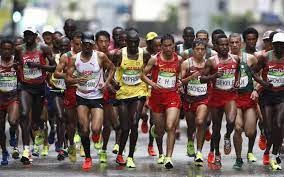
Online entries for mass participation runners open at 10:00 a.m. on Mar. 9 and will be open through Mar. 15. The results of the entry lottery will be announced Mar. 22. The Olympic race walks are scheduled for Aug. 5-6, with the marathons set for Aug. 7-8.
(03/13/2021) ⚡AMPby Japan Running News
Kenyan Florence Jepkosgei Chepsoi sentenced for forging documents
Kenyan long distance runner Florence Jepkosgei Chepsoi has received a one year community service sentence for faking documents as part of her defence on a doping charge, the Anti-Doping Association of Kenya (ADAK) announced.
She becomes the first Kenyan athlete to be found guilty in a criminal court.
The verdict was handed down after the trial in Eldoret following an investigation lasting a number of years.
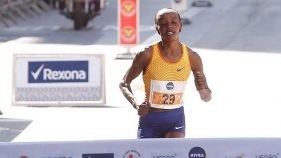
The 36-year-old marathon runner was banned for two years in 2017 for using performance-boosting drug Prednisolone.
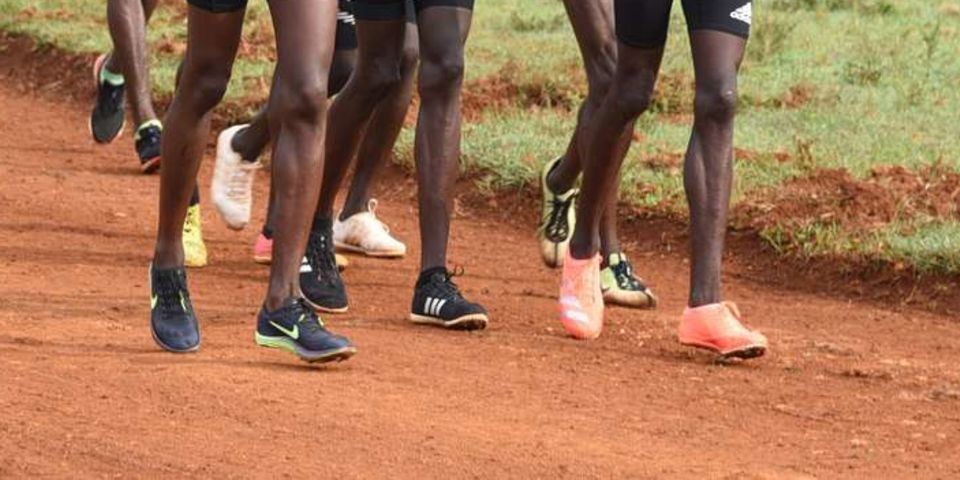
She was found guilty of providing false medical records from Eldoret's Uasin Gishu Hospital to support her defence case when she appeared before the Kenyan Sports Disputes Tribunal.
"The Uasin Gishu district hospital confirmed that those medical documents had been forged, and that the athlete had not been treated at the said hospital," ADAK said in a statement.
Over 60 Kenyan athletes have been suspended in the last five years for doping offences, including whereabout failures, a violation of the World Athletics anti-doping rules.
Kenya's 2016 Olympic women's marathon champion Jemima Sumgong is serving a lengthy ban after she was found to have falsified medical documents in an attempt to tamper with a positive test for EPO.
Sumgong, the first Kenyan woman to win an Olympic marathon, tested positive for the blood-booster in an out-of-competition test five months after winning gold in Rio.
(03/13/2021) ⚡AMPWorld records could be the order of the day at the Antrim Coast Half Marathon as Ethiopia star Yalemzerf Yehualaw confirms spot
World records could be the order of the day at the Antrim Coast Half Marathon with four-time Olympic gold medallist and defending champion Sir Mo Farah set to be joined by Ethiopian distance sensation and second fastest woman of all time Yalemzerf Yehualaw.
Elite race organiser James McIlroy - who himself reached the 800m semi-finals at the 2000 Sydney Olympics - has swooped to sign up Yehualaw for the August 29 showpiece and the athlete's agent has made clear that the opportunity to break the world record of 64 minutes 31 seconds on what is a very fast course is one of the main attractions drawing her there.
The 21-year-old boasts a PB of 64.46 and the Antrim Coast Half Marathon will be one of only four events she will contest this year and the first after the Tokyo Olympics.
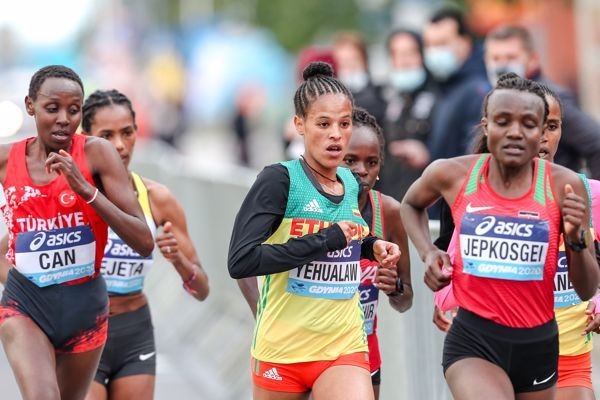
Yehualaw's agent Daan van den Berg said: "Yalemzerf will only do two half marathons this year - Istanbul and the Antrim Coast Half - along with two 10,000m before the Olympic Games.
"The Antrim Coast coming three weeks after the Olympics is perfect timing, and we know if the Irish crowd get behind her she can break the world record as last year's race looked brilliant, with 35 out of 62 runners recording personal bests."
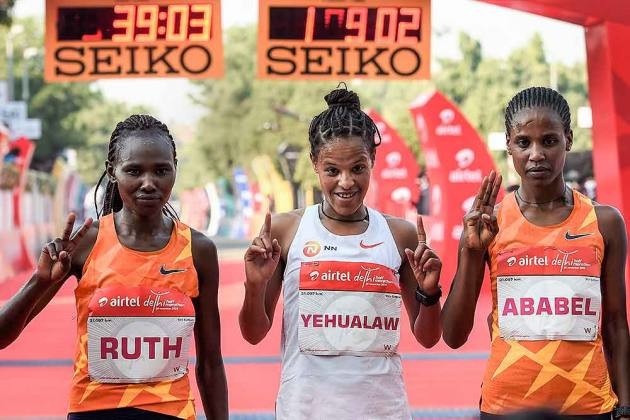
Yehualaw finished third at last year's World Championship after leading for most of the race before tripping on the finishing straight mat, and will be joined at the Larne event by Ethiopian team-mates Yitasyish Mekonnen and Tsehay Gemechu.
The African stars will be joined by early confirmed British internationals Jo Pavey, Sam Harrison, Tracy Barlow and Kirsty Longley.
The men's race will be one of the greatest half marathon fields ever assembled in the UK or Ireland. Race organisers have made no secret of attacking the 60-minute barrier and already have a strong international line-up, with four sub-60 runners already confirmed.
Making their first appearance ever in Ireland will be the African quartet of Tesfahun Akalnew (59.22), Victor Kiplangat (59.26), both from Uganda, Abrar Osman (59.47) of Eritrea and up and coming Kenyan Daniel Mateiko, all of whom will be attacking Sir Mo's course record 60.27 from last year.
It is hoped Sir Mo - coached by Larne-born Gary Lough, who is married to distance legend Paula Radcliffe - could be coming to Larne with Olympic gold number five tucked safely away after Tokyo.
(03/13/2021) ⚡AMPby Frank Brownlow
MEA ANTRIM COAST HALF MARATHON
The MEA Antrim Coast Half Marathon 2022 has been approved by World Athletics as an Elite Event. The World Athletics certified course takes in some of the most stunning scenery in Europe, combined with some famous landmarks along the route. With it's flat and fast course, the race is one of the fastest half marathons in the world. Starting...
more...China is offering vaccines against covid -19 to Olympic and Paralympic athletes
International Olympic Committee (IOC) president Thomas Bach announced recently that the Chinese Olympic Committee has offered COVID-19 vaccine doses to athletes competing at the Olympic and Paralympic Games this summer, as well as the 2022 winter Games in Beijing.
According to the BBC, Bach said that the IOC will be paying for these additional vaccines set aside for the athletes.
“For each of these doses, the IOC will pay for two doses more which can be made available to the population in the respective countries,” he added.
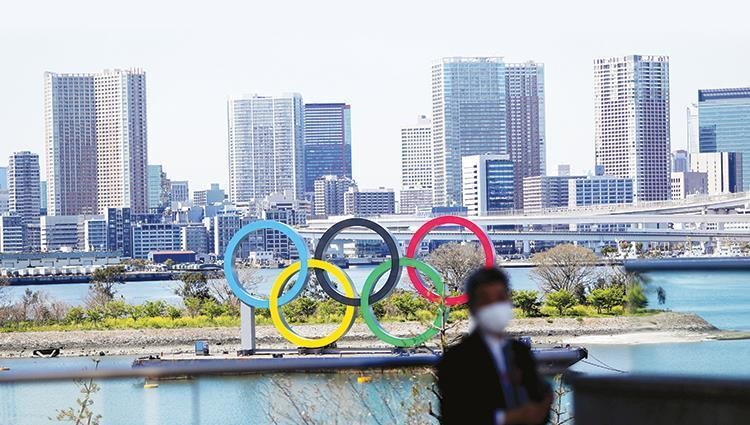
Exactly how many vaccine doses that will require is unclear, because the pace of the vaccine rollout in some countries may be fast enough that their athletes will have already received the vaccine before the Games begin. This could be the case, for example, in the United States.

“The broad base of athletes may have access to the vaccine sooner than we thought initially possible,” said Sarah Hirshland, United States Olympic and Paralympic Committee chief executive.
Some critics believe that China offering to immunize athletes ahead of the Games is nothing more than a PR stunt in response to increasing calls to boycott next year’s Winter Games because of political reasons. Still, the opportunity to vaccinate at least some of their citizens will be a welcome relief in countries where vaccine programs have been very slow.
Despite China’s offering, Olympic committees in countries like the U.K., the United States and Germany have said that their athletes must wait in line like everyone else to receive their vaccinations.
The IOC has made it clear that they’d prefer as many athletes as possible to arrive in Tokyo with both doses, but maintain that it is not mandatory in order for them to compete and are not asking governments to change their vaccination rollout plans.
(03/12/2021) ⚡AMPby Brittany Hambleton
Tokyo 2020 Olympic Games
Fifty-six years after having organized the Olympic Games, the Japanese capital will be hosting a Summer edition for the second time, originally scheduled from July 24 to August 9, 2020, the games were postponed due to coronavirus outbreak, the postponed Tokyo Olympics will be held from July 23 to August 8 in 2021, according to the International Olympic Committee decision. ...
more...Athletics Ireland confirm positive Covid case in team that returned from European Indoor Championships in Torun
Athletics Ireland have confirmed that a member of the Irish team returned a positive test for Covid-19 on Thursday morning after competing at the European Indoor Championships in Torun, Poland at the weekend.
As a result, all team members have been personally contacted and close contacts of the positive case in the travelling party are now self-isolating for a period of 10 days, from last Monday, in line with public health guidelines.
Athletics Ireland is liaising with all relevant authorities to manage this matter and continues to follow all protocols as agreed with the Sport Ireland Expert Advisory Group and the HSE.
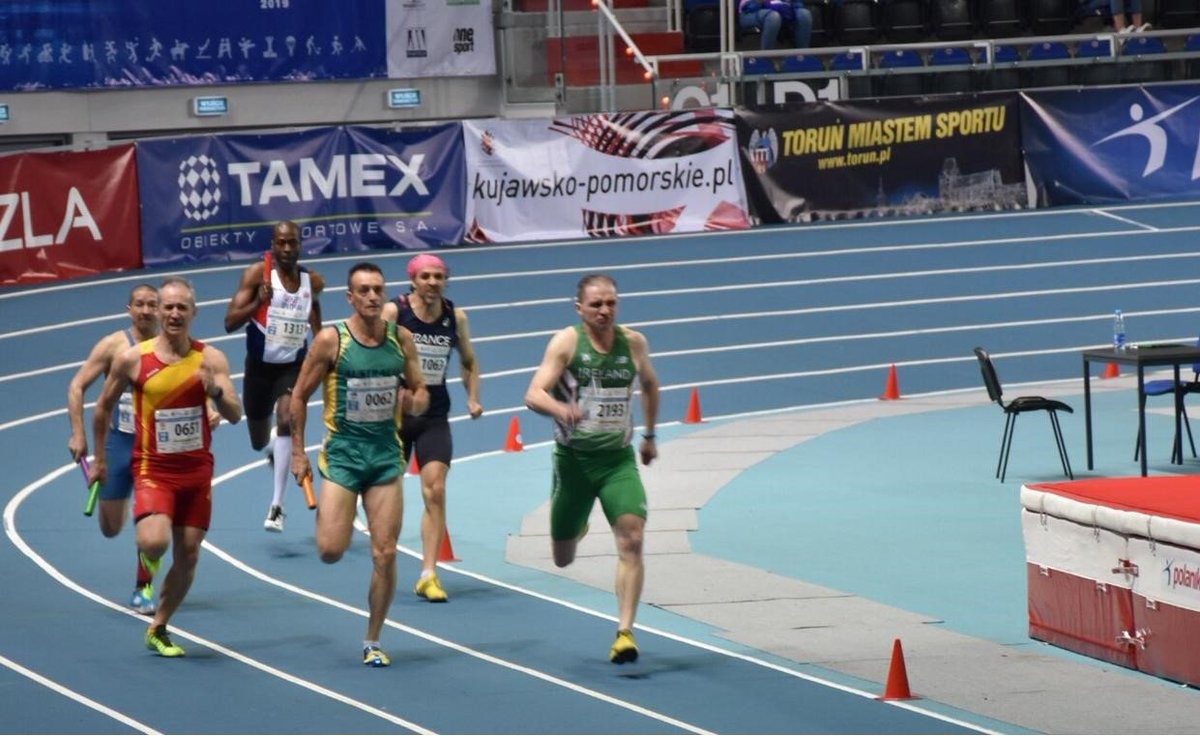
Athlete Darragh McElhinney was a late withdrawal from the team after the 3,000m runner returned a “weak positive” prior to departure, despite several negative tests either side of it.
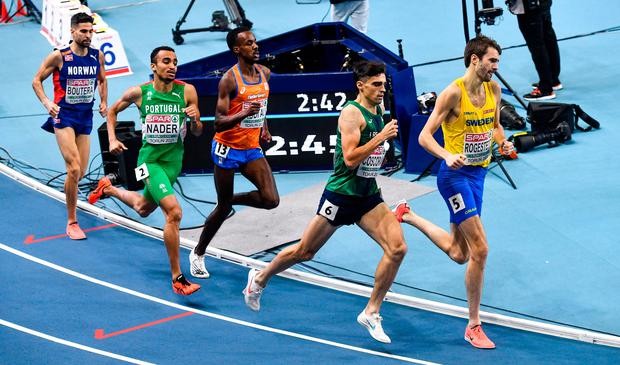
The entire British athletics squad have been also forced to self-isolate after a member of the support staff returned a positive lateral flow test for Covid-19.
British Athletics confirmed the 46-strong squad, who won a total of 12 medals at the Championships, must undertake a period of 10 days in isolation in line with UK government guidance.
Despite strict protocols, all competing athletes required to test negative upon arriving in Poland and again in Torun, as well as submitting to further tests every five days, several positives cases impacted on events.
Poland’s men’s 4x400m squad, fancied to win gold, had to withdraw following an outbreak , and Belgian sprinter Eline Berings also criticized the testing procedure after she was forced to withdraw from the semi-finals of the 60 meters, claiming it was due to a false positive.
(03/12/2021) ⚡AMPby Ian O'Riordan
European Athletics Indoor Championships
Witness six sessions of action-packed sport over three days of intense competition as some of the best athletes in the world compete for prestigious European titles. Don’t miss the opportunity to witness this thrilling event and get closer to the action. ...
more...The Best Ways To Stay Healthy And Fit Even If You Are Very Busy
When you are working it can be hard to fit in time to look after yourself. However, you need to make some time whenever you can, even when you are really busy. If you do not look after yourself now, and you do not follow a healthy diet and lifestyle then you can find that illnesses can quickly catch up with you and slow you down. So, it is important to make changes as soon as you can so that you can start to reap the rewards both now and in the long term.
Food and Diet are Key
It can be hard to cook and plan nutritious meals when you are constantly on the go. However, it is important to stop and eat properly when you can. It is not always possible, but to make it easier on yourself you could try batch cooking. When you cook and freeze meals in advance you always have something healthy and nutritious in the freezer waiting for you, all you need to do is reheat it. This is good for when you know you will be getting home eventually, even if do not know what time.

Supplements are essential

If you are not sure when you are getting home, or if you are even getting home then you need to use supplements. Your productivity levels, energy and concentration will all be affected if you do not get the goodness that you need. There are men’s vitamins and supplements tailored specifically to men’s requirements and needs, and these are what you should be taking.
They feature a natural blend of ingredients that ensure they will be easy on your stomach. In tablet or gummy form, they are easy to swallow even if you are on the go. Supplements also come in a handy size which is ideal to carry around with you, so you can take them with you even when you are away from home and on the move.
Exercise is a must
Any exercise that you get chance for is beneficial. Exercise makes you feel good as you release endorphins in the process. Exercise also keeps your body working efficiently and effectively. When you exercise you increase your heart rate and you strengthen your cardiovascular health in the process. Exercise, whether gentle or high octane gives you a way to release any excess energy you may have, or it can also give you a burst of energy to keep you going.
Rest and sleep are a necessity
You need to rest or you will not be able to sustain your work load. Even when you are super busy you still need to take (or create) some free time within your day to rest. You cannot keep going at the speed or pace you currently are, without heading for a breakdown, especially if you have not had adequate rest or sleep, so make time to rest. Remember that even short power naps can be better and more beneficial to you and your overall health than simply not sleeping at all.
(03/12/2021) ⚡AMPby Colorado Runner
BMW Dallas Marathon Festival Moved to December 10-12 due to pandemic
The Board of Directors and Staff of the BMW Dallas Marathon announced the postponement and new date of the running of the 50th Anniversary of the BMW Dallas Marathon Festival, from April 30 – May 2 to the weekend of December 10-12, 2021.
“Unfortunately, due to the continuance of the COVID-19 pandemic, we are unable to host the BMW Dallas Marathon Festival this spring in a manner that our participants and guests have come to expect and enjoy from our organization” said Paul Lambert, President of runDallas, a nonprofit organization that raises money for Scottish Rite for children through hosting the BMW Dallas Marathon Festival.
Stated Mark Rybczk, Chairman of the Board of Directors “the health and safety of our runners, walkers, volunteers, partners and all guests are of the highest priority while we continue to navigate through this pandemic.”
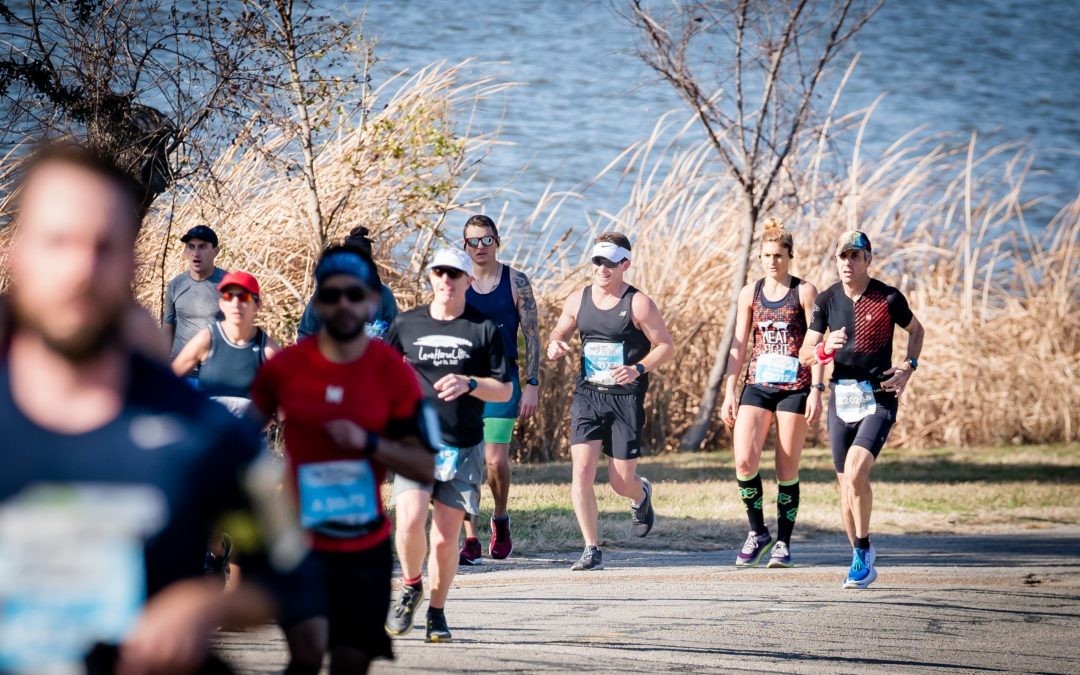
In addition, “while we are very disappointed in postponing the event, we look forward to hosting our 50th Anniversary in December in the right environment to safely celebrate the running of the 50th Anniversary of the BMW Dallas Marathon Festival.”
Registered runners have these three options to select from during the month of March:

- Take no action and their registration will defer to December- Convert their registration to do the 50th Anniversary Virtual event in May
- Elect to run in both events by entering the BMW Pegasus 50th ChallengeNonregistered runners can register in the month of March for the BMW Pegasus Challenge or the 50th Virtual in May, or through December 10th for the 50th Anniversary in person event.
The BMW Pegasus 50th Challenge is comprised of two 50th Anniversary themed events, the May virtual event (5 individual event distances to choose from) and the 50th Anniversary of the BMW Dallas Marathon Festival in December (10 event distances to select from).
Runners and walkers who participate in both events will receive 50th themed amenities specific to each event distance, plus a bonus 50th running cap, as well as double their chance of winning the 2021 Special Edition BMW car.
All participants who registered for the Virtual event in December of 2020, the Virtual event for May of 2021, and or the in-person event for December of 2021, will be entered into the sweepstakes to win the BMW car to be drawn at the start line of the Marathon on Sunday, December 12th.
We are also announcing today a partnership with Kendra Scott to celebrate our 50th Anniversary. Starting today, participants can purchase a specialty priced 50th Anniversary gold necklace with proceeds benefiting the Scottish Rite for Children.
(03/12/2021) ⚡AMPBMW Dallas Marathon
The BMW Dallas Marathon is the result of the efforts of a pioneering group of brave Dallas runners, who had the foresight to establish an annual 26.2-mile race more than 40 years ago. In 1971, Tal Morrison – the official founding father of the marathon – placed a $25 ad in Runner’s World beckoning runners from around the country to...
more...Gearing up for the Yuengling Shamrock Marathon Weekend for Virginia Beach with all-new, COVID-safe race
The capacity limits will be different, the timing will be different, the courses are new and it will kick-off at King Neptune.
We're coming up on a year of COVID-19 in the U.S.
So many events were canceled in 2020 and already Norfolk called off its 2021 St. Patrick’s Day parade.
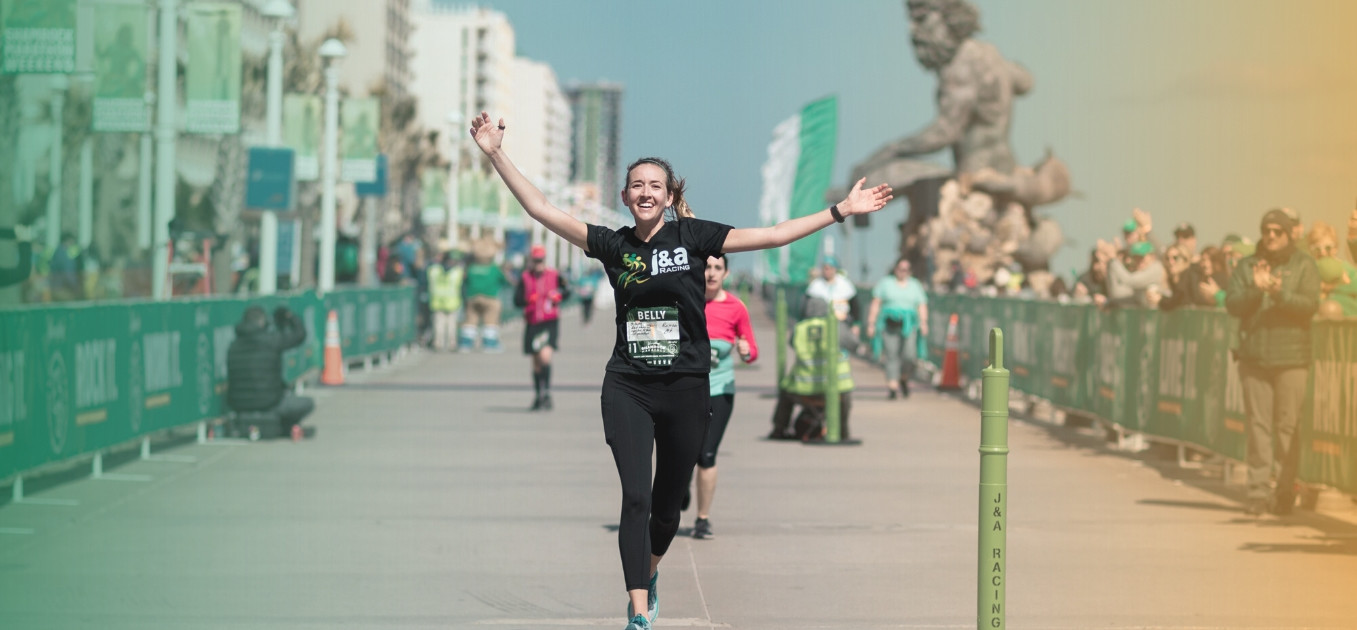
“About 30,000 people show up to watch the parade,” said Norfolk Vice Mayor and parade committee member Thomas Martin. “With current guidance, we just didn’t feel like we could do that safely.”
Still, a lot of organizers are looking at how to not miss out in 2021. That is especially true in Virginia Beach. As the city is seeing more record-breaking COVID case days, the organizer of the Yuengling Shamrock Marathon Weekend has some ideas on how to keep runners safe.
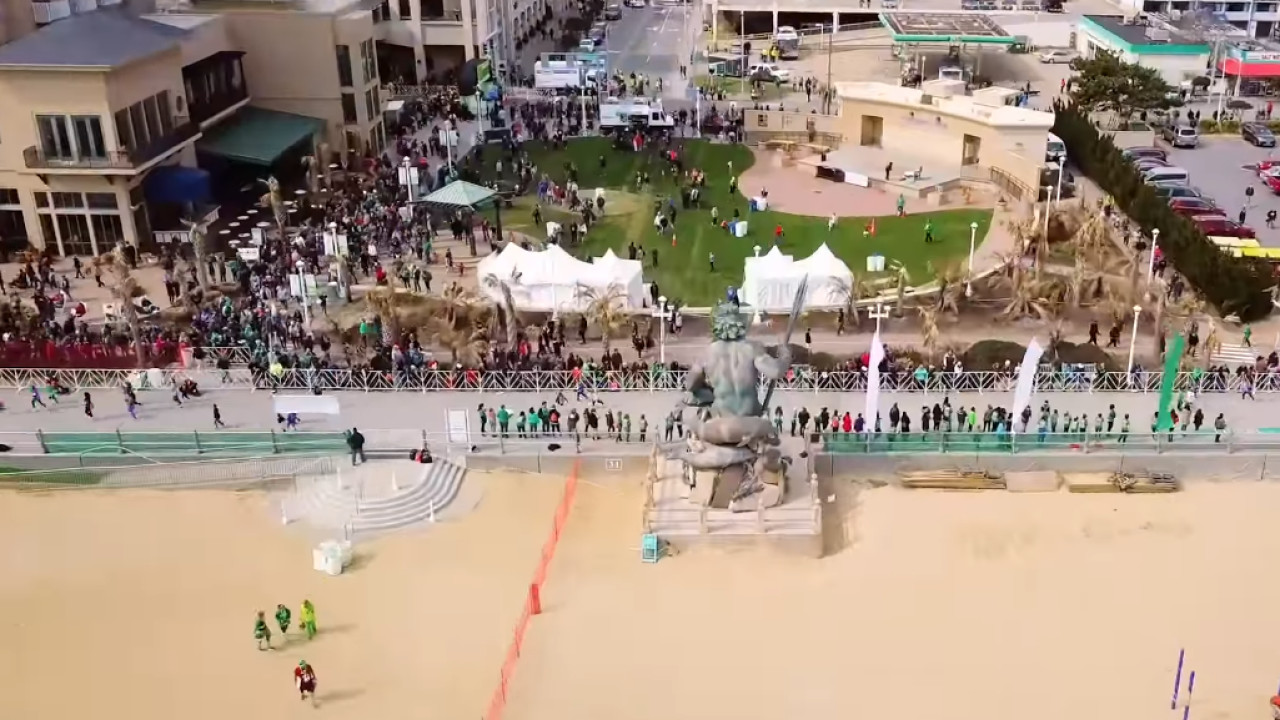
Their luck ran out when COVID forced them to cancel their 48th weekend last year.
“The big tent was already up on the beach; everything was set, and the Governor declared a state of emergency,” said J&A Racing Co-director Jerry Frostick.
The 49th year brings a one-of-a-kind, COVID safe, race.
“There is no, 'On your mark. Get set. Go,'” Frostick said.
To cut the crowds, racers can run the 8K, half or full marathon any time over the weekend between 7 a.m. and 5 p.m. each day.
“You’ve got 10 hours a day that you can go at your own pace,” Frostick said.
The three new courses are spread out around Virginia Beach, along the Boardwalk and sidewalks, not the main roads. Races will still be timed.
The biggest changes of all are the limited capacity, and no party tent to celebrate.
Frostick said their usual 25,000 race count will be between 5,000 and 7,000, with many of those runners doing it virtually.
“It’s a huge difference,” Frostick said.
The tradition jumpstarts the summer season for Oceanfront businesses.
“All the businesses have supported this for 49 years,” Frostick said. “And they’ve had a really tough year, as all of us small businesses have.”
Frostick said running is also just good for the soul, especially during a global pandemic. His team is focusing on positivity and changing luck for their 49th year.
“It’s not the same experience, we acknowledge that,” Frostick said. “But it’s what we can do, instead of what we can’t do.”
(03/11/2021) ⚡AMPby Allison Blaze
Yuengling Shamrock Marathon
The Shamrock Marathon was born in 1973. It was the brainchild of Jerry Bocrie, who along with his wife Lori would serve as race director for 30 years. The inaugural marathon had 59 entrants and 38 finishers, and the weekend also featured 1-mile, 2-mile, and 6-mile races. In 1976, the 6-miler gave way to an 8k, which has remained a...
more...Tips to Make a Strong Comeback to Running After an Injury
Coming back from a running injury stinks. But, it stinks a lot less than the time spent actually dealing with the injury. The first and perhaps most important thing to keep in mind when getting back to running after a long hiatus due to injury or an accident: Be grateful for every mile.
The Slow Build
The second you get the green light to begin running does not mean you can jump full-force back into where you left off. It is important NOT to rush things, as patience pays off in the long haul. Gradually increase the amount of time you spend running and supplement the rest with cross-training.

Don't Slack on PT
Many runners, upon getting over their injury, start to get lax on their physical therapy or other rehab exercises. Don't get comfortable and forget that, in order to prevent getting injured again, you still need to keep up on your preventative care.

Post-Injury Comparisons
After a long break, you need to chuck out any and all comparisons to your runner self pre-injury. It will only set you up for frustration and can ultimately derail your comeback. Track the progress you make post-injury and take every victory (ie: extra miles, faster workouts, etc.) as it comes. Eventually you'll return to "old you" workouts and times, but before you hit that realm think of yourself with a totally clean slate.
Miracle of Muscle Memory
Oh how those first few runs will whip your butt! The important thing is to remember that while those first runs will feel like you've got legs that have never run a step in their lives, the good news is, thanks to muscle memory, if you've been a runner for a number of years, you'll snap back into fitness rather quickly. The first couple of weeks will be rough, but stick it out and you'll be motivated by the progress that follows.
One Day at a Time
Being patient is tough for everyone. Sometimes the only way to retain sanity is to take it one day at a time. Rather than focus on how much work you have ahead of you, look at what workouts and goals you can achieve for that day or that week. Set mini goals each week and check them off as benchmarks along your route to making a full comeback to running.
Core, Strength and Flexibility
Make the most of the time you're not able to run by focusing on other weaknesses. Gain flexibility, improve your core and overall strength; not only will this make you feel like you're being productive despite not being able to run much, but it will also pay dividends when you are back and running at your optimal level.
Baby Steps Back
If you start to notice old injury symptoms or new injury symptoms creep up, reassess right away. It may mean not increasing your running for that week, or even taking a few baby steps back for the week. Cut back on the amount of time spent running and do more cross-training. Don't think of this as a sign of defeat; typically, if you catch it and take steps back early, you'll avoid anything serious and be back on "schedule" the next week.
Positivity and Perspective
I'll say it again: The biggest deciding factor in how well you can come back from an injury is perspective. Even on the days when you'd like to burn the elliptical or bike to the ground, give yourself a little window of time to vent. But, in the end, get on the cross-trainer and get it done. Look forward to the runs and more miles as they come and do not forget that each mile is NOT a given. Be grateful for them and, as you are able to run more and are back to full training mode, remind yourself not to take them for granted. This will help you remain patient and keep your eyes focused on the long term.
(03/11/2021) ⚡AMPby Caitlin Chock
2021 Bolder Boulder Cancelled Again
The organizers of the Bolder Boulder 10K road race say that COVID-19 restrictions prevent them from running the event in 2021. It’s the second year in a row that the coronavirus pandemic has led to the cancellation of the event which had taken place in Boulder on Memorial Day since the 1970s.
“The bottom line after talking daily with public health officials, the city of Boulder and the University of Colorado is that safety restrictions and our timeline prevent us from holding the traditional BOLDERBoulder,” the race organizers wrote on the Bolder Boulder website.
As an alternative to the timed race of 50,000 or so participants, organizers have announced plans to allow for runners and walkers to experience alternative timed 10K options over the Memorial Day weekend.

They’re calling it Bolder on The Run 10K.
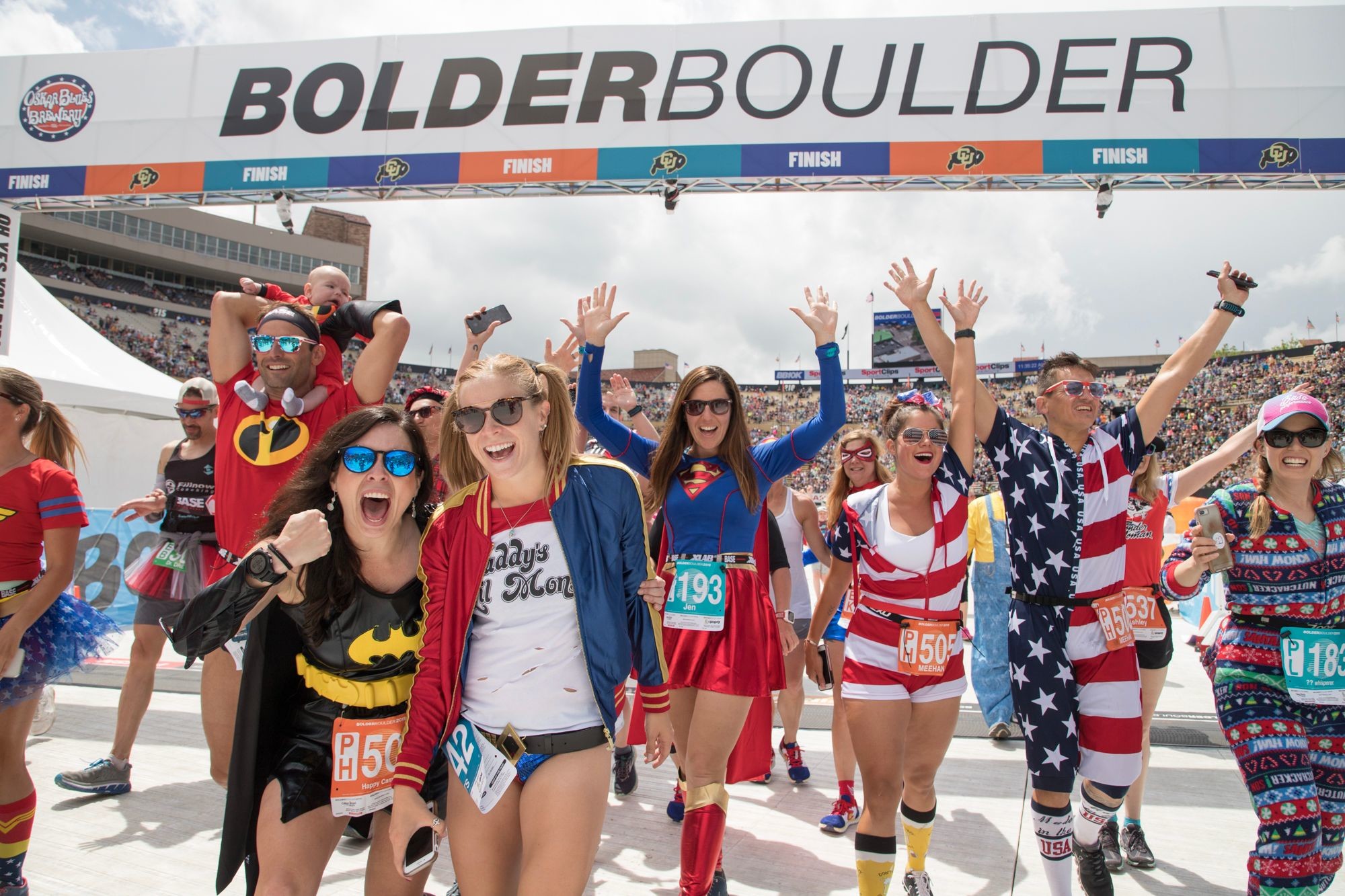
Racers will be given the opportunity to line up during various time slots at five different locations across Colorado’s Front Range, and there will be a cap on the number of participants allowed.
According to the website, “All courses will be marked, measured and timed using RFID tags on the bibs.” The five different courses are as follows:
– Mary Carter Greenway Trail, Littleton/Denver– Firestone Trail, Firestone– Interlocken, Broomfield– The Ranch, Loveland– Coal Creek Trail, Erie.
(03/11/2021) ⚡AMPby Colorado Runner
BOLDER BOULDER
In 1979 we dreamt of attracting a few hundred of our friends to race though the streets of Boulder, Colorado to celebrate Memorial Day with our families. Fast forward almost 40 years and the Bolder BOULDER has grown to become one of the largest and most highly acclaimed 10K’s in the world. Almost 1.2 million runners, joggers, walkers and spectators...
more...Ruth Chepng'etich believes lack of foreign fans at the upcoming Tokyo Olympics will affect many athletes' performances
On Tuesday, Kyodo News Agency reported that the organisers are planning to lock out foreign supporters from the Games due to the ongoing coronavirus pandemic, leaving many to ponder what this will mean for the global show.
Chepng'etich said the presence of fans, especially Kenyans, is an added impetus for her — as well as other Kenyan athletes — especially when the going gets tough in the road races.
"Many times, your legs are weak and tired and that's when the fans come in. There are many races in which the sound of fans cheering me on and screaming my name has fueled me to give my all and repay them by crossing the finish line first. With the ban on foreign fans at Tokyo, am afraid that performances will be slightly impacted especially at vulnerable moments," Chepng'etich said.

Chepng'etich hopes that training in solitude at her Ngong' base will however give her a psychological edge when she hits the Tokyo roads alongside other marathoners during July 23-August 8 event.
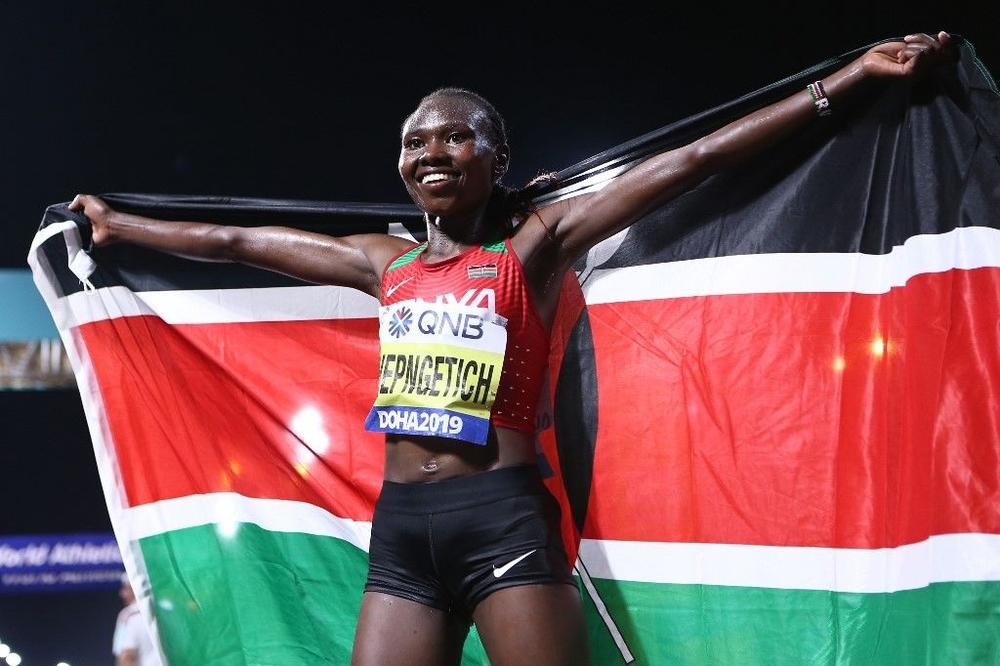
"I have been training exclusively in Ngong' rather than my home area in Kericho due to the Covid restrictions and the need for quarantine. Regardless, I have put in a lot of work with a focus on securing an Olympic gold medal to add to my world marathon champion collection," she said.
The fourth-fastest female marathoner has set her sights on breaking the world marathon record currently held by her Team Kenya teammate Brigid Kosgei.
However, she concedes this will not be a walk in the park considering Kosgei has severally expressed her desire to reduce her record to 2:13.00.
"The competition will not be easy; I am not expecting it to be considering the prestige that comes with competing in the Olympics. This is a once-in-a-lifetime opportunity for which all athletes have been preparing for many years. Therefore, I expect a tough competition not only from my able compatriots but also from other nations because every one will give their all," she said.
Despite this sobering assessment, Chepng'etich is still bullish that the Kenyan quartet of Peres Jepchirchir, Vivian Cheruiyot, Kosgei and her can produce a 1-2-3-4 finish in Tokyo.
(03/11/2021) ⚡AMPby Omondi Onyatta
Tokyo 2020 Olympic Games
Fifty-six years after having organized the Olympic Games, the Japanese capital will be hosting a Summer edition for the second time, originally scheduled from July 24 to August 9, 2020, the games were postponed due to coronavirus outbreak, the postponed Tokyo Olympics will be held from July 23 to August 8 in 2021, according to the International Olympic Committee decision. ...
more...Athletes could be required to undergo more COVID-19 testing at Tokyo 2020 due to the the spread of more transmissible variants
Tokyo 2020 President Seiko Hashimoto has suggested the number of times athletes are tested for coronavirus could be increased amid growing fears over the spread of more transmissible variants.
Plans are in place for competitors to be tested once every four days during their time at this year’s rescheduled Olympic Games.
But Hashimoto is now considering increasing the testing frequency after the emergence of variants first identified in the United Kingdom, South Africa and Brazil which are continuing to spread worldwide.
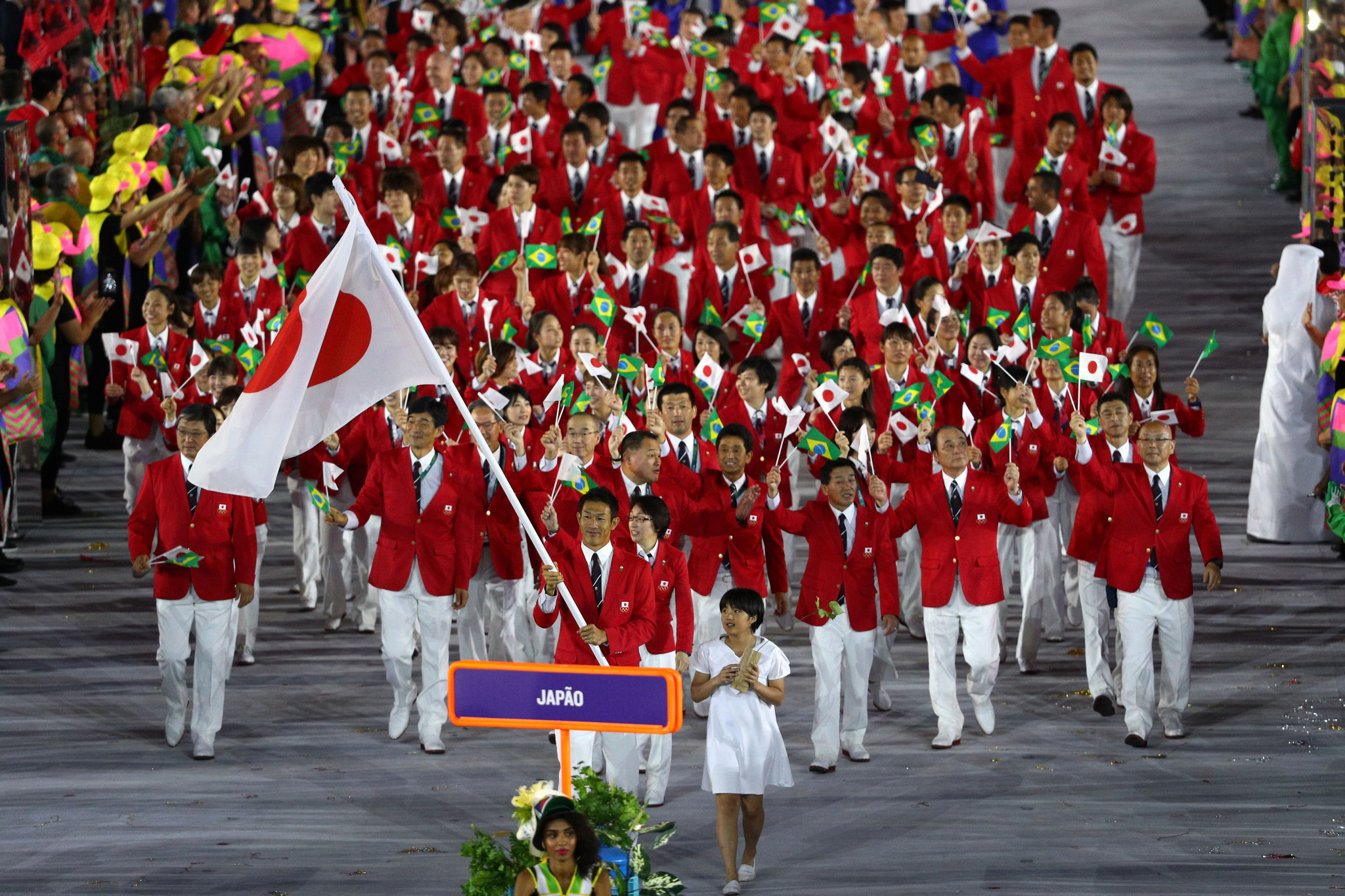
Speaking to Japanese media, Hashimoto revealed that International Olympic Committee (IOC) President Thomas Bach had called on organisers to implement a stricter testing protocol to combat the virus.
"From the athletes' perspective, I think it's better that testing rules are strict to begin with rather than having a change in protocols announced midway through [the Games]," said Hashimoto in a report by Kyodo News.

"We do need to think about [increasing testing frequency)."
Hashimoto spoke to Bach during a recent meeting involving the Tokyo 2020 Organising Committee, the IOC, the International Paralympic Committee, the Tokyo Metropolitan Government and the Japanese Government.
Around 11,000 athletes are expected to compete at the Olympics in Tokyo.
But the number permitted to march in the Opening Ceremony is set to be restricted with Hashimoto suggesting it will be around a third of the amount that took part in the event at Rio 2016 which exceeded 12,000.
"Hopefully we can send the world a movie that provides a ray of light as we agonise and suffer from the coronavirus," Hashimoto about the staging of the Opening Ceremony.
"Given the situation, it might not be an Opening or Closing Ceremony where many people gather."
Hashimoto also indicated that changes could be made to the scheduling of events should an outbreak of coronavirus occur at the Games.
"We need to simulate for any potential scenarios," said Hashimoto.
"It's hard to think there won't be anything happening.
"Having no spectators is not totally ruled out."
The Games were originally scheduled to take place last year before being postponed to 2021 due to the coronavirus pandemic.
The Tokyo 2020 Olympics are due to open on July 23 and conclude on August 8.
(03/10/2021) ⚡AMP
by Geoff Berkeley
Tokyo 2020 Olympic Games
Fifty-six years after having organized the Olympic Games, the Japanese capital will be hosting a Summer edition for the second time, originally scheduled from July 24 to August 9, 2020, the games were postponed due to coronavirus outbreak, the postponed Tokyo Olympics will be held from July 23 to August 8 in 2021, according to the International Olympic Committee decision. ...
more...London Marathon funding will benefit 29 British runners
London Marathon Events will offer funding to 29 of Britain’s leading endurance athletes this year as part of its ongoing commitment to support distance running.
Among the athletes on the funding list are Amy-Eloise Markovc and Verity Ockenden, who won gold and bronze in the 3000m at the European Indoor Championships in Poland last weekend, plus Marc Scott, who went No.2 on the UK all-time 10,000m rankings last month.
This is the third year London Marathon Events has offered direct support to athletes who sit just outside British Athletics’ World Class programmes and Futures programme, but who still have the potential to star at major competitions.
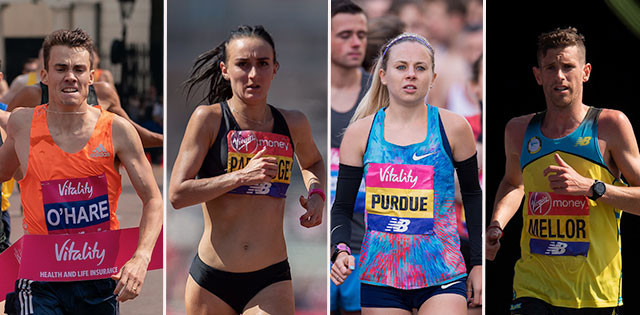
When it comes to helping develop up-and-coming endurance athletes, London Marathon Events also helps support the two new talent hubs in Leeds and Birminingham, The Daily Mile for primary school children in London and of course the Virgin Money Giving Mini London Marathon.
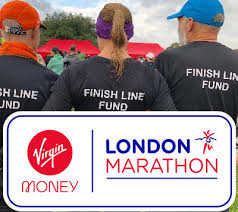
The impact of this funded pathway is already showing results, as seen in Poland last weekend. Medallists Markovc and Ockenden are on the current elite athlete funding programme while two graduates from the programme, Piers Copeland and Neil Gourley, made the 1500m final.
Meanwhile, four athletes from the talent hubs were competing in Poland, led by Keely Hodgkinson plus Isabelle Boffey, Amelia Quirk and Phil Sesemann.
Hugh Brasher, Event Director of London Marathon Events, said: “Since the London Marathon was founded in 1981, we have worked to improve endurance running in this country. We are committed to providing a pathway from the playground to the podium for athletes in this country, from The Daily Mile to our elite athlete funding programme and it is really encouraging that the Great Britain team at the European Athletics Indoor Championships included so many athletes who have been, or are part of, the London Marathon Events funding system.
“It was wonderful to see Amy-Eloise Markovc, one of our funded athletes, and Keely Hodgkinson, supported by one of the talent hubs, win gold medals over the weekend and we will continue to work to support the success of future British international athletes.”
All athletes who were on the 2020 programme have been offered funding for 2021, with the exception of Copeland and Jake Smith who have both graduated to British Athletics’ Futures Academy programme.
There has been one addition to the funding list for 2021 with US-based Sam Atkin, who 27:26:58 for 10,000m in December.
Brasher said: “Last year was an incredibly difficult year for everyone, including our elite athletes. With the lack of races and the difficulties they faced in accessing both training and support facilities, we believe it is right and fair that those who were on last year’s programme have the same opportunity in 2021.
“Even with all the challenges of last year, athletes on our funding programme had an extremely successful 2020, winning a total of 13 British Athletics championships medals and that has continued into 2021 with Marc Scott’s phenomenal run in California and the great performances at the European Athletics Indoor Championships.
“This shows that our plan to provide a bridge to British Athletics’ funding is working and we hope the class of 2021 continue that progression and we see as many of them as possible competing in the Tokyo Olympic Games.
(03/10/2021) ⚡AMPby Jason Henderson
Akron Marathon confirms return this year
After a year of isolation due to COVID-19 and months of cold weather, it's time to start running again.
The Akron Marathon on Tuesday announced there are 200 days to go before the main event in September. The first event is set for June, and slots are filling up. Half of the September marathon registrations already have been spoken for as well.
Summit County Public Health approved the plans in a letter to the nonprofit back in November, stating the protocols established were, "very thorough and well thought-out," according to Tonia Burford, environmental health director.

"With the staggered start and bracelet system you have implemented to limit capacity in the races that end in stadiums, there is no need to apply for a variance at this time under the current sports directors' order," Burford wrote.
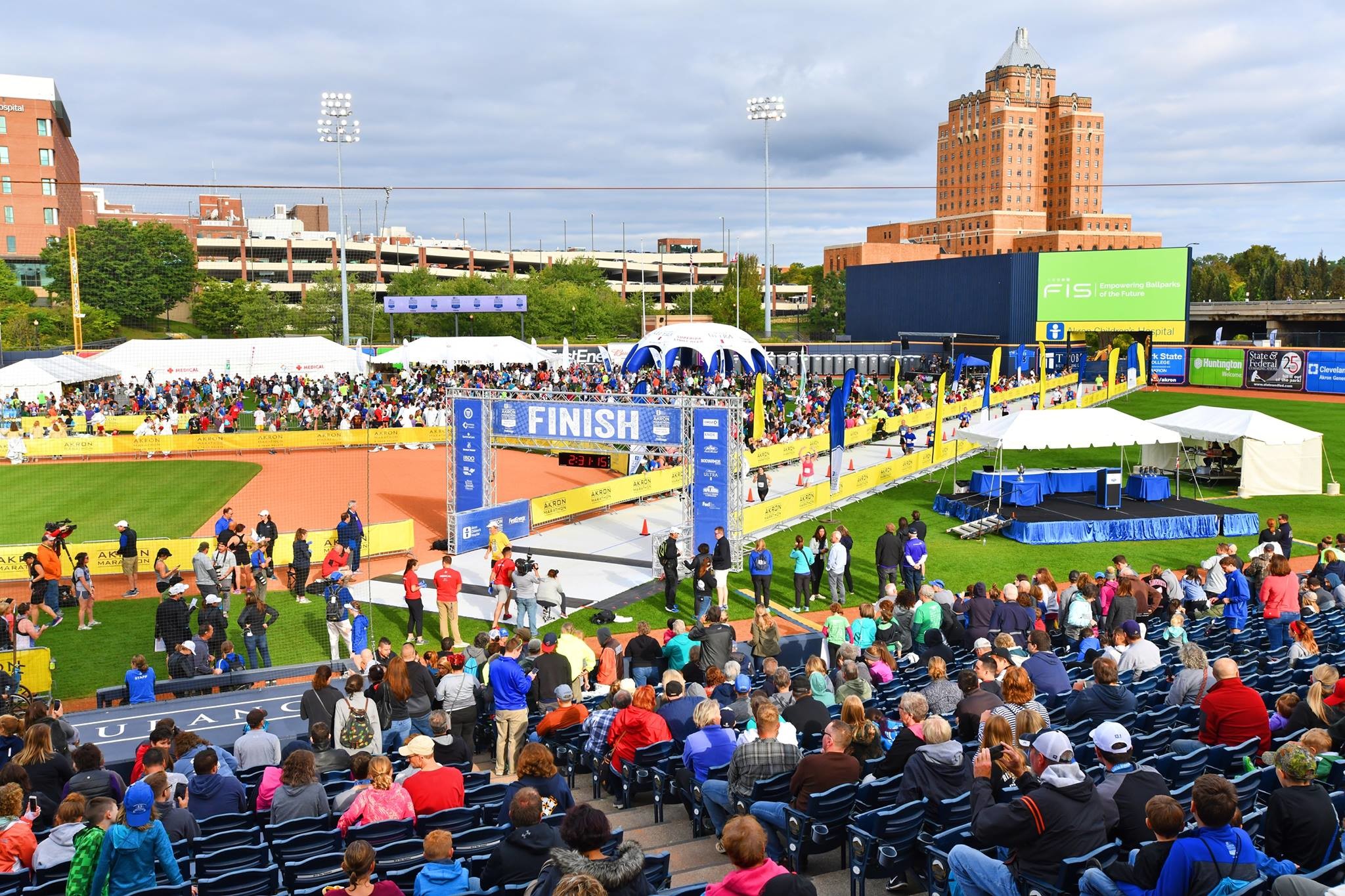
Plans for the Expo remain pending, race officials said.
After canceling the first two races last year, the Akron Marathon hosted a virtual race last September.
The city of Akron approved plans for this year's in-person race series at the end of February.
The city will continue to follow the guidance of Summit County Public Health regarding health and safety protocols necessary for race days with the understanding that these are subject to change based upon the restrictions and orders in lace at the time of the races," Mayor Daniel Horrigan wrote Feb. 24, adding the city will provide security and safety forces to support the event.
The Akron Marathon announced the approvals Tuesday on social media, inviting the community to start training for the signature event, scheduled for Sept. 25 at FirstEnergy Stadium.
(03/10/2021) ⚡AMPby Eric Marotta
Akron Marathon Race Series
The marquee event of the Akron Children’s Hospital Akron Marathon Race Series, the Akron Marathon, Half Marathon, & Team Relay presented by First Energy receives a fresh new look ! Runners will experience an unforgettable start inside the historic grounds of Stan Hywet Hall & Gardens before taking an exclusive foot tour of the City of Akron. The Goodyear Half...
more...Des Linden will be looking to break the 50K world record next month
Boston Marathon champ Des Linden is officially entering the world of ultramarathoning, as she has announced that she will attempt to break the 50K world record next month.
In mid-April at an undisclosed location (details are intentionally vague because of pandemic concerns), she will take a crack at U.K. runner Aly Dixon‘s record of 3:07:20, which she set in 2019.
In October, Linden invited runners to participate in a challenge she called Run Destober, in which each day, participants ran the number of kilometers (or miles) that corresponded to the date. For example, on October 1 participants ran one kilometer, and on October 31 they ran 31. In total, the challenge worked out to be either 496K or 496 miles.
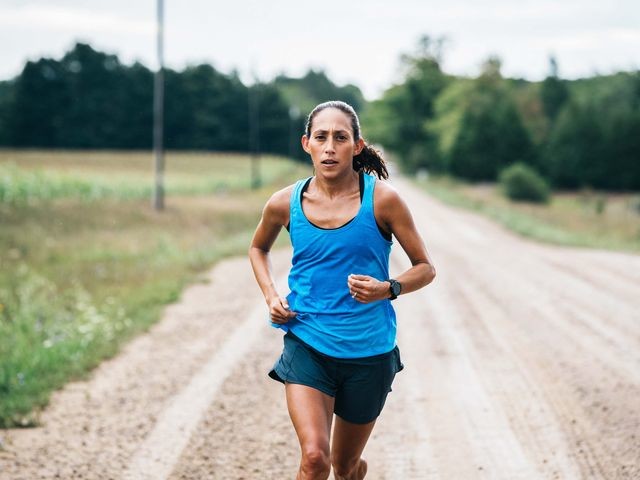
While this was a great way to engage the running community, it was also an effective way for Linden to slowly ramp up her weekly mileage and see how her body responded to the increased volume.
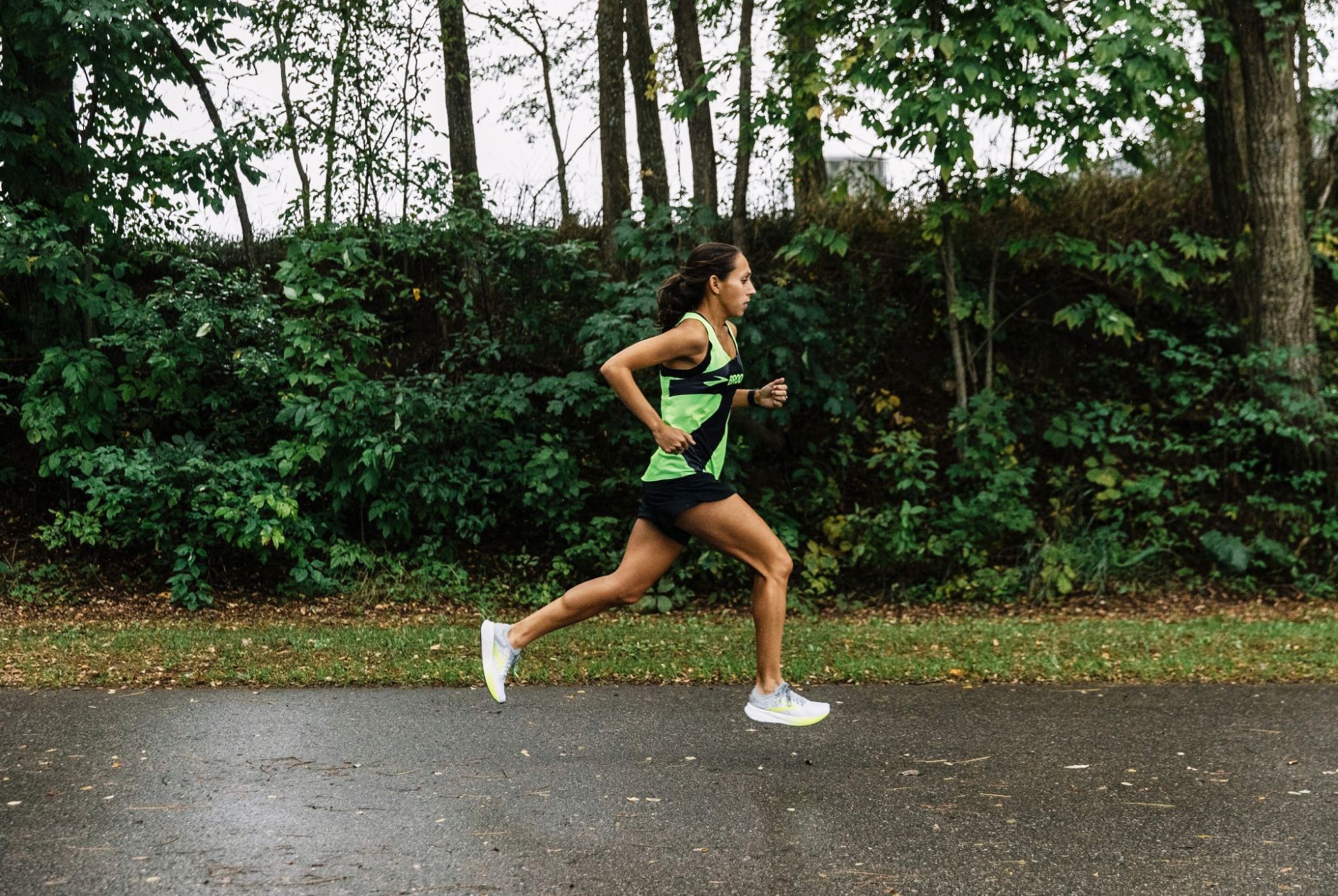
Back in August, Linden also expressed interest in ultramarathoning when she said in an interview that the Comrades Marathon and UTMB were on her bucket list. It is unclear whether this run will take place on the road or the trails, but either way, her result next month will be a good indicator of how she’ll fare when she finally decides to tackle the trails.
The headphone company Jaybird is supporting Linden during her record-breaking attempt, and the official announcement was made on their Instagram page on Tuesday. In order to beat Dixon’s time, Linden will need to maintain a pace of 3:44 per kilometer.
Given that she ran approximately 3:22 per kilometer for her marathon personal best of 2:22:38, this pace doesn’t seem unattainable, but of course, in a 50K race, it’s hard to say what could happen in the last 8K. We will be waiting for her result in April, and if she accomplishes her goal we expect to see Linden attempt more ultras in the future.
(03/10/2021) ⚡AMPby Brittany Hambleton
2021 Los Angeles Marathon date moves to the fall
For the first time in its 35-year history the Los Angeles Marathon Presented by Asics will take place in the fall and will use an updated course, organizers announced yesterday.
Since its inception in 1986, the race was held in March every year but two (May in 2009 and February in 2016), and this year it will be held on Sunday, November 7. That's the same day as the TCS New York City Marathon, the world's largest, which is traditionally held on the first Sunday in November.

In addition, organizers modified their "Stadium to Sea" course, which begins at Dodger Stadium and finishes at the Santa Monica Pier, with a new "Stadium to the Stars" route which retains the previous start location but will finish instead on the Avenue of the Stars in Century City.

"We've been thinking about the next evolution of the marathon for a few years," said Murphy Reinschreiber, the chief operating officer of The McCourt Foundation which owns and operates the race. He continued through a statement: "Finishing on Avenue of the Stars allows for a more vibrant and exciting finish experience than previously possible. We expect the closing miles and finish line to be the highlight of the must-do, world-class experience that is the Los Angeles Marathon."
Organizers had originally selected Sunday, May 23, for the 2021 edition of the race, but with the trajectory of the pandemic still uncertain the decision was made to move to the fall. Other large marathons traditionally held in the spring are planned for the fall of 2021, too, including Boston (Oct. 11), Hamburg (Sept. 12), London (Oct. 3), Rotterdam (Oct. 24), Tokyo (Oct. 17), and Taipei City (Nov. 21).
Unlike most large road races in the United States, the Los Angeles Marathon was held in the normal format in 2020 on Sunday, March 8. The race recorded 20,989 finishers and was the last truly large road race held in the United States before the pandemic took hold.
(03/09/2021) ⚡AMPLos Angeles Marathon
The LA Marathon is an annual running event held each spring in Los Angeles, Calif. The 26.219 mile (42.195 km) footrace, inspired by the success of the 1984 Summer Olympic Games, has been contested every year since 1986. While there are no qualifying standards to participate in the Skechers Performnce LA Marathon, runners wishing to receive an official time must...
more...Coyotes have been attacking runners in Vancouver
There have been 15 confirmed coyote attacks in Vancouver's Stanley Park since Dec. 1, 2020, and most of the victims have been runners.
Vancouver’s Stanley Park has been a popular spot for runners for years, but if you live in the area, you may want to log your kilometres elsewhere this spring. According to conservation officials, there have been 15 coyote attacks on people in the park since Dec. 1, 2020, and most have been on runners. Among them was Azi Ramezani, who was bitten by a coyote while running on the sidewalk by the Hollow Tree on Stanley Park Drive on Jan. 21.
Since the attacks began, officials have closed several of the trails in the park, but the park itself has remained open. Ramezani, who was attacked on a sunny day around 5 p.m., is now looking at a recovery period of about six months. In an interview with the news outlet The Province, she said she believes officials should have been discouraging people from going to the park completely — not just to stay away from specific trails.
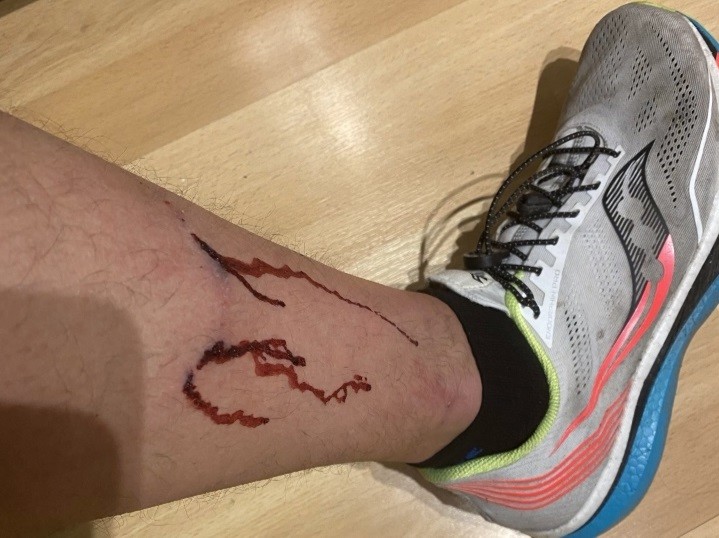
“You don’t expect an animal to attack you by a road with other people and traffic,” she said. The way the coyotes have been attacking people resembles the way the animals would ordinarily attack prey, officials say.
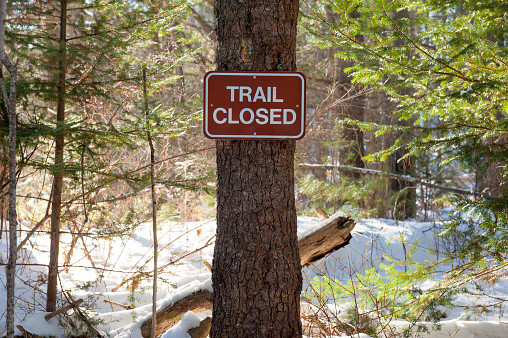
"What I can tell you, that type of attack — meaning a coyote coming out of nowhere, running fast toward a jogger and biting them on the leg — it is the same thing they would do to prey like a deer,” Sgt. Simon Gravel told the Vancouver Sun. “It’s the same mechanics involved. It makes me believe that it is somehow predatory and not defensive.”
No one knows exactly how many coyotes are in the 1,000-acre park, but estimates vary between six and 12. Two have already been euthanized for aggressive behaviour, but Gravel says he’s not sure what’s making them act this way.
It could be that they’re associating humans with a source of food because of people leaving food in the park, or from seeing humans feeding birds. Whatever the reason, these animals appear to have very little fear of humans.
Until officials are able to get the coyote situation under control, Vancouver runners should look for other places to run.
“If you choose to use the trails,” warns Gravel, “be aware you’re likely to encounter a coyote that can approach you.”
(03/09/2021) ⚡AMPby Brittany Hambleton
Japan's government has decided to stage Olympics without overseas spectators
Japan's government has decided to stage this summer's Tokyo Olympics and Paralympics without overseas spectators due to concern among the Japanese public about Covid-19, Kyodo news agency said on Tuesday.
Kyodo said the government had concluded that welcoming visitors from abroad to attend events would not be possible given public concern about the coronavirus and the detection of more contagious variants in many countries.
The opening ceremony will also be held without spectators.
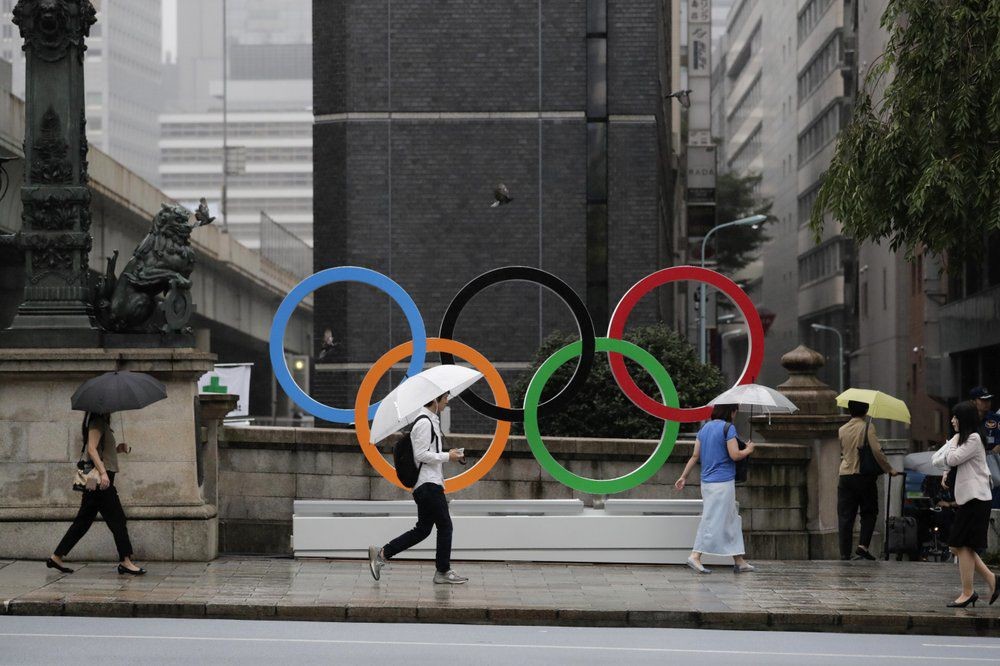
"The organising committee has decided it is essential to hold the ceremony in the northeastern prefecture of Fukushima behind closed doors, only permitting participants and invitees to take part in the event, to avoid large crowds forming amid the pandemic," Kyodo said, quoting the officials.
A formal decision on overseas spectators is expected to be made by the end of the month. The Olympics are set for July 23 to August 8, with the Paralympics to follow from August 24 to September 5.
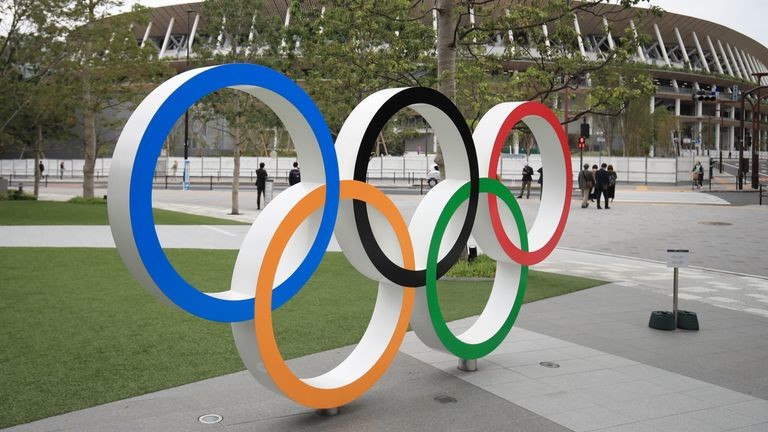
Tokyo 2020 president Seiko Hashimoto said last week she would like to have made a decision before March 25, when the torch relay is due to start.
A decision on the number of Japanese spectators allowed in venues is expected to be made by the end of April.
Most Japanese people do not want international visitors to attend the Games amid fears that a large influx of visitors could spark a resurgence of infections, a Yomiuri newspaper poll showed.
The survey showed 77 per cent of respondents were against allowing foreign fans to attend, versus 18 per cent in favour.
Sky Sports News has contacted both Tokyo 2020 organisers and the International Olympic Committee for a response to Kyodo's report and if a decision may be made earlier than previously stated.
(03/09/2021) ⚡AMPTokyo 2020 Olympic Games
Fifty-six years after having organized the Olympic Games, the Japanese capital will be hosting a Summer edition for the second time, originally scheduled from July 24 to August 9, 2020, the games were postponed due to coronavirus outbreak, the postponed Tokyo Olympics will be held from July 23 to August 8 in 2021, according to the International Olympic Committee decision. ...
more...Bend Marathon has been cancelled for the second consecutive year
Of all the sporting events that have been canceled over the past year in Central Oregon, perhaps none has endured worse luck than the Bend Marathon.
The event — which was scheduled for April 18 and includes a marathon, half marathon, 10-kilometer, and 5K race on roads and paved trails throughout Bend — has been canceled for the second consecutive year due to the COVID-19 pandemic.
One of the first major events to be canceled in 2020 at the onset of the pandemic, the sixth edition of the in-person Bend Marathon will now be pushed back to 2022.
At last week’s Bend City Council meeting, councilors were unable to come to an agreement on issuing the Bend Marathon a special event permit.
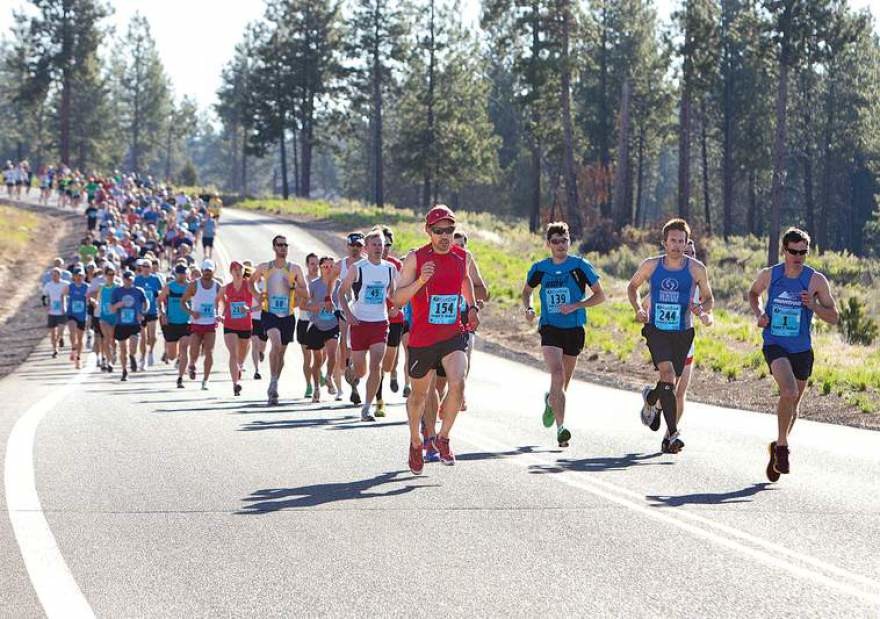
Of all the sporting events that have been cancelled over the past year in Central Oregon, perhaps none has endured worse luck than the Bend Marathon.
The event — which was scheduled for April 18 and includes a marathon, half marathon, 10-kilometer, and 5K race on roads and paved trails throughout Bend — has been canceled for the second consecutive year due to the COVID-19 pandemic.
One of the first major events to be canceled in 2020 at the onset of the pandemic, the sixth edition of the in-person Bend Marathon will now be pushed back to 2022.
At last week’s Bend City Council meeting, councilors were unable to come to an agreement on issuing the Bend Marathon a special event permit.
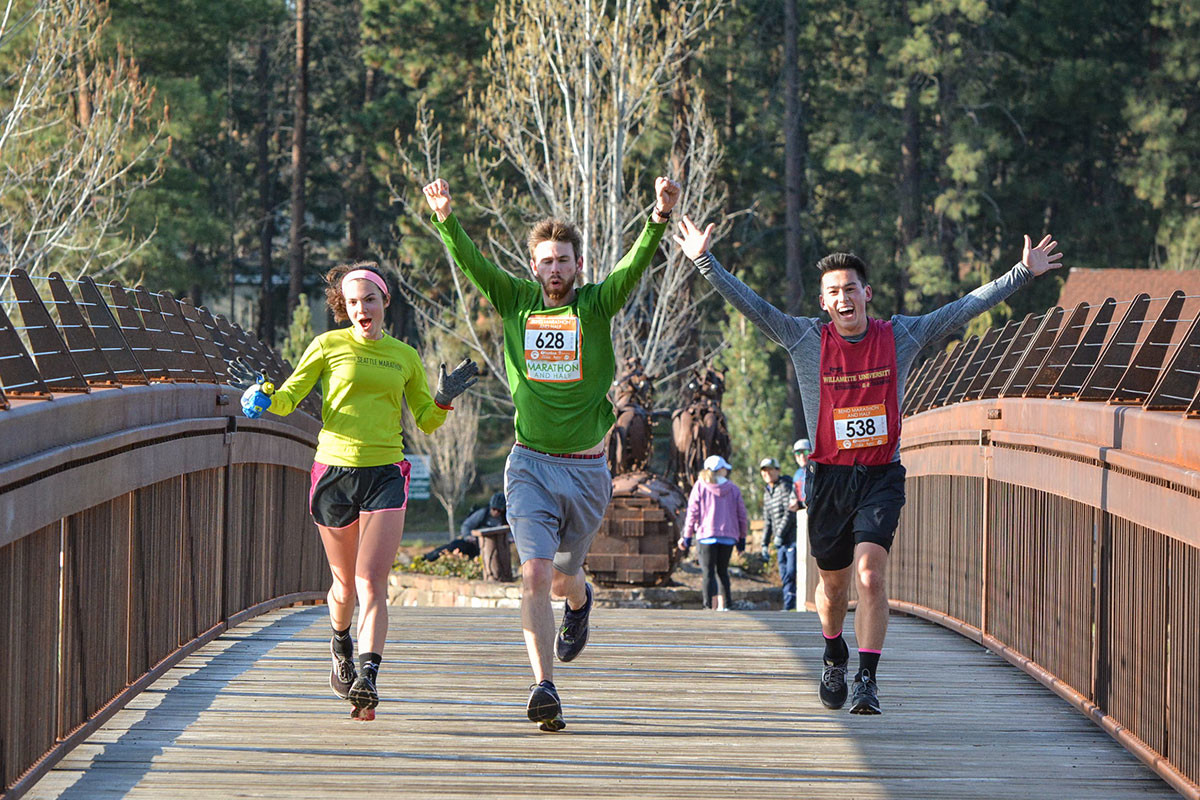
Marathon organizers Max King and Kari Strang had submitted a proposal that featured several safety protocols, including wave starts of no more than 75 runners, which would adhere to state and county guidelines for outdoor gatherings.
“They didn’t want to risk it,” a disappointed King said. “The spirit of the guidelines are that you don’t get that many people together, and we weren’t getting that many people together.”
King said he was expecting a total of about 900 runners across the four races. About 600 had registered before the event was canceled. In 2019 more than 2,400 runners and walkers participated in the Bend Marathon’s events.
The Bend Marathon course was to feature Bend parks, neighborhoods and the new paved trail through the Deschutes National Forest (paralleling the Cascade Lakes Highway).
King called it bad timing for the popular event.
“We obviously don’t want to spread the disease, and that is what people are risk adverse to,” King said. “When we look at other things that are already happening in the community, such as Mt. Bachelor, restaurants and retail being open, and the lack of spread in outdoor events and the risk being really, really low, I don’t agree with where they’re coming from.”
King and Strang were also planning to decrease aid stations, require masks at the start and finish, and not allow spectators.
The 2021 Bend Marathon will still offer a virtual option, as it did last year. Participants can run their distance wherever and however they want from April 12 to May 25, and then upload their finishing time to bend-marathon.com.
“We want to hype it up and make it fun for people,” King said. “We don’t want it to be just an afterthought. We’ll do some fun events around the race time and some fun videos about training.”
And for now, the plan is certainly for an in-person Bend Marathon in 2022.
(03/09/2021) ⚡AMPby Mark Morical
Bend Marathon and Half
Welcome to the Bend Marathon, Half, 10k and 5k. We're excited that you're considering running with us. You'll cruise around neighborhood parks, through Ponderosa Pine forests, along the mighty Deschutes River and finish in a beautiful iconic Bend location to a hoppin' afterparty where the kombucha and craft beer are flowing, food carts are waiting, and you can relax because...
more...2021 Cleveland Marathon has been postponed due to pandemic
For the second straight May, the Cleveland Marathon won't be taking place in-person, with the event announcing on Monday that it has decided to postpone until the fall due to COVID-19.
This year's Marathon, which is sponsored by Union Home Mortgage, was previously scheduled to take place on the weekend of May 15-16. A new date for the marathon and its corresponding events will be selected after the 2021 NFL schedule is released so that it doesn't conflict with one of the Cleveland Browns' home games.
“While we are disappointed that we must postpone race weekend, we are doing everything we can to hold an in-person event because our runners deserve it and we appreciate their patience,” Jack Staph, executive director of the Union Home Mortgage Cleveland Marathon, said in a release.
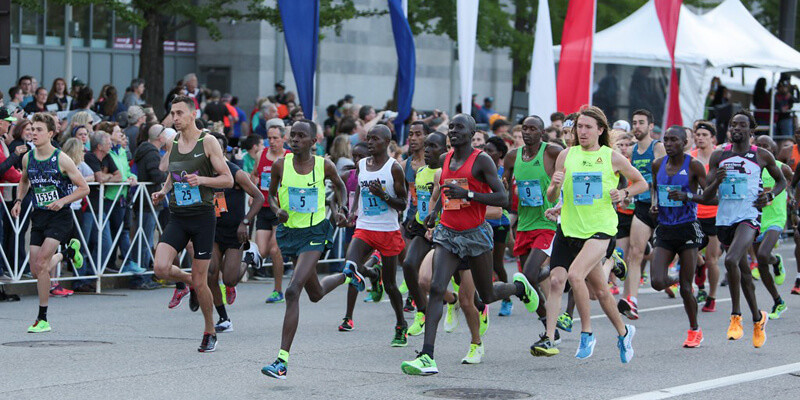
“Our team is dedicated to hosting a safe, high-quality race as we have done for decades, as well as virtual options, and we look forward to gathering together again in the fall. We are confident in our health and safety plan that has been developed with local and state health officials and University Hospitals.”
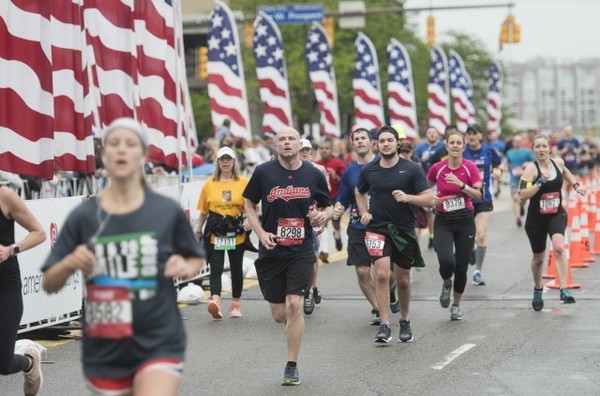
The Cleveland Marathon is also now offering the following options for runners who deferred their registration from the 2020 event to 2021:
Participate in one of the 2021 virtual events in May or the fall of 2021
Participate in the 2021 in-person race in the fall
Defer to the 2022 race (scheduled for May 21 & 22)
Additionally, those who registered for the 2021 race have been given the following options:
Participate in one of the 2021 virtual events
Participate in the 2021 in-person race.
(03/08/2021) ⚡AMPby Ben Axelrod
Cleveland Marathon
The Cleveland Marathon features a relatively flat and fast course, great volunteer support and a scenic view of downtown Cleveland and its major landmarks. The course has been designed for our athletes to enjoy views of Browns Stadium, the Rock and Roll Hall of Fame, Lake Erie and many other Cleveland highlights. The Cleveland Marathon began in 1978 in an...
more...More than 75 percent of Japanese oppose overseas fans attending the Tokyo Olympics, organizers prepare to make a decision on foreign spectators
Most Japanese don't want foreign fans at Olympics.
The poll, by the Yomiuri Shimbun daily, found that only 18 percent of people who responded were in favour of foreign spectators being allowed into Japan for the coronavirus-delayed Games, with 77 percent against.
Games organisers said last week that they plan to rule on the matter this month, likely before the nationwide torch relay begins on March 25.
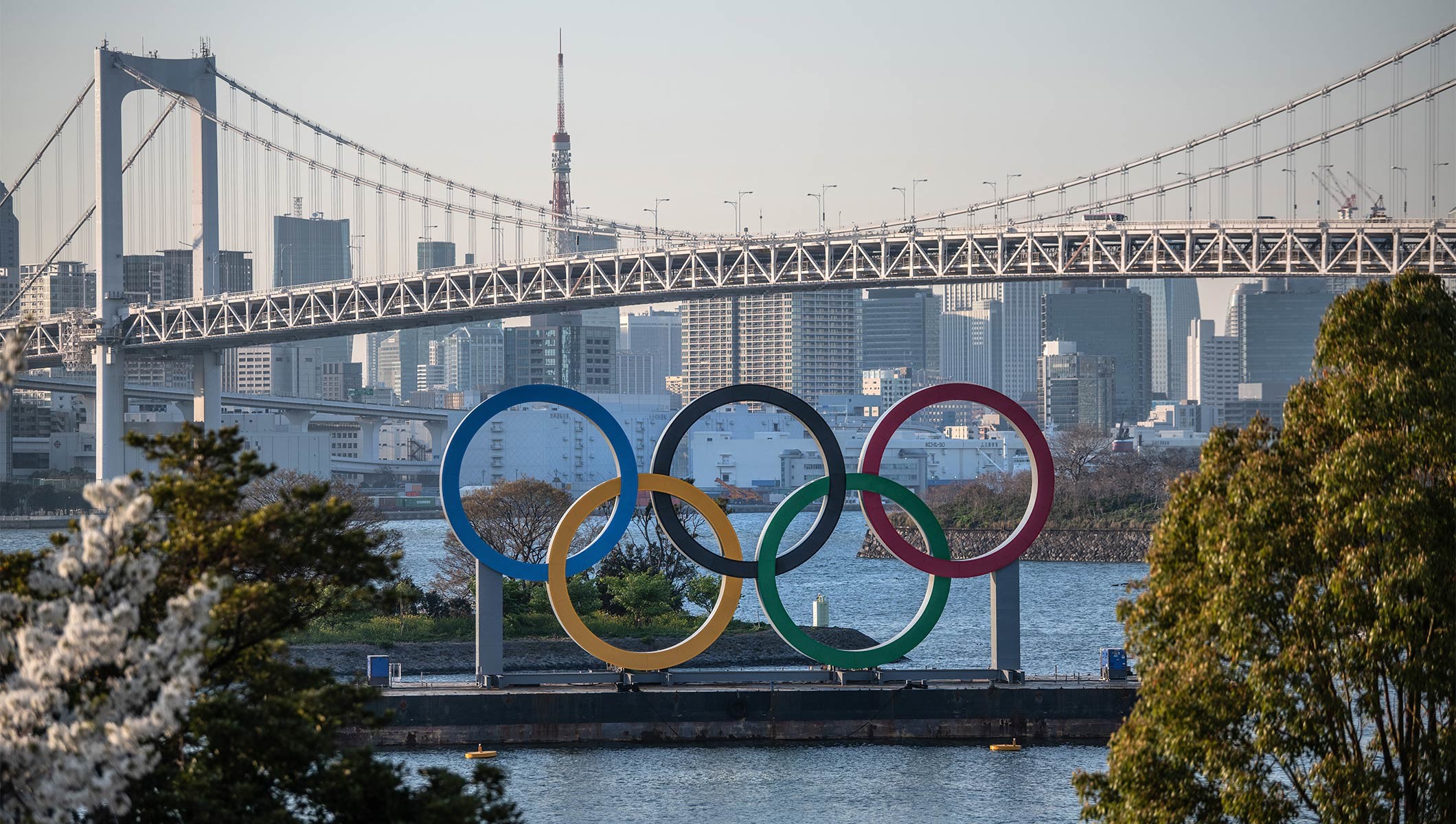
But Japanese media say Games chiefs have already decided to bar foreign fans.
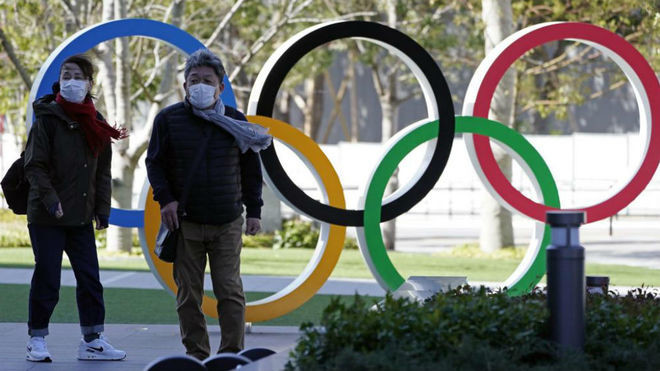
Tokyo 2020 president Seiko Hashimoto said Friday that organisers "really want to hold the event in full stadiums with fans from around the world", but would find it difficult "if we're not in a position where we can accept them and the situation with medical facilities isn't perfect".
The Yomiuri poll also revealed that 45 percent of respondents were in favour of spectators in general attending the Games, with 48 percent opposed.
Organisers have said they plan to make a decision on overall attendance limits in April.
The poll was conducted between March 5-7 through random phone calls, with 1,066 of the 1,977 people contacted responding.
(03/08/2021) ⚡AMPTokyo 2020 Olympic Games
Fifty-six years after having organized the Olympic Games, the Japanese capital will be hosting a Summer edition for the second time, originally scheduled from July 24 to August 9, 2020, the games were postponed due to coronavirus outbreak, the postponed Tokyo Olympics will be held from July 23 to August 8 in 2021, according to the International Olympic Committee decision. ...
more...Louisiana Marathon winner Alex Hebert surprises himself after foot injury
Neither a two-month delay to the Louisiana Marathon nor a foot injury could stop Alex Hebert of Thibodaux from winning the 10th Louisiana Marathon men's race Sunday in downtown Baton Rouge.
Hebert, 28, ran a time of 2:27:16 to cross the finish line first.
“I went into it differently than I normally do,” he said. “I came off a pretty serious foot injury about a month and a half ago and I called it quits. I was not going to do it (marathon). About a week ago, I thought I will roll with it.”
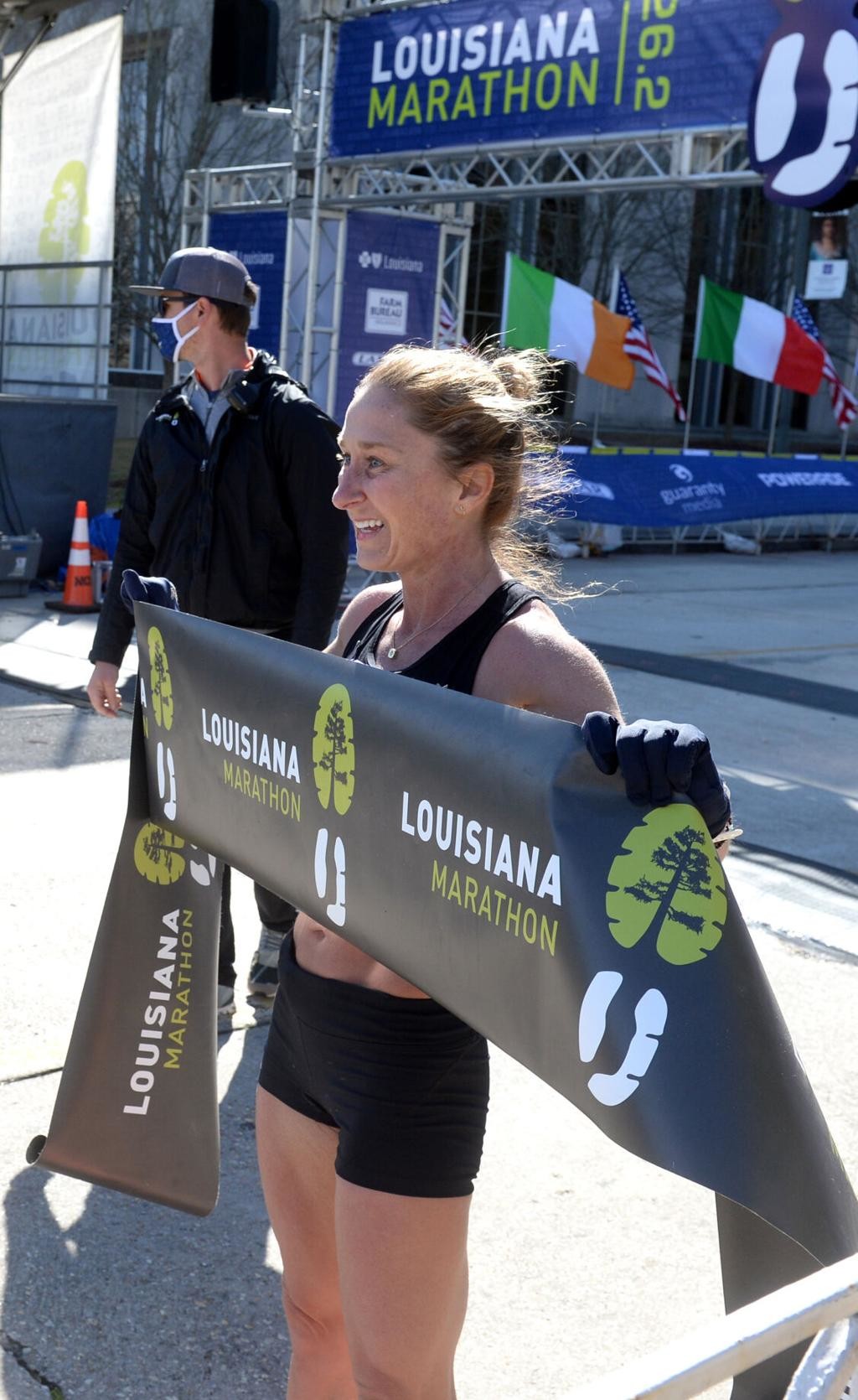
Lydia McRae of Jacksonville, Florida, set the pace for the women with a time of 2:47:34.
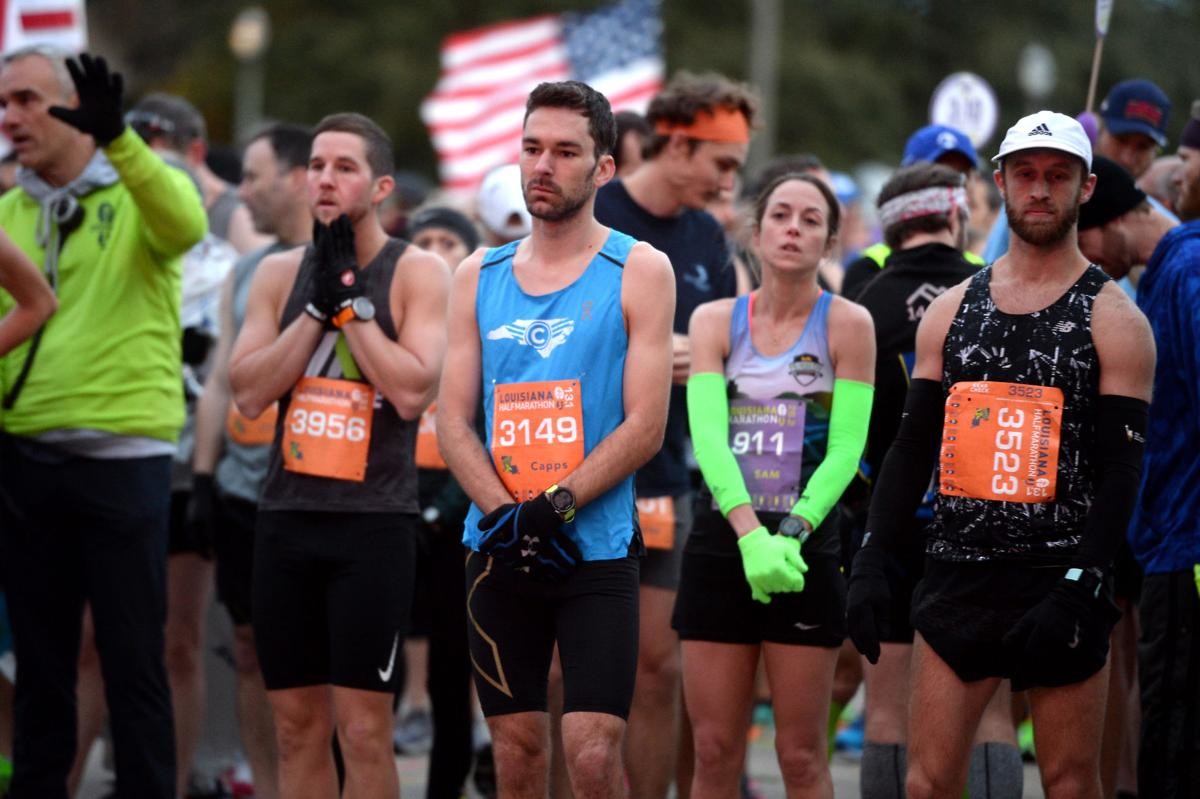
Jarrett Leblanc of Jennings set a Louisiana Marathon record in the half-marathon with a time of 1:05:04.
“I had my eye on this race for a little while,” he said. “I normally run the Houston Half Marathon, but I was glad I was able to stay here at home and run. I actually wanted to go a little faster today, but I did not have it. I am glad to have my name on paper for the record.”
Leblanc, 30, is a doctor and has spent the last year helping fight COVID-19 in southwest Louisiana.
“I took about six months off of running,” he said. “I worked full time and overtime in the hospitals in Jennings and Lafayette during the pandemic. Working 55-60 hours a week, it is tough to train.”
The women’s half-marathon was won by Kristin Wenstrom of Covington with a time of 1:25:16.
“I felt really good today; the weather was perfect,” she said. “I was smiling through the whole thing. I had a lot of fun today.”
The event, which usually takes place in January but was postponed because of coronavirus concerns, finished smoothly after precautions were set up to reduce the spread of COVID-19.
(03/08/2021) ⚡AMPby Jarret Major
Louisiana Marathon
Welcome to the Louisiana Marathon Running Festival. Rendezvous with runners from 50 states and over 30 countries who share a passion for Louisiana as they race our fast, flat and festive courses. Stick around for the best Finish Fest on the bayou and enjoy tastes of gumbo, jambalaya, étouffée, duck confit and couch du lait (to name a few dishes...
more...2021 Edinburgh Marathon goes virtual due to the coronavirus
Organizers for this year's Edinburgh Marathon have said recent announcements on coronavirus are a "welcome beam of light and hope".
After they were forced to cancel the Edinburgh Marathon last year amid the first coronavirus lockdown, organizers are hopeful the 2021 competition will be able to go ahead virtually this year.
Whilst organized sport may be allowed to go ahead by Spring, they have taken a cautious approach - believing it's the fairest way for all involved.
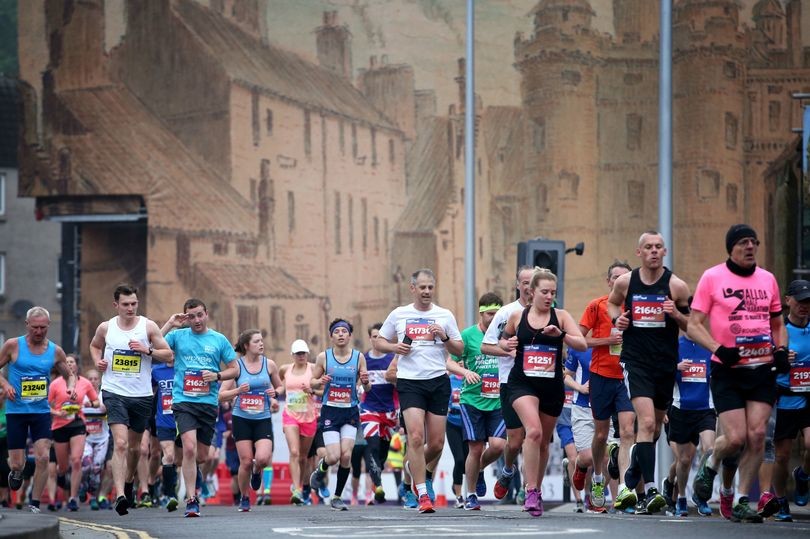
In an email to attendees, organizers said: "We believe that to ask you to wait weeks for that decision would be unfair, given the volume of training required, as well as any travel and accommodation arrangements that would need to be made.
"As event organisers, we have committed throughout the pandemic to make timely decisions and communicate as transparently as we can with all those involved with the event.
"This is why we are communicating the decision today that the 2021 Edinburgh Marathon Festival, which takes place on Saturday 29th and Sunday 30th May, will be delivered as a virtual event."
The 2021 Edinburgh Marathon Festival Virtual Challenge
Because of this, they announced the competition on May 29 and 30 will instead be a virtual festival, with people taking part in the competition by planning their own route.
This will be the case for the full marathon, the half marathon, the 10k and the other races.
(03/08/2021) ⚡AMPby Alasdair Clark
EDINBURGH MARATHON
The Edinburgh Marathon is an annual marathon event, run in Scotland over the traditional distance of 42.195kilometers (26.219 mi). The first marathon event in Edinburgh was in 1982 and since 2003 the Edinburgh Marathon Festival has been held each year, usually in May. The current route begins in the city center, then moves out of Edinburgh into East Lothian, finishing...
more...TikTok Made the 12-3-30 Workout Famous, and It Can Help Runners With Stamina and Endurance
We tapped the creator and two trainers to break it down and outline its potential benefits.
The 12-3-30 workout has been popping up all over fitness TikTok. The workout, originally created by Lauren Giraldo, actually showed up on her YouTube channel back in 2019 when she was looking for a simple and approachable way to get fit. 

“I was out of shape and didn’t have a great relationship with fitness at the time,” Giraldo told Runner’s World. “I found a lot of the fitness advice and workouts online were extremely overwhelming and impossible to stick with long term.”


So she decided to come up with her own workout. At the gym, Giraldo found weights intimidating and gravitated toward the treadmill instead. And through trial and error, the 12-3-30 workout was born. It has since made its way through TikTok and is taking the treadmill trends world by storm.
But is this workout legit and can it benefit you as a runner? We asked Jess Mena D.P.T., certified strength and conditioning specialist, and Brianna Bernard, Isopure athlete and certified personal trainer to help us break it down.
What is the 12-3-30 workout?
The 12-3-30 workout is pretty straightforward: You set a treadmill to a 12-percent incline and 3.0 speed and walk for 30 minutes.
“I found 12 incline, 3 speed, for 30 minutes on a treadmill was easy enough for me to do frequently but still challenging enough for me to feel accomplished after,” Giraldo said. “It was what got me in the gym every day and set the foundation for my fitness and health journey.”
Setting the tread to a 12-percent incline forces your body to work a lot harder in order to push your own body weight up an incline, says Mena. The 3.0 speed is an average walking speed and attainable for most folks so this makes it a very beginner-friendly option.
Giraldo, who said she has never been a runner, loves the 12-3-30 workout because it’s a way for her to use a treadmill and feel like she’s getting more out of it than just walking. 

Who should do the 12-3-30 workout?
If you are looking to start exercising, this is a great workout for beginners. You can even start at a lower incline or slower speed. Since walking on an incline builds strength in your glutes and hamstrings, it can serve as a stepping stone for strength training.
But anyone who wants to get in a solid cardio workout—experienced and novice runners alike—can do this workout, says Bernard. For runners who dread the tread—the incline produces an increased heart rate, as well as greater posterior chain activation (think: glutes, quads, and hamstrings) as opposed to walking on a flat road, says Bernard. For experienced runners, this workout is a great option for a recovery or cross-training day.
What are the benefits of the workout?
Giraldo still uses the 12-3-30 for cardio, and says over time, it gave her the confidence to try new things in the gym, so it can be helpful for building both cardiovascular strength and confidence. Now, she incorporates weights after cardio some days.
Walking on an incline on a treadmill means you don’t have to drive somewhere to find hills, and if you have a tread in your home, it’s a great way to get a workout in without going to the gym (an especially great option during the COVID-19 pandemic).
Mena says the workout can be used as a way to increase stamina and endurance for long-distance runners. “It’s a nice way to force other muscles to work a little harder and in a different way,” Mena says.
If you typically run on a flat road, this workout can be a great way to prepare for the hills you might find on a race course. The incline helps build endurance that will help you get through those final, sometimes grueling miles in a race or intense workout, says Bernard.
Plus, it’s great for those who work a desk job. When you’re short on time, Bernard also suggests breaking the workout into three 10-minute walks. Studies have shown that training for 30 minutes at the end of an eight-hour workday isn’t enough to counteract all of the sitting we do. “Therefore, we need to increase our movement throughout the day and the 12-3-30 is an easy fix for that,” Bernard says.
How often should you do the workout?
Giraldo tries to do the workout every day. 

“It’s become less of a workout and more of a lifestyle,” Giraldo says. I use it as my ‘me time.’ I put on a YouTube video or my favorite Netflix show and tune out the world. Even after three years, I still feel just as accomplished when I do it now than when I started.”
For a novice, it’s best to ease into it by doing the workout just two times a week. Each week, add one day until you reach five-plus days, checking in with your body to see how it’s adjusting to the workout to avoid injury, says Mena.
Over time, your body will adapt to this workout, so if you want to see change—increase your cardio, build strength, or even lose weight—you’ll eventually have to add a new stimulus like weight training or running to affect greater change.
(03/07/2021) ⚡AMPby Runner’s World
A Year After Ahmaud Arbery’s Death, Thousands of Miles Are Run in His Name
The #FinishTheRun event raised more than $226,000 for the 2:23 Foundation.
“A Black man should be able to go for a jog without fearing for his life,” President Joe Biden tweeted on Tuesday, February 23.
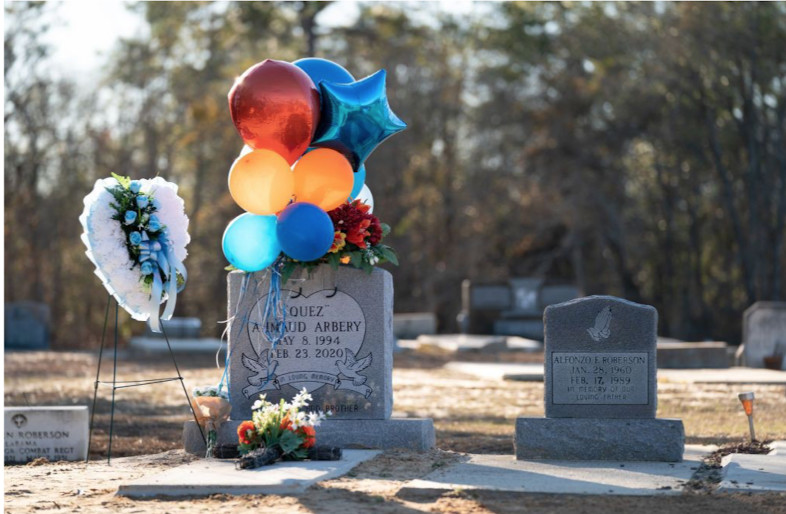
On that day, one year before, 25-year-old Ahmaud Arbery was shot and killed while out running in Brunswick, Georgia. Three men await trial for his murder. But last year it took more than two months for his murder to become national news—a fact that remains disturbing.
That’s just one reason why those who seek justice for Arbery are staying active, using their miles to continue to draw attention to his name and to the greater issue of racism and gun control in America.
Thousands of runners across the United States and the world, took part in #FinishTheRun, a week-long challenge asking runners to run 2.23 miles in Arbery’s name. Runners were finishing the run that Arbery could not.
The run was hosted by the 2:23 Foundation—a nonprofit created by Jason Vaughn, Arbery’s high school football coach, and Demetris Frazier, Arbery’s cousin, committed to fighting systemic injustices. Proceeds of the challenge went toward a 2:23 Foundation scholarship fund that helps to provide young men and women the opportunity to become future lawyers, local leaders, policymakers, social engineers, and other social justice-based career paths.

The foundation had a goal to raise $223,000 by the end of the year, but it has already surpassed that goal, raising $226,000 after just the first day of the #FinishTheRun event. That total was significantly boosted by a donation of $22,300 from Saucony.
“Every dollar from this virtual run is going toward scholarships for black and brown people in our community,” the 2:23 Foundation relayed in a statement. The foundation’s credibility came under question, because the organization is not endorsed by Arbery’s mother. “It will be a managed, transparent fund that will include Mr. Arbery as a key decision maker on who receives the disbursements of those funds.”
Here are just some of the runners and groups that have run 2.23 miles in Arbery’s memory:
Running to Protest
The Running to Protest group was founded by filmmaker Coffey in the wake of the Black Lives Matter protests in the summer of 2020. The group joined forces with Everytown Athlete Council member and Olympian Race Imboden to host a 2.23-mile event; athletes ran while wearing masks through New York’s West Village, to honor Arbery and raise awareness for gun prevention.
“If you are Black, like Mr. Arbery, you are ten times more likely to be shot while you are running in the street,” Imboden told the crowd of about 100 runners. “Black Americans are disproportionally impacted by gun violence. They experience nearly 10 times the homicide rates, 15 times the gun assaults and three times the fatal police shootings of white Americans.”
Stay Home Stay Motivated
Stay Home Stay Motivated was created in March 2020 as a way to connect homes together in pursuit of wellness in all forms. New York-based Jenny Beaudry Westin, who created the group, did her miles on her Peloton, but encouraged the rest of the group to take part in their own way, virtually.
“We ran, walked, and rode last year as a community in Ahmaud's memory and as our community has grown, there was an even bigger opportunity this year to honor his memory, keep the conversation going, and honor the importance of wellness across the Black community,” Westin said.
Antiracist Run Club
The Bay area-based group, formerly known as SF Runners for Equality, uses running as a common denominator to enact change for today’s racial injustices.
“Ahmaud Arbery was murdered while out on a routine run, a hobby everyone in this group is passionate about,” Shelby Rhodes said. “We often compare the idea of long distance running to the work on Anti-Racism, and we'll keep fighting as a group.”
The group’s Ayako Sawanobori organized for 27 members to run virtually.
Black Runners of the GTA
“I am a solo runner and run alone in Toronto, Canada, so safety is on my mind a lot,” said Melanie Murzeau, who founded the group to bring Black runners of the Greater Toronto Area into the larger running community.
“The death of Admaud Abery was the driving force in me creating a virtual space to normalize and humanize diverse running and to fight against stereotypes and to have people address their own bias so other BIPOC solo runners feel included.”
Members ran virtually, with Murzeau encouraging them to stay informed: “I believe knowing the laws and policies is one way a BIPOC individual can advocate for themselves.”
Latinas Running
Through Latinas Running, Kim Rodriguez aims promote diversity and body positivity in running. Living in Georgia, like the late Arbery did, she encouraged her followers to run in his memory too.
“These deaths are not justifiable, but neither is our silence. It's on us to confront and dismantle systemic racism in America,” she posted. Rodriguez urges her followers to speak up, be an ally, donate and join virtual efforts possible. “Every little step matters.”
(03/07/2021) ⚡AMPby Runner’s World
RunTV.org is the new Netflix for running videos
The new website will allow you to find your favourite running videos with just a few clicks
Over the last year, runners everywhere have been looking for ways to keep themselves busy while we’re stuck in lockdown and we have no races to train for or groups to run with. Some runners have taken to creating Strava or GPS art, others have been tackling FKTs and some have dedicated themselves to running every street in their town or city. Mike Padilla decided to spend his time creating ‘the Netflix for running videos’, runtv.org.
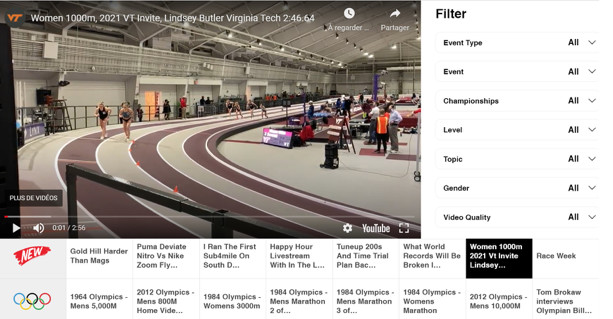
Thanks to COVID-19 lockdowns and a lot of snow where Padilla lives in Pennsylvania, he has spent more time than usual this winter running on his treadmill. He relies heavily on Youtube videos to get him through those treadmill miles, and of course what else would a runner watch while they’re running but running videos? The only problem is finding the right videos to watch.
“YouTube is great if you know what you’re specifically looking for, but it’s not particularly suited for discovery,” explains Padill
“If the race is on YouTube and it’s allowed to be shared, we have it. We have the oldies and the latest — Olympics, NCAAs, Worlds Champs, road races, marathons, etc.,” says Padilla. “The listings automatically update every hour with an algorithm that scans YouTube.”
Padilla explains that there is great running content out there, but there is no central organization for how it’s distributed. Most videos are shared by individual organizations, but he believes runTV.org proves that “when there is some effort applied to orchestrate the independent activities of many, the whole is greater than the sum of its parts.” He hopes that with the creation of this website, people will find information and inspiration that captures what we all love about running.
“There’s great running content out there – you just had to find it. I’ve removed that barrier,” he says. “I just wanted to give back to the running community, so this is my token contribution.”
As the website continues to grow, Padilla says he’s always looking for those hidden gem videos, so if you have a running video that you love that isn’t available on the site, you can send the link to videos@runtv.org
(03/07/2021) ⚡AMPby Running Magazine
Holly Archer wins European 1500m silver after being reinstated on appeal
British athletes added three more medals at the European Indoor Championships in Poland on Saturday evening.
The most dramatic came in the women’s 1500 metres, where Holly Archer celebrated winning silver only to be disqualified and then reinstated on appeal by the British team.
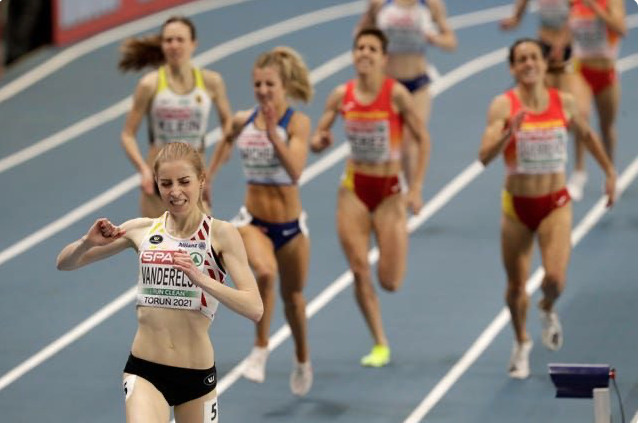
There was pushing and shoving throughout a scrappy race but Cambridge athlete Archer was singled out alongside Spain’s Agueda Munoz, who was also penalised.
A counter appeal was eventually rejected, and Archer said: “That was the longest wait ever. It was supposed to be half an hour but it turned into three hours. I feel absolutely delighted. To come so close and then get it taken away, I’ve been on a roller coaster, but I’m really happy to finally get that silver.”
British team captain Jodie Williams and pole vaulter Holly Bradshaw both collected bronze medals.
Williams has made the move up from the shorter sprints to 400m and was rewarded with her first individual medal at a major event since 2014 behind exciting young Dutch winner Femke Bol.
Williams, 27, ran a personal best of 51.73 seconds, and said afterwards: “It’s crazy. I came here to do a job and it’s job done. Last time I came to European Indoors I got fourth so I had to upgrade that.
I’m really happy. I got a bit boxed in, so I got a bit worried for a second. I knew I could do it. I just dug in and I’m really glad.”
Bradshaw had targeted gold but failed with her three attempts at 4.70m and had to settle for joint third alongside Belarusian Iryna Zhuk behind Swiss winner Angelica Moser and Tina Sutej of Slovenia.
The 29-year-old said: “You can’t sniff at a European Indoor medal, but I’m incredibly disappointed. I felt great. The other girls handled their jumps really well and I just didn’t quite jump as well today.
“It’s been one of my best indoor campaigns ever. Of course it’s disappointing to finish like that but, on the whole, I’ve made some really good progress and stepped it up a notch and I feel like a completely different athlete.”
Britain’s first medals of the event came on Friday in the women’s 3,000m with gold for Amy-Eloise Markovc and bronze for Verity Ockenden.
There is a strong possibility of more female success in the final of the 800m after the young trio of Keely Hodgkinson, Isabelle Boffey and Ellie Baker all qualified for the final.
Baker said: “I’m so happy. It just shows how dominant our GB middle distance girls are. I’m so proud of them as well as myself. I can’t wait for us to put on a show for everyone tomorrow.”
Jamie Webb won his semi-final in the men’s event to secure his progress but team-mate Guy Learmonth missed out.
Andrew Robertson was disappointed to miss out on a medal in the men’s 60m final, finishing fourth in a slower time than he ran in both the heats and semi-finals. Italy’s Lamont Marcell Jacobs was a clear winner in a world-leading 6.47secs.
Robertson said: “It’s very disappointing. I’m getting to the stage where I should be running low 6.50s consistently. Jacobs running 6.47s is a fantastic time, but I should be at least challenging him with the way I’ve been running. It wasn’t a good performance tonight.”
Scotsman Andy Butchart looked impressive in qualifying for the final of the 3,000m, winning his heat in the fastest time, while Jack Rowe also made it through.
Andrew Pozzi carries strong British hopes of a medal as the reigning world indoor champion in the 60m hurdles and is looking to regain the title he won in 2017.
He stormed through the first of five heats in 7.52s, the joint-fastest time of the morning, and said afterwards: “It was a really good time. I had a great reaction from the blocks, which I’ve been missing from the indoor season, so that was really encouraging.”
In the women’s event, there were good runs from sisters Cindy Sember and Tiffany Porter, who safely qualified for the semi-finals. Sember’s time of 7.99s was her fastest since 2017 while Porter clocked 8.04s.
(03/07/2021) ⚡AMPEuropean Athletics Indoor Championships
Witness six sessions of action-packed sport over three days of intense competition as some of the best athletes in the world compete for prestigious European titles. Don’t miss the opportunity to witness this thrilling event and get closer to the action. ...
more...Louisiana Marathon still running this weekend with safety protocols
Like most things this past COVID-riddled year, the Louisiana Marathon will look a lot different when it kicks off this weekend.
Luckily for runners, the race is still on, with events beginning Saturday morning leading into Sunday’s full marathon. But unlike years past, there won’t be streets lined with supporters or spectators handing out waters at the aid stations.
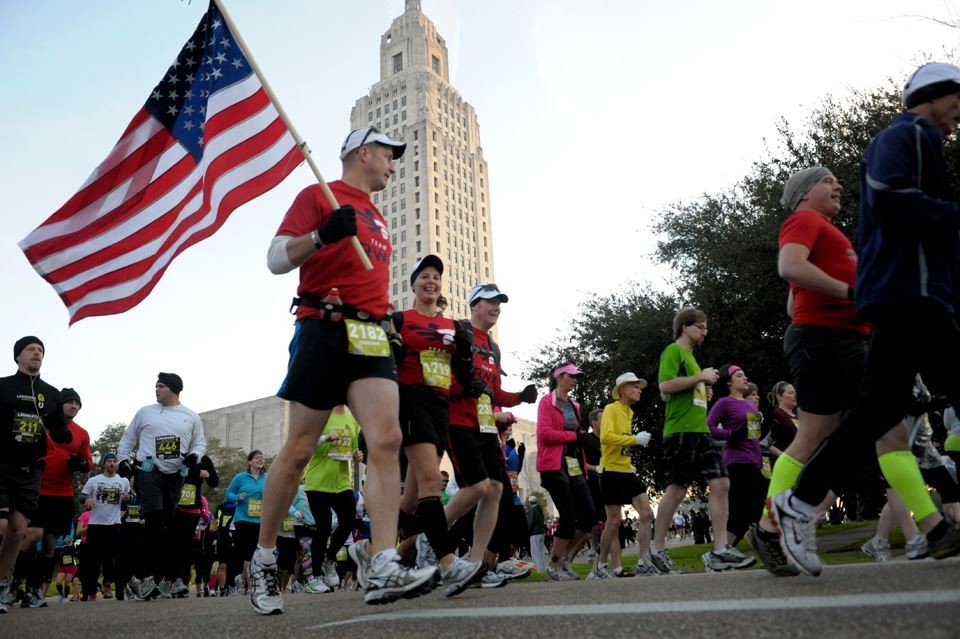
Safety protocols have given the 2021 edition a much different look. Runners will be grouped into separate “start corrals,” where cones will be placed 6 feet apart to encourage participants to maintain social distancing. The first corral of runners starts at 8 a.m. for Saturday’s quarter marathon and 5K, and 7 a.m. for the full and half marathons, with the following groups moving to the starting line in order.
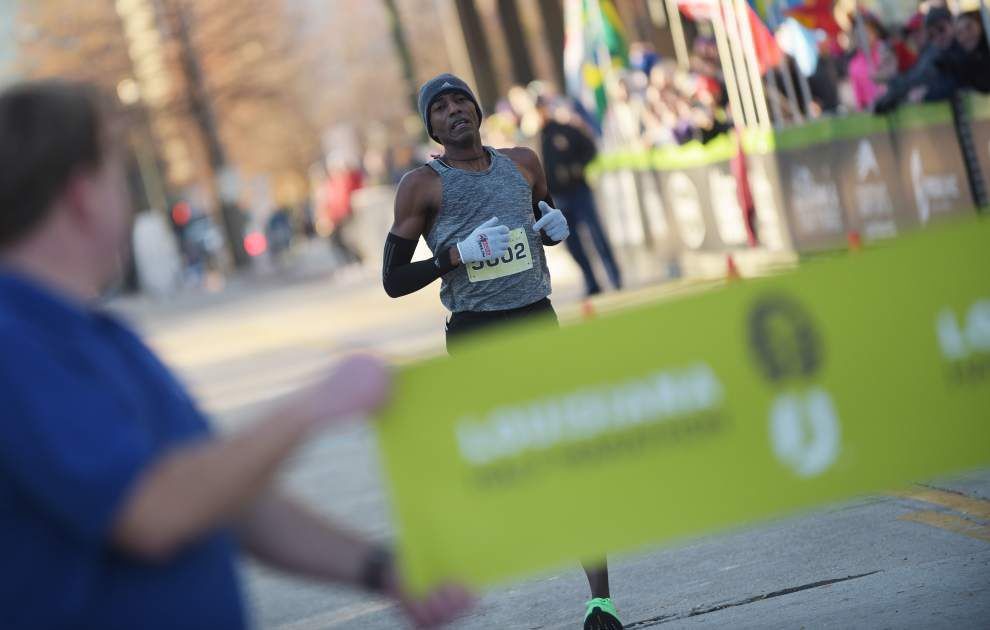
Masks are not required while running the race, but runners are required to wear a mask before starting and after crossing the finish line. Runners are also encouraged to bring their own personal hydration in order to reduce potential contact. Cups of water will still be available at the various aid stations throughout the course, but will not be handed out to runners.
Awards will be based on chip timing, and the results will be posted online after the race. Winners can still claim their hardware from the award’s table, but will be required to verify the results on their phone.
This year marks the 10-year anniversary of the Louisiana Marathon, which has grown substantially since its inception, having featured participants from all 50 states as well as more than 32 countries. The course takes runners on a scenic route through downtown Baton Rouge, the University Lakes, LSU’s campus and several historic neighborhoods along the way.
(03/06/2021) ⚡AMPby Mark Clements
Louisiana Marathon
Welcome to the Louisiana Marathon Running Festival. Rendezvous with runners from 50 states and over 30 countries who share a passion for Louisiana as they race our fast, flat and festive courses. Stick around for the best Finish Fest on the bayou and enjoy tastes of gumbo, jambalaya, étouffée, duck confit and couch du lait (to name a few dishes...
more...Sir Mo Farah opened his 2021 racing season winning the inaugural Djibouti International Half-Marathon
Mo Farah opened his 2021 racing season Friday at the Djibouti International Half-Marathon, winning the race in a time of 1:03:06. This was his first competition since he ran the Antrim Coast Half Marathon on September 12, where he crossed the finish line in 60:27 for the win.
After spending the last seven weeks at a training camp in Ethiopia, this race was meant to be a test of fitness ahead of the Tokyo Olympics, where the four-time Olympic champion will be hunting for another gold medal.

The Djibouti Half-Marathon is a special race for the 37-year-old, because it’s a chance for him to run in the place where he spent his childhood before moving to Britain. In an interview with Athletics Weekly ahead of the race, Farah was not shy about his goal: he was there to win.

“It’s not just going to be a case of me turning up. It’s going to be tough and there are a lot of decent guys racing so I’ll just go out there and see what I can do,” he said. ““It’ll be good to get back in the right frame of mind in terms of racing again and to test myself.”
As Farah predicted, the race was tough, and he didn’t win it handily. His training partner Bashir Abdi finished only four seconds behind him in 1:03:10, and the top seven men all ran under 1:05.
With the Tokyo Olympic Games only four-and-a-half months away, Farah will now be turning his attention to the track as he prepares to defend his 10,000m Olympic title. With competitors like Joshua Cheptegei, who ran a 26:11.00 for 10K last October, challenging him for the win, this won’t be an easy feat, but Farah told AW that results like that get him “fired up.”
“It’s not just Cheptegei – there’s Jacob Kiplimo, Moh Ahmed – you’ve got so many guys coming through at the moment and I think it’s exciting for the sport to have all of these people at that level.”
While his result in Djibouti was a few minutes off his half-marathon personal best of 59:32 (set in 2015), Farah did exactly what he set out to do, which was to test his fitness and win the race. With that goal accomplished, it’s safe to say that Farah is progressing well toward the Olympics, and we look forward to seeing what he will do on the track this summer.
(03/06/2021) ⚡AMPby Brittany Hambleton
5 benefits of running with a dog
If you have a dog, you probably take him or her running from time to time, and although you might not think about it too much, your furry little friend can be a pretty big help when it comes to training. Dogs are always there for you, they keep you active and they might even stop you from going too hard on easy days. The pros of running with a dog certainly outweigh the cons, so here are five benefits of bringing your four-legged training partner along for runs.
You always have a running buddy
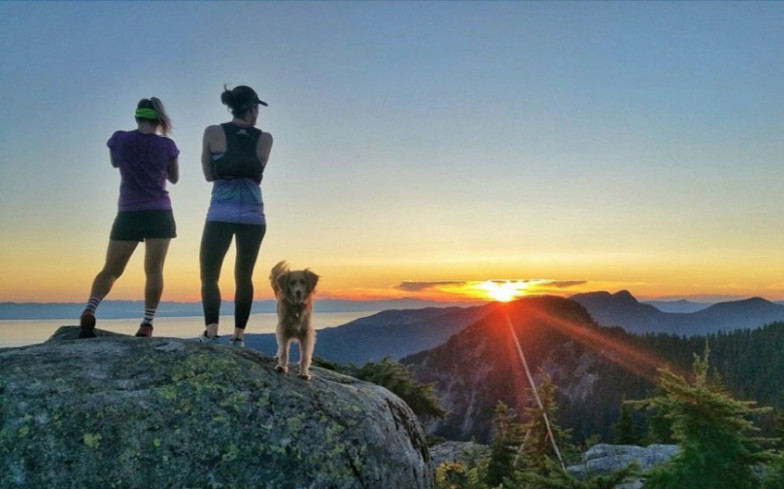

Regardless of the time of day, the weather or any other factors that might prevent your human training partner from joining you for a run, your dog will always be ready for an outing. Dogs are never not happy to go outside and be active, and because of that, you always have a running buddy if you have a dog.
You can blame them for the bad runs
As one Twitter user pointed out, you can blame your dog if you have a bad run. Before you get upset thinking about runners pointing the finger at anyone other than themselves after bad days, think about it: a dog wouldn’t care even if he knew that’s what his owner was doing. We don’t recommend making excuses on Strava, but if you’re set on coming up with one, saying that your dog was lollygagging and slowing you down is pretty believable.
They keep you accountable
Human training partners are great for keeping you accountable, because if you make plans to meet up for a run, you will be letting other people down when you don’t show up. If you think about it, dogs can keep you accountable, too. They grow accustomed to their daily schedule, and if you slack and skip a few runs, it’ll get to them. They’ll be energetic and restless, and the only way to solve that problem is by taking them for a run.
You can’t overdo it
You probably aren’t going to take your dog out on your hard sessions, so they’re reserved for easier runs. While some dogs can hammer out a quick 10K, many of them are more comfortable running at a slower pace. If you run alone, you might push too hard on easy days, but with a pup by your side, you’ll be more conscious of your pace.
The silent training partner
It’s great having running buddies, but sometimes you just want to run in silence. That’s why dogs are ideal training partners, as they keep you company without talking your ear off.
(03/06/2021) ⚡AMPby Running Magazine
Barefoot half-marathon records goes down again
We encourage everyone to get outside and run in the winter, with one golden rule: layer up. As long as you’ve got the right gear, winter running can actually be quite enjoyable. But while most of us are pulling on our thermal tights and socks, there are a few runners who have been doing the exact opposite. In the last few weeks, the barefoot half-marathon on snow record has come down not once, not twice, but three times, after being left untouched for years. The most recent attempt was done by Max Weigand in Basil, Switzerland, where he smashed the most recent record by 28 minutes, completing the 21.1-kilometre distance in 1:12:38.
Until this year, the barefoot half-marathon record belonged to Dutch athlete Win Hof, who ran a time of 2:16:34 in 2007. Seemingly no one has attempted to break this record in the last decade (and if they did, they were unsuccessful) until earlier this year, when Jonas Felde Sevaldrud of Norway lowered the record by more than 30 minutes, clocking a 1:44:58. Then, less than one month later, Quebec runner Karim El Hayani broke the record yet again, this time coming in at 1:40:49. Right around the same time El Hayani was making his record-breaking attempt, Weigand was across the ocean doing the same thing.
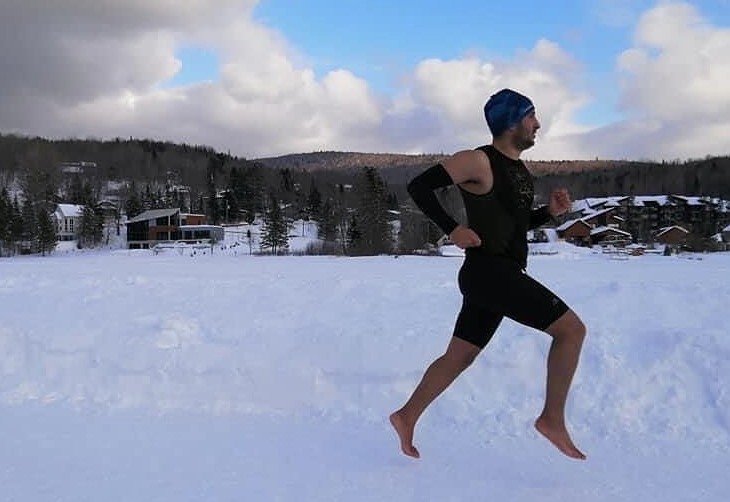
Weigand is originally from Germany, and formerly ran for the German National Track Team. While he no longer runs competitively, running is clearly still a big part of his life, and his background in competitive running gave him the leg-up on the record. He created a video to document his attempt, in which he claimed that he was in shape to run about 1:10 for the half if it were on an actual course, but was expecting to be much slower in the snow without shoes. To train for his attempt, Weigand ran all winter with no shirt to help him get used to the cold (usually keeping his shoes on), and once they finally had some snow in Switzerland, it was go-time.
Running circles around a small field, he completed the first kilometre far ahead of his goal pace in 3:15, but decided that he felt good enough to keep going. According to Weigand, his training for the run made the cold outside temperature not a problem, but of course, the real struggle was his cold feet, which really started to become a problem after the 10K mark. At that point, he described the feeling as “running on needles”, and said it was the most painful thing he’s ever experienced in his life. The sun finally came out with two kilometres to go, which allowed him to push the pace and close the run in a 3:21 and 3:10.
At this point, neither Sevaldrud’s, El Hayani’s, nor Wiegand’s records have been ratified by Guinness, so we’ll have to wait a while before any of these records become official. With spring right around the corner, if anyone wants to beat Weigand’s attempt, they’re going to have to get out there before the snow melts.
(03/06/2021) ⚡AMPby Running Magazine


